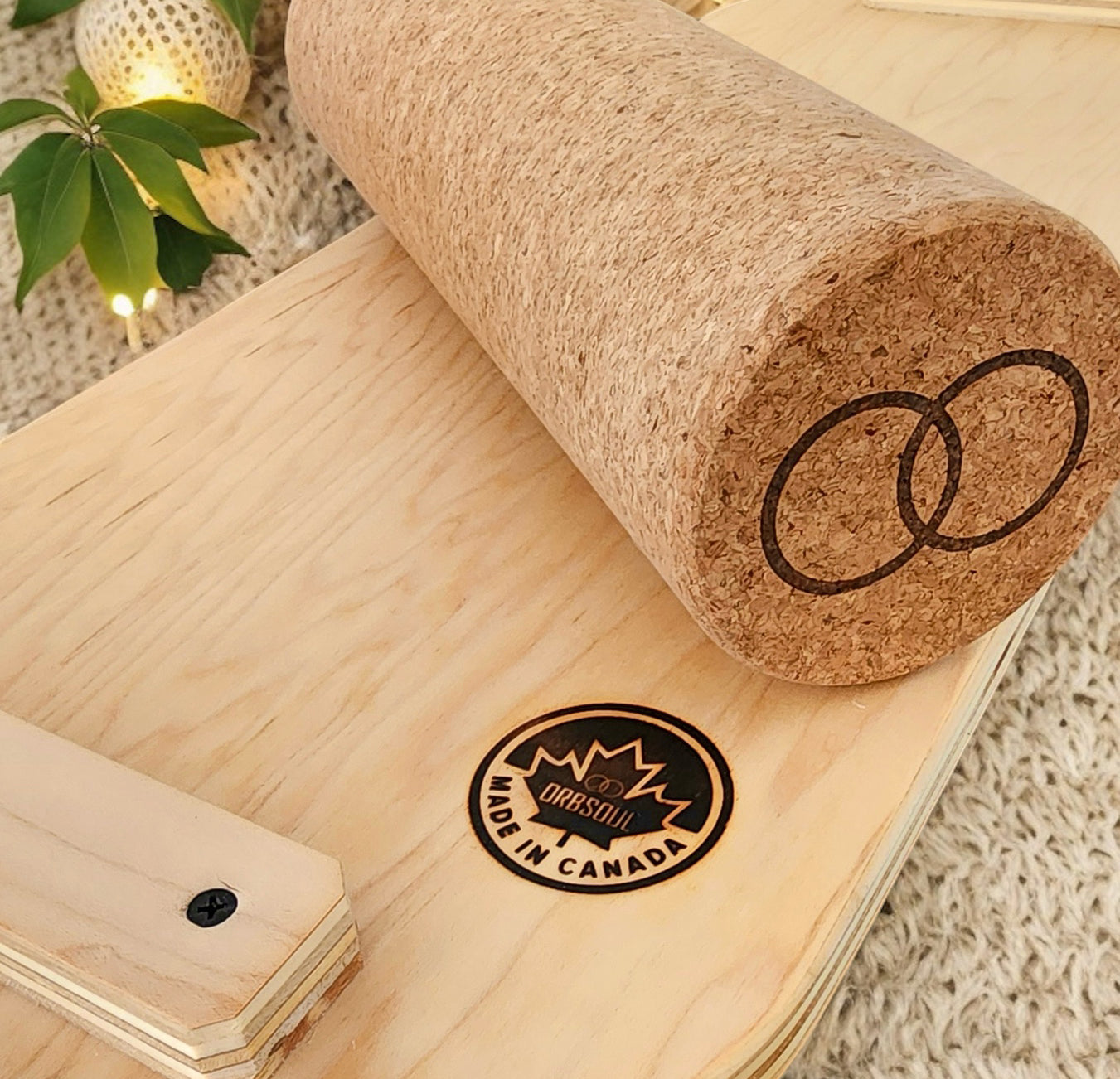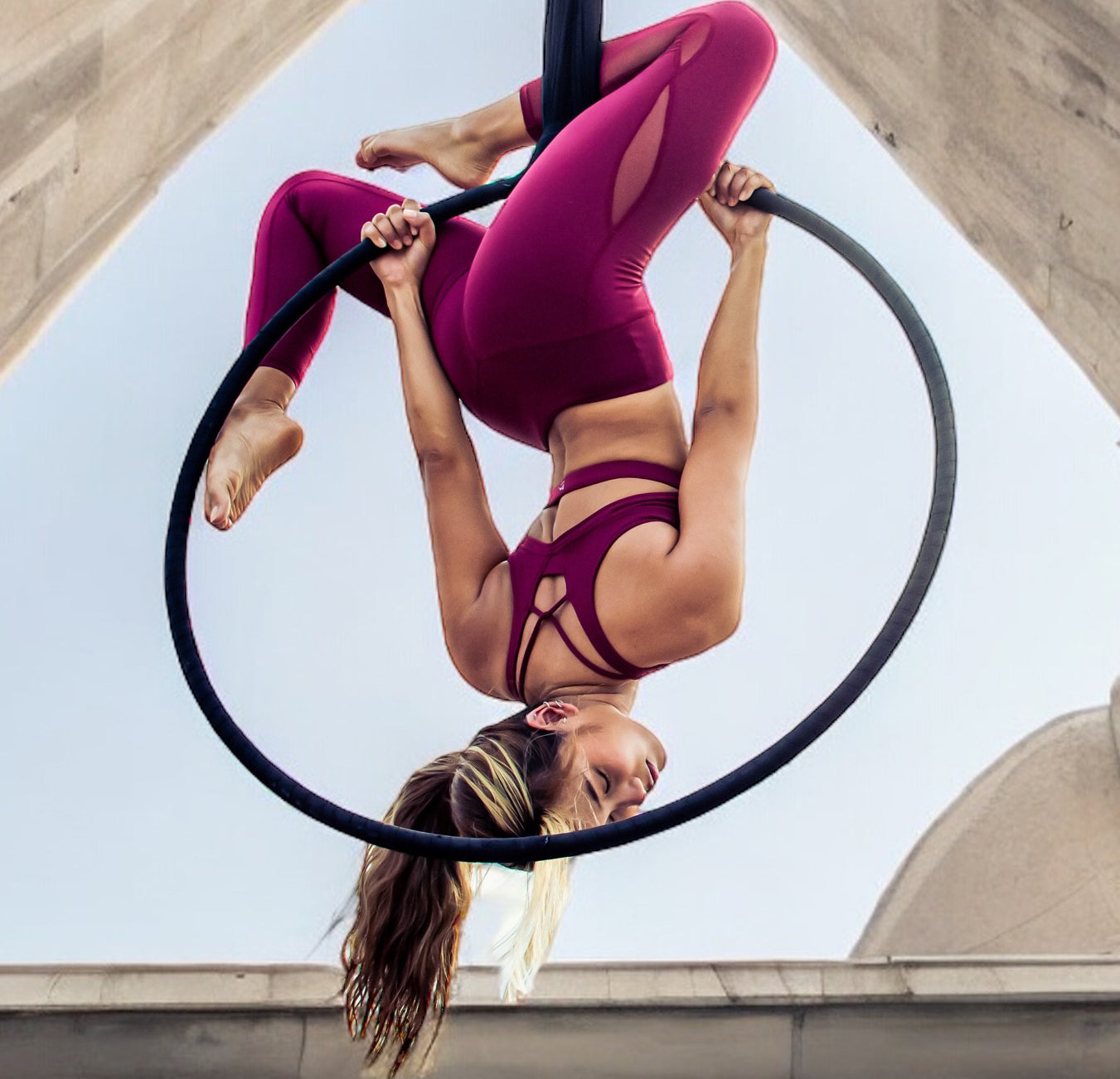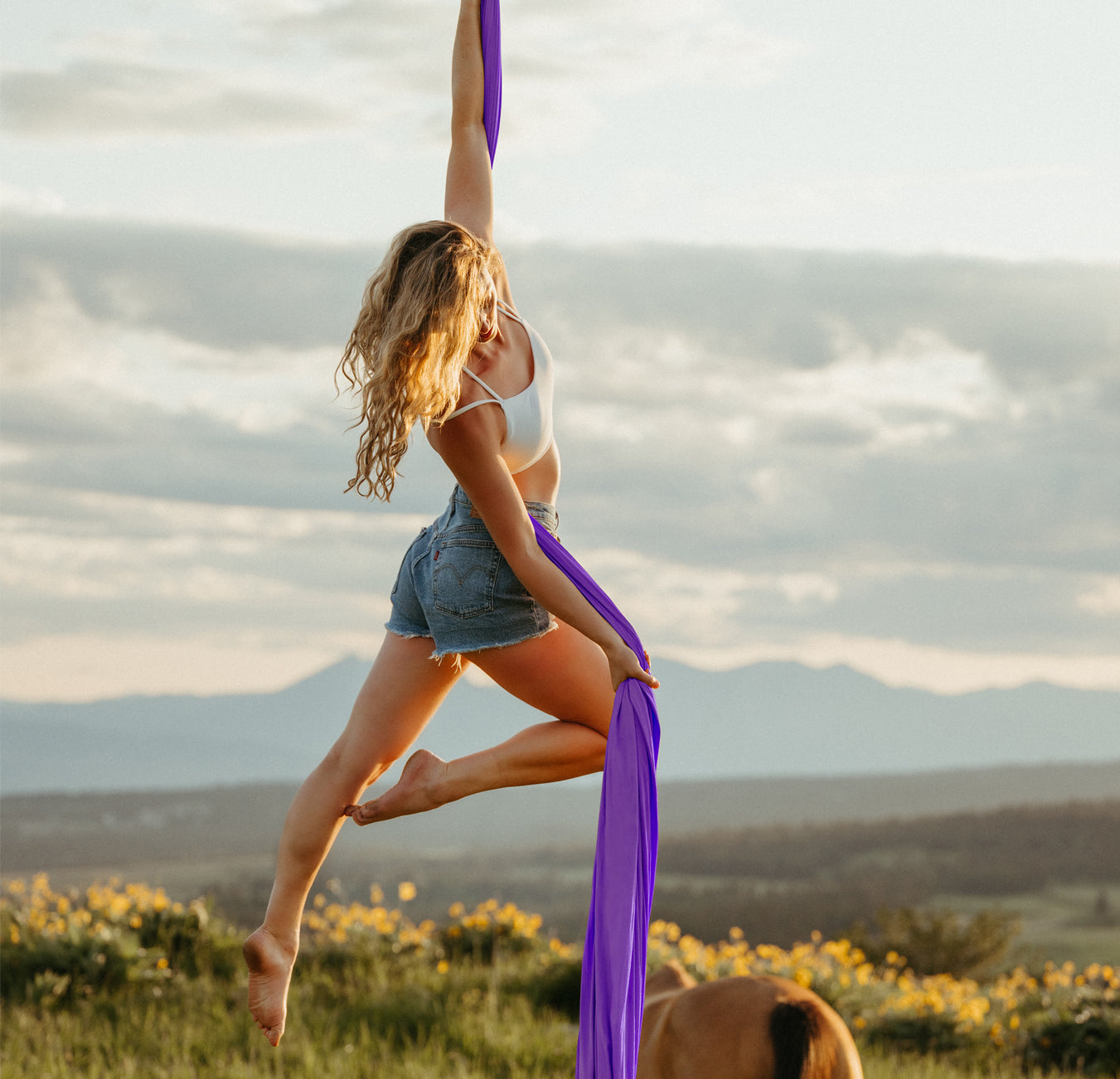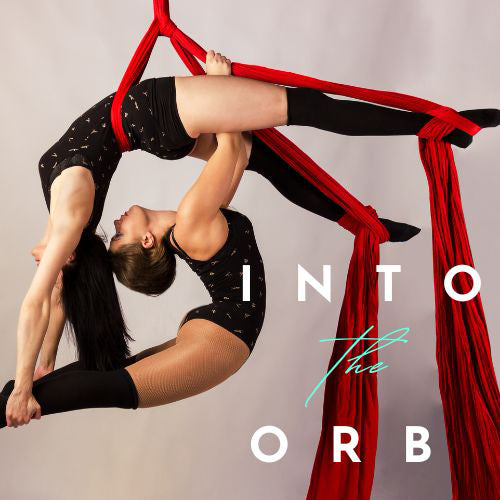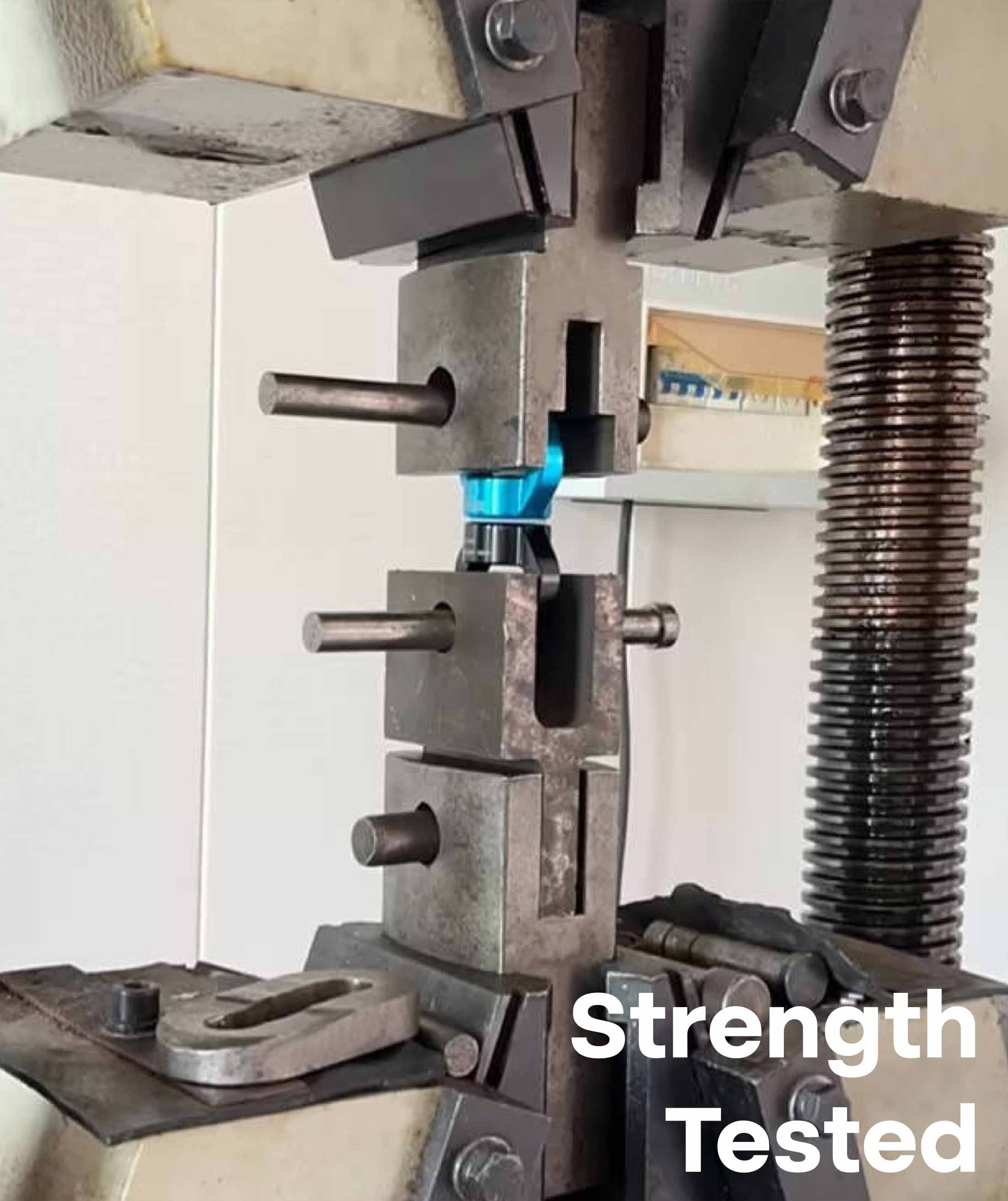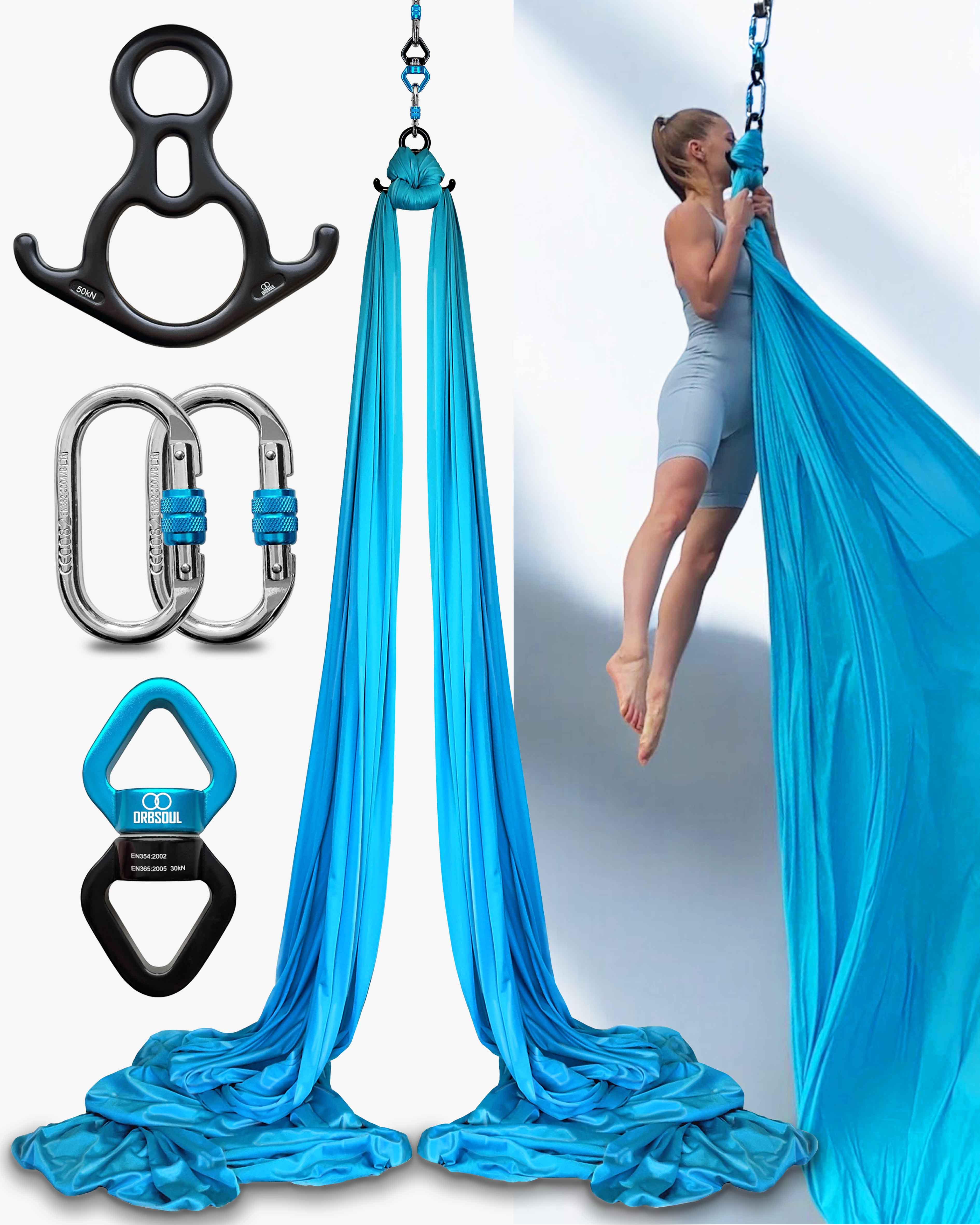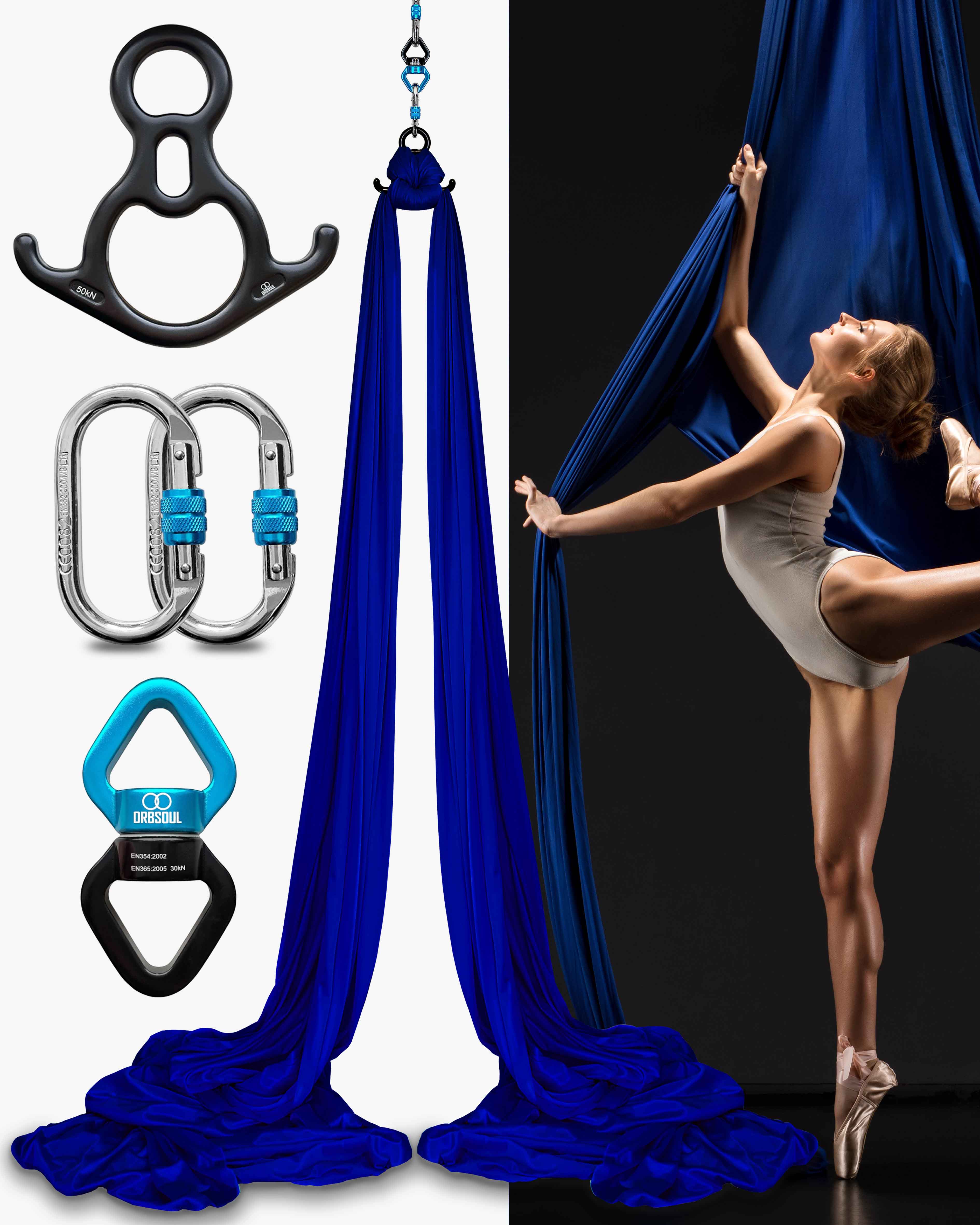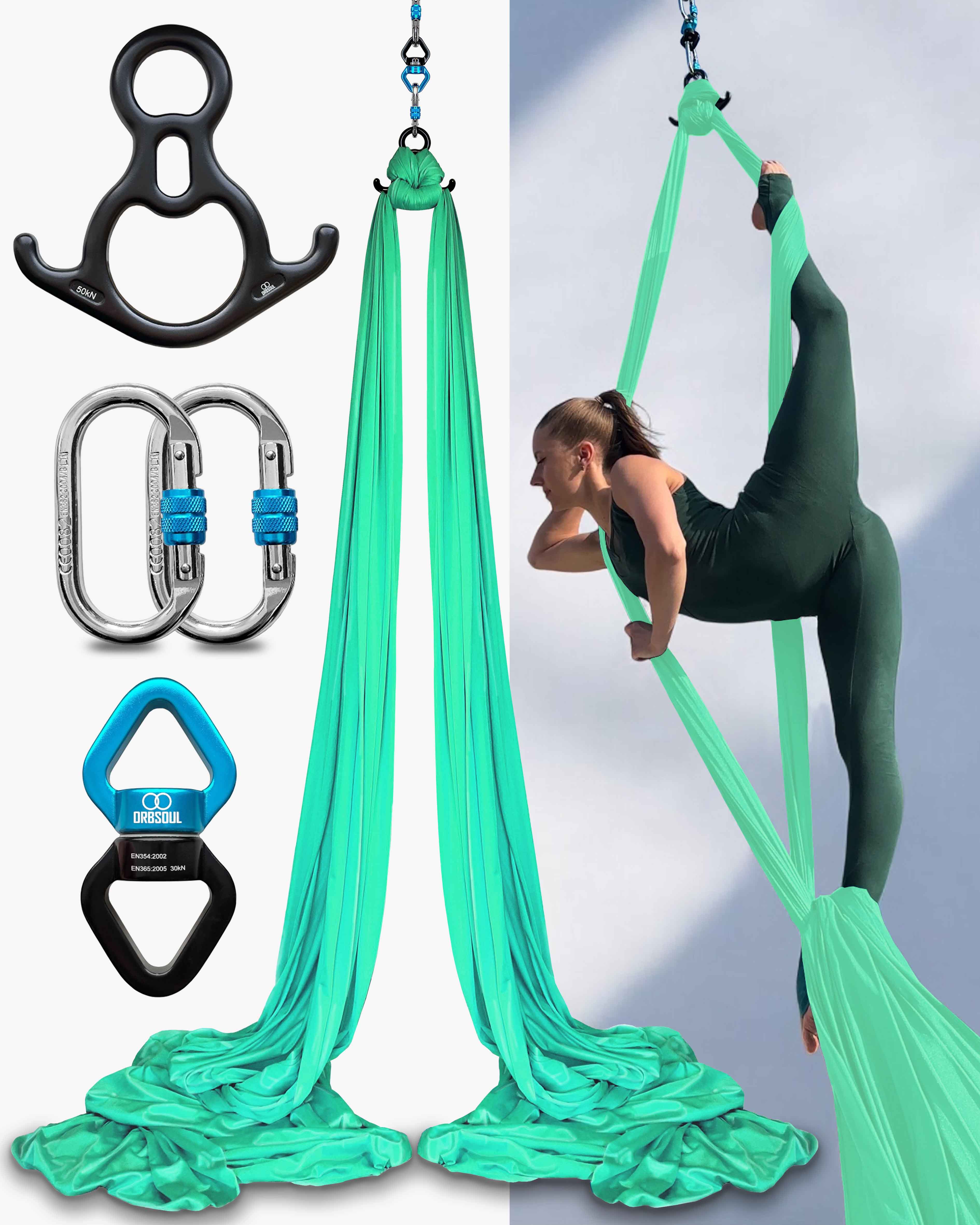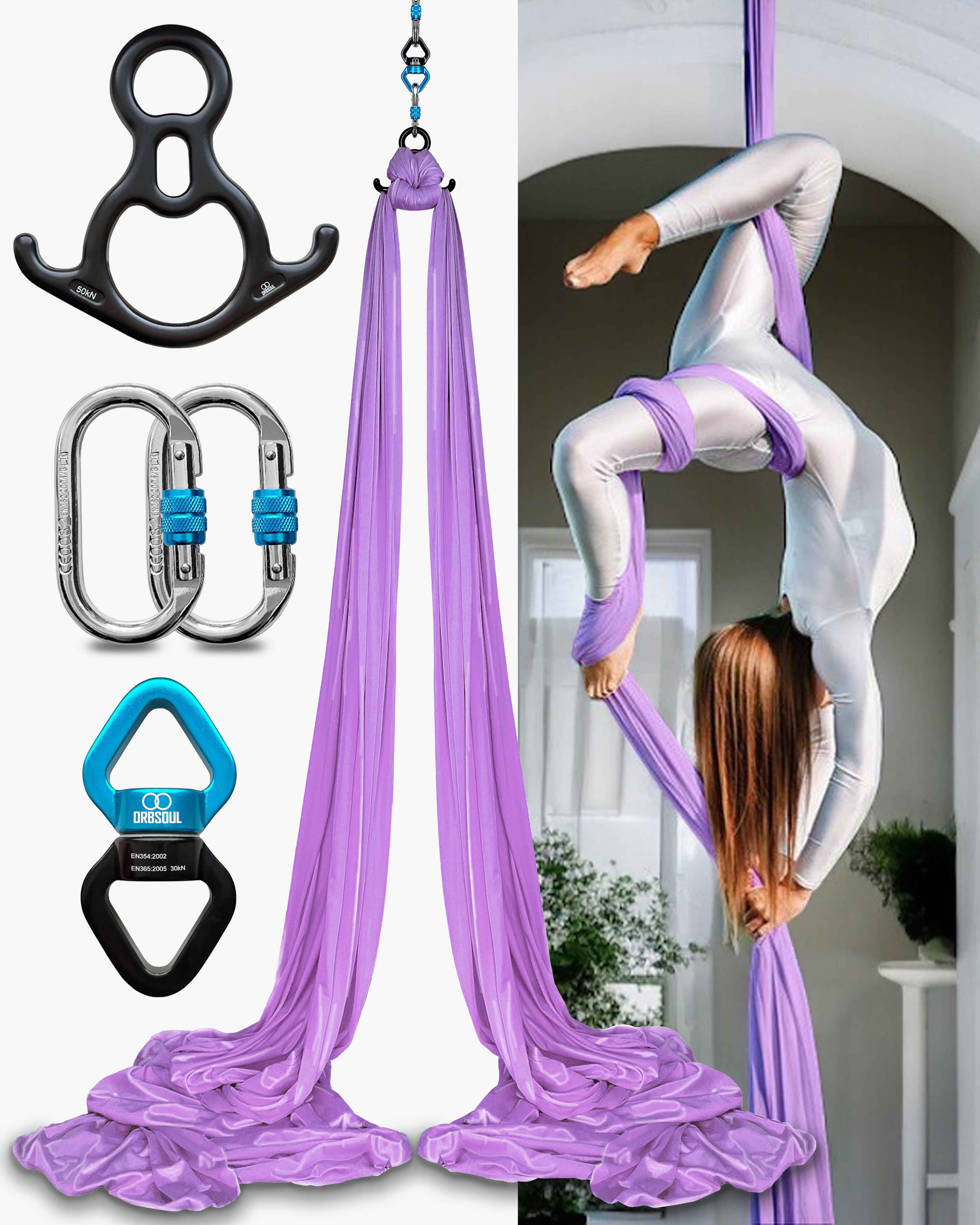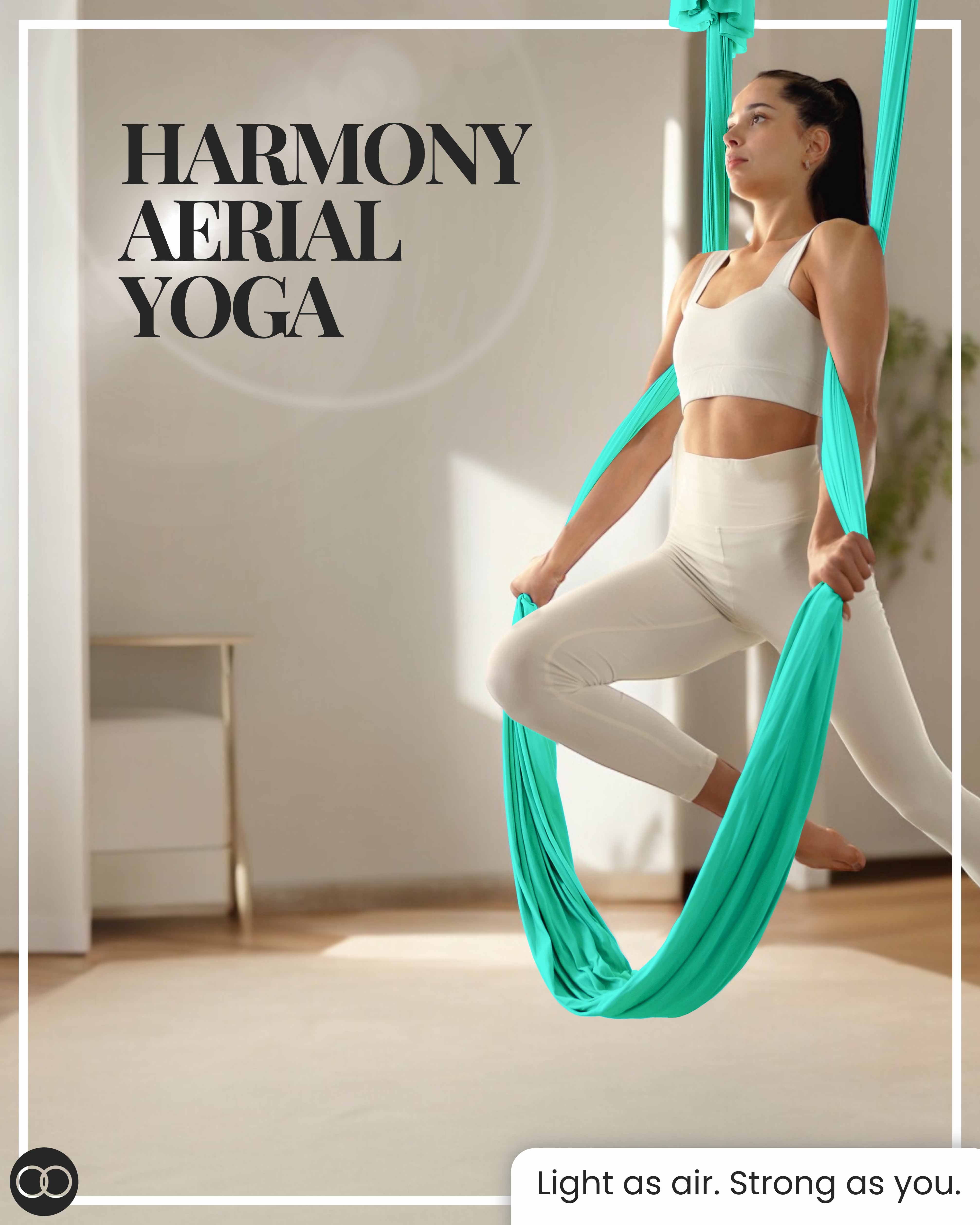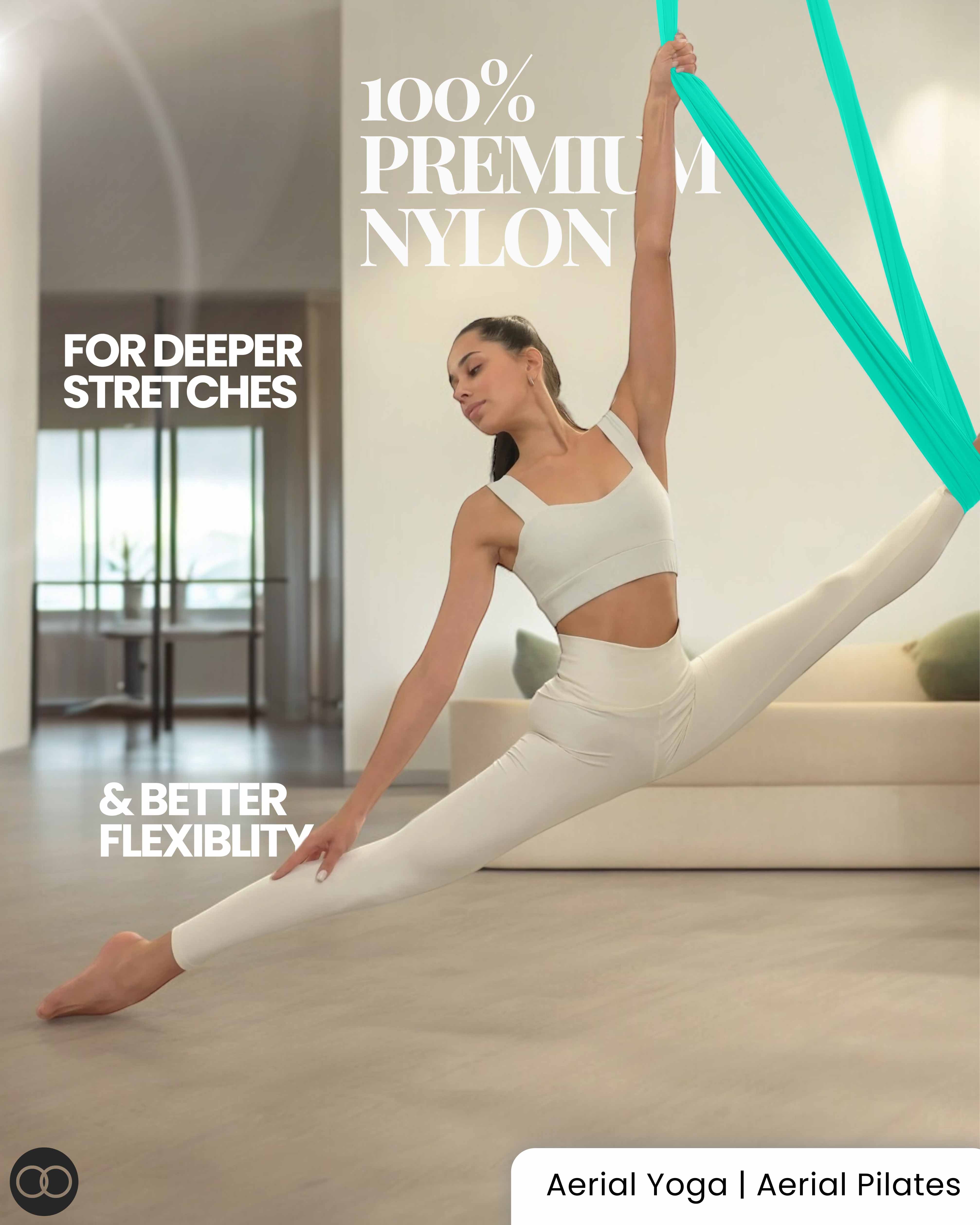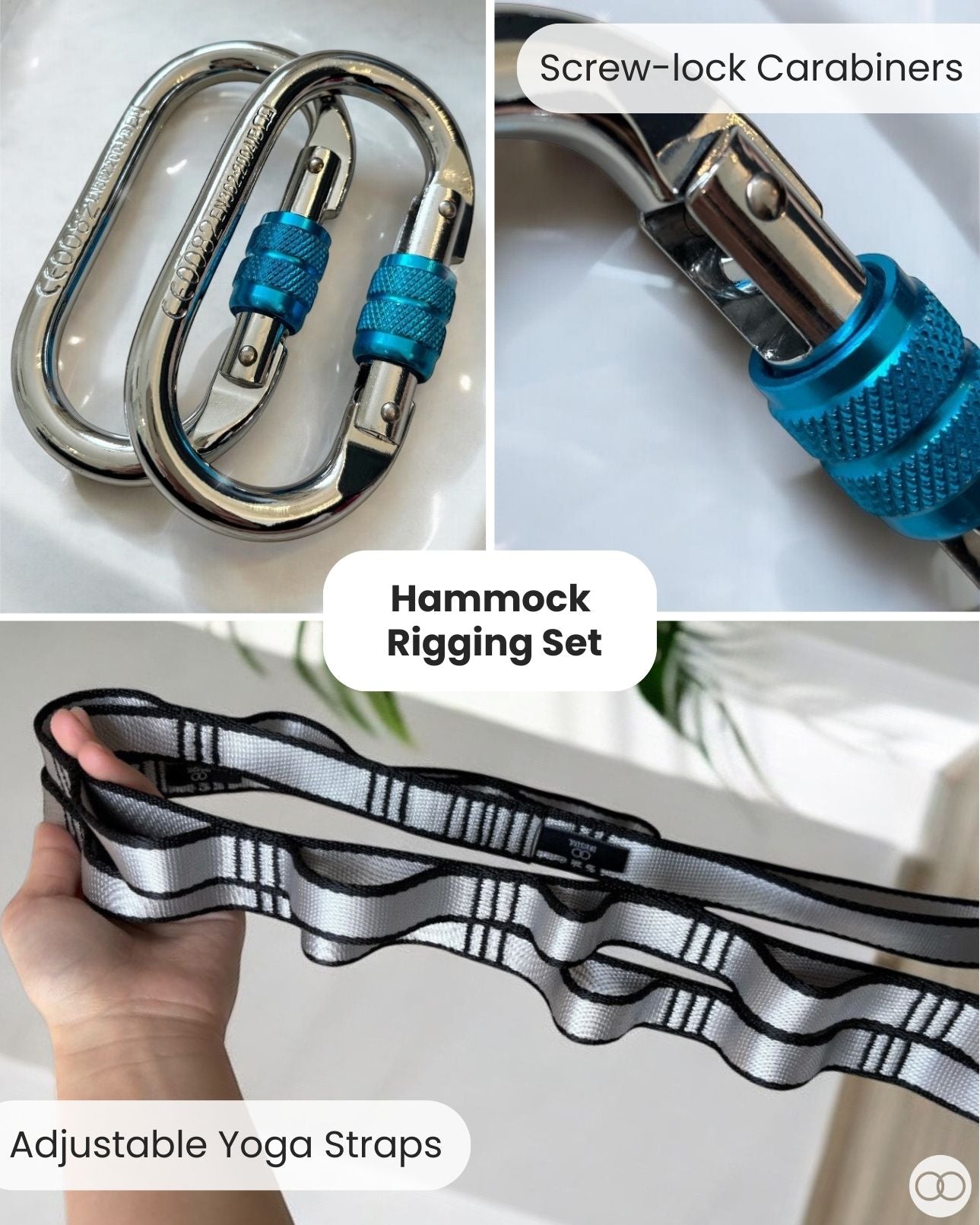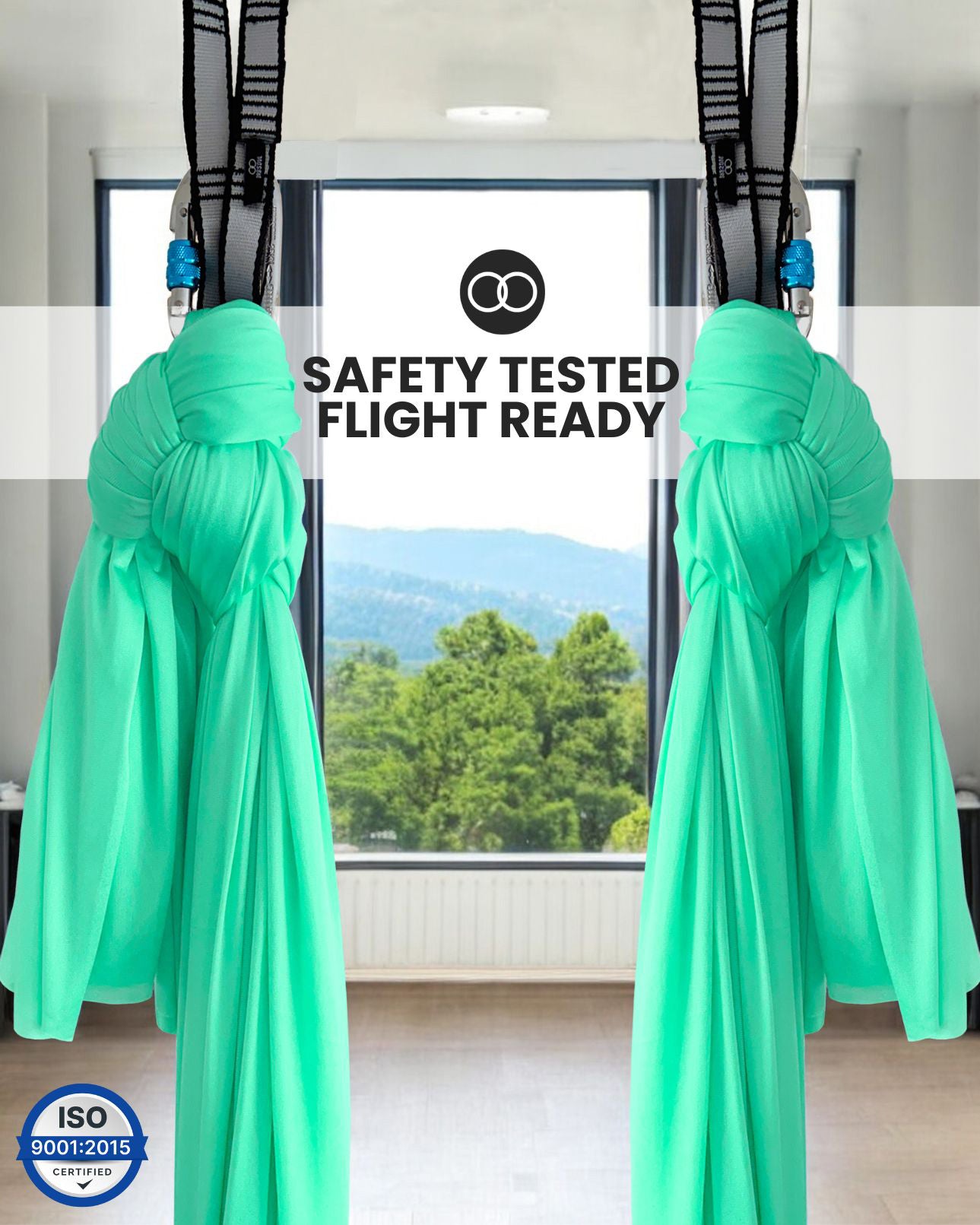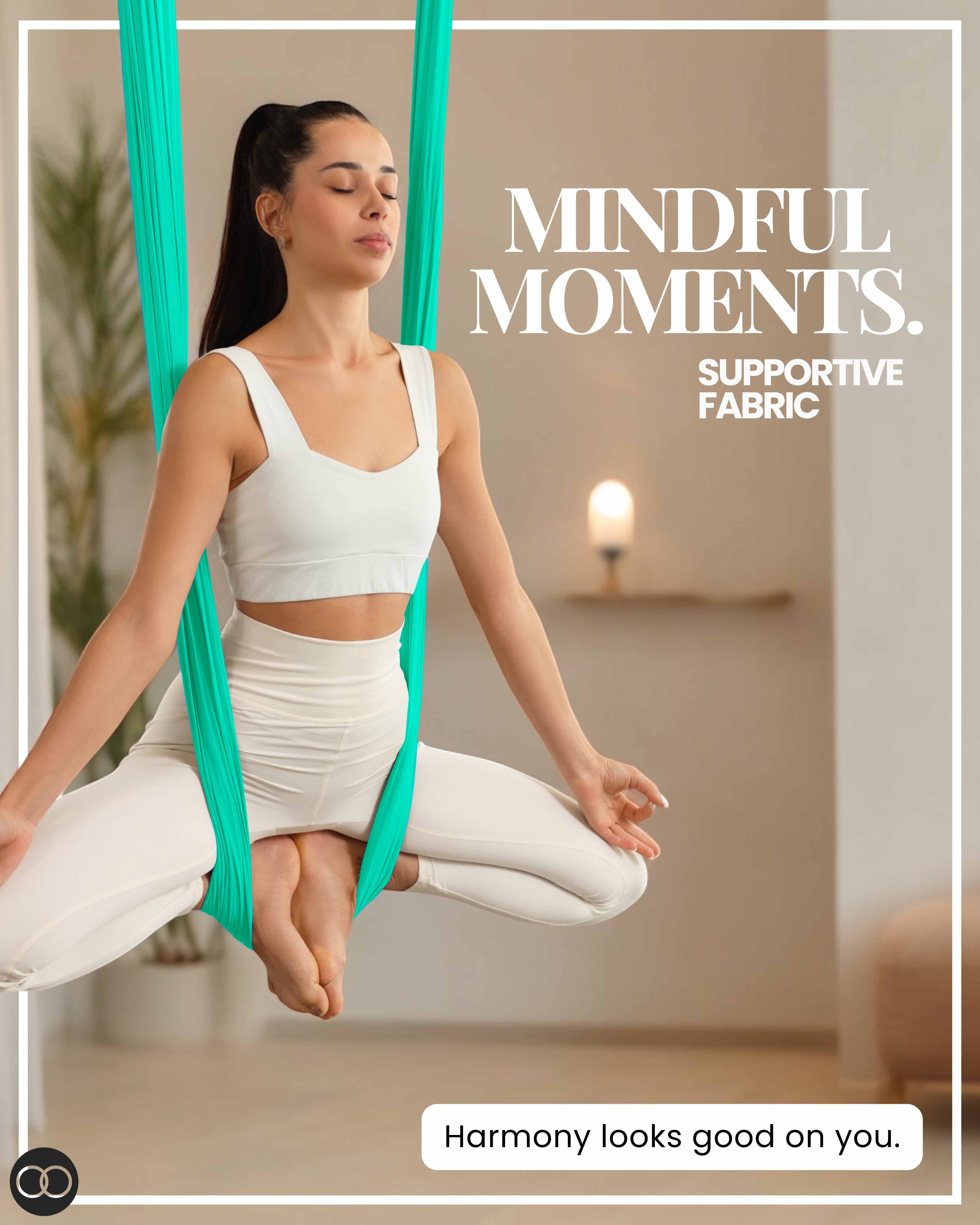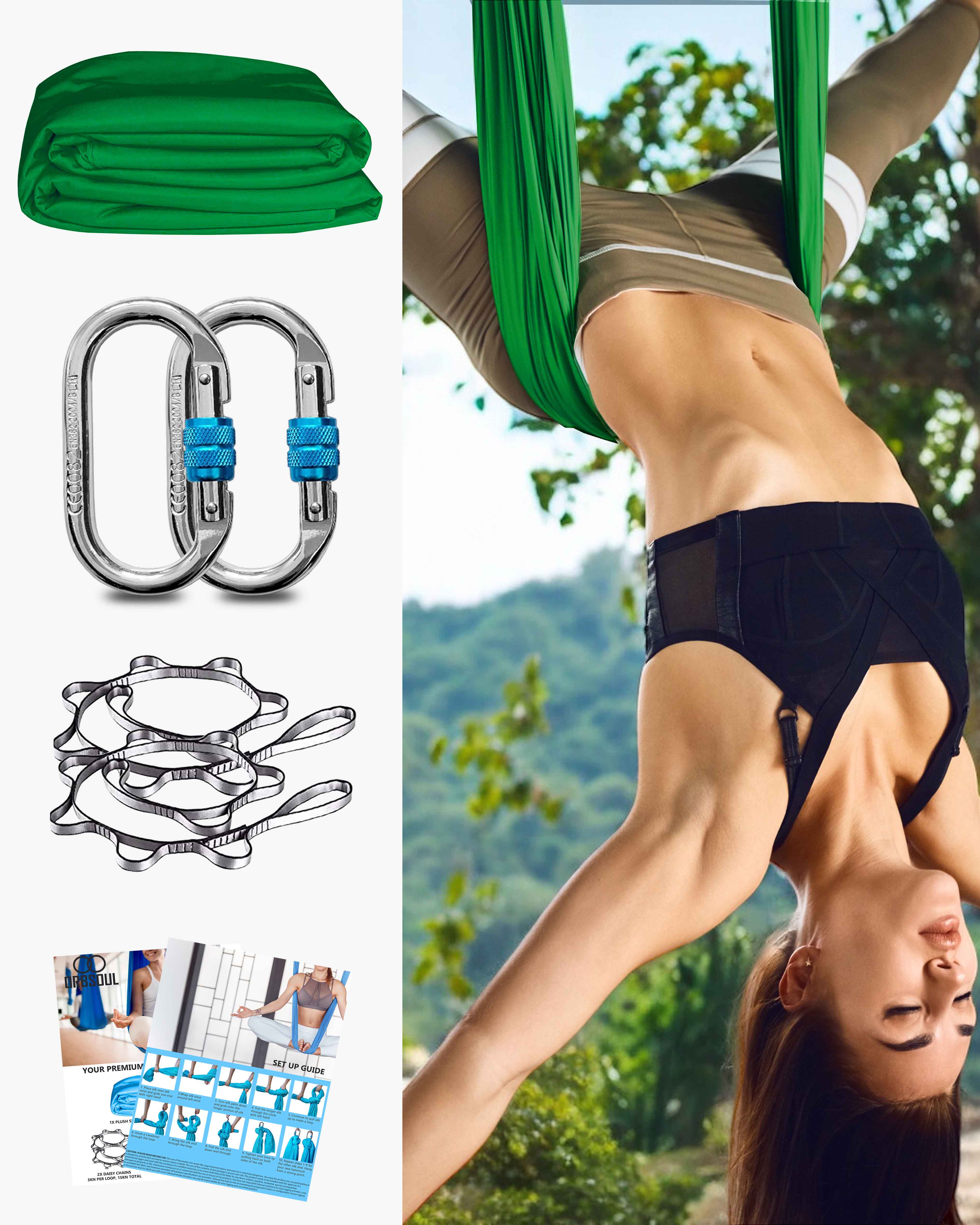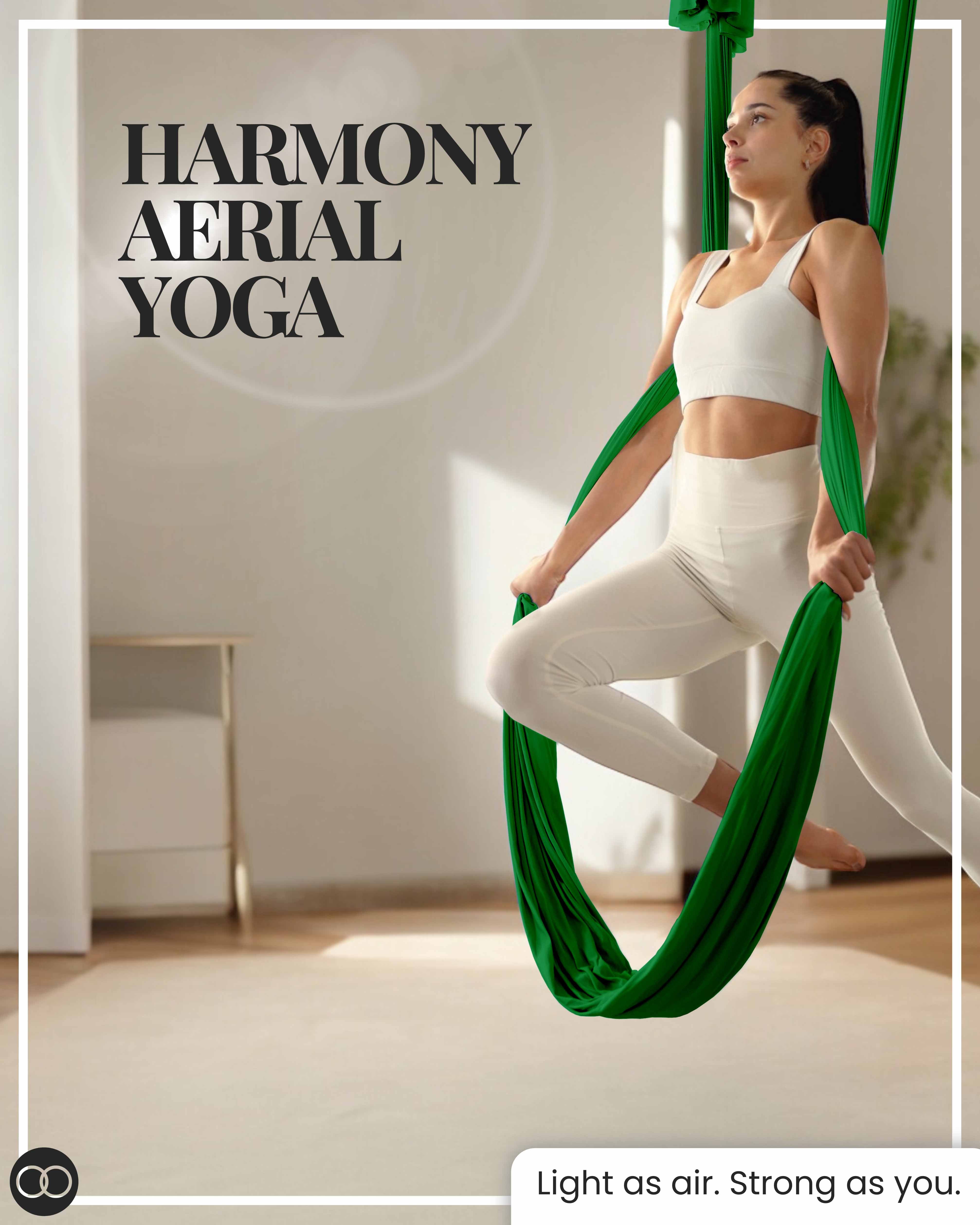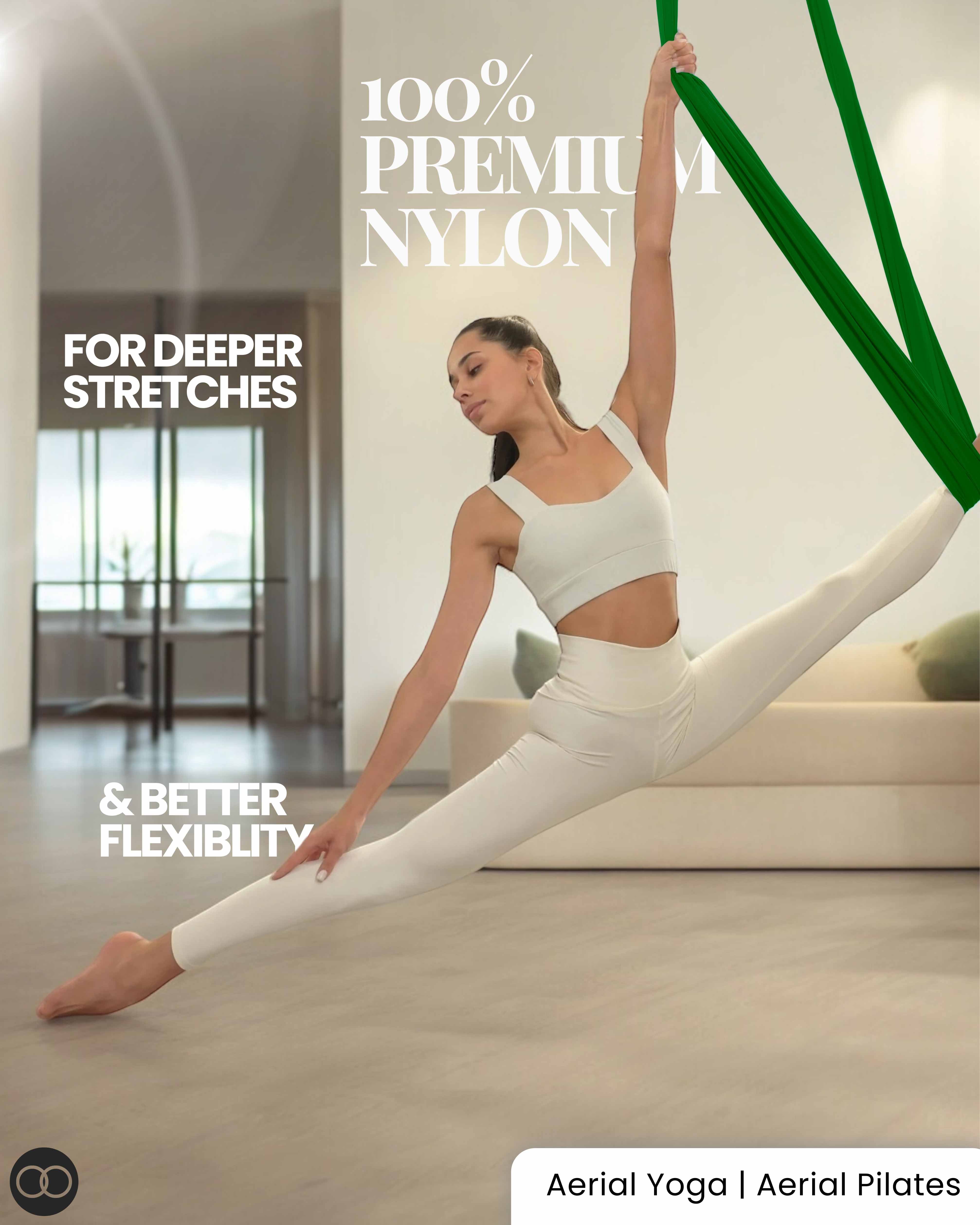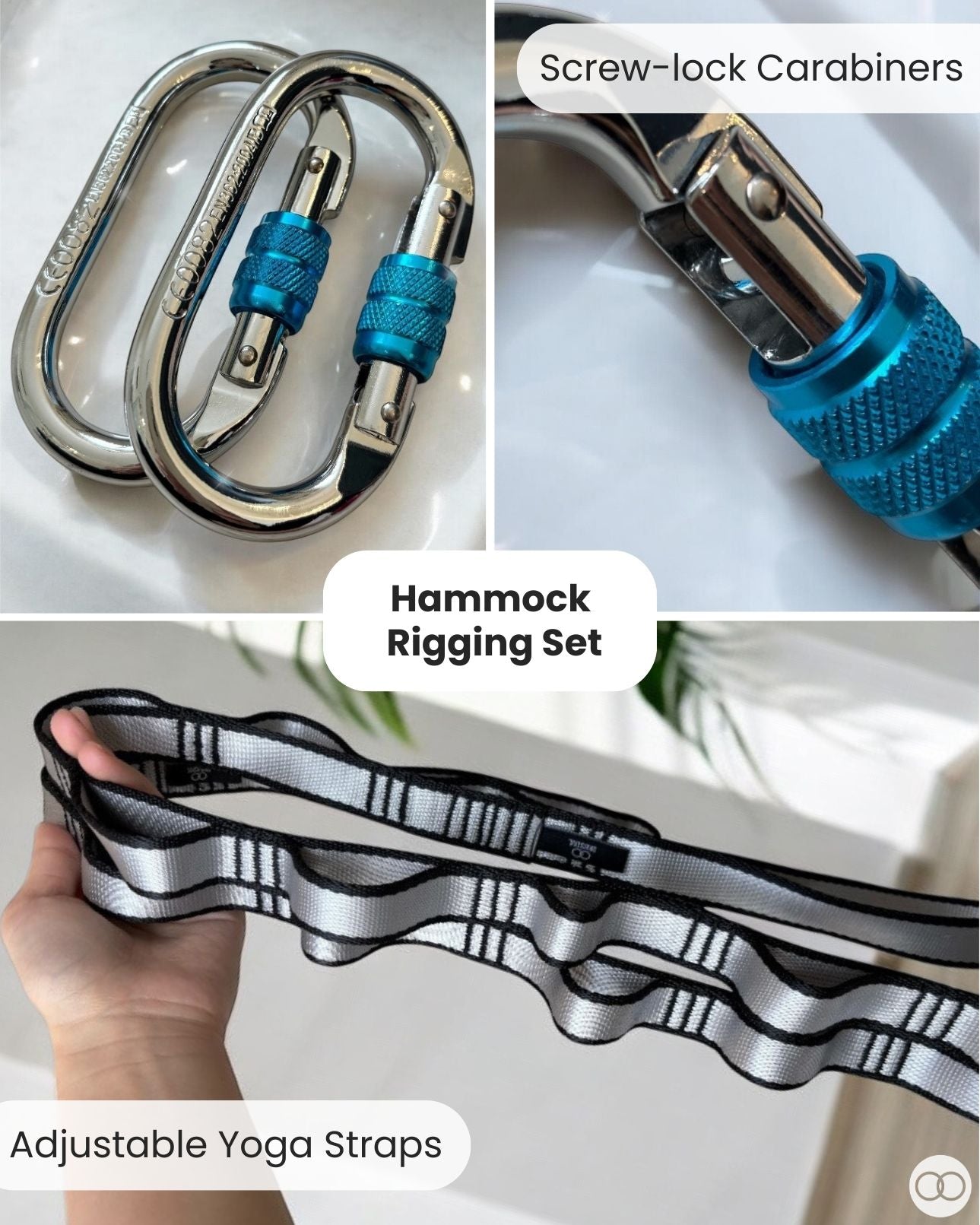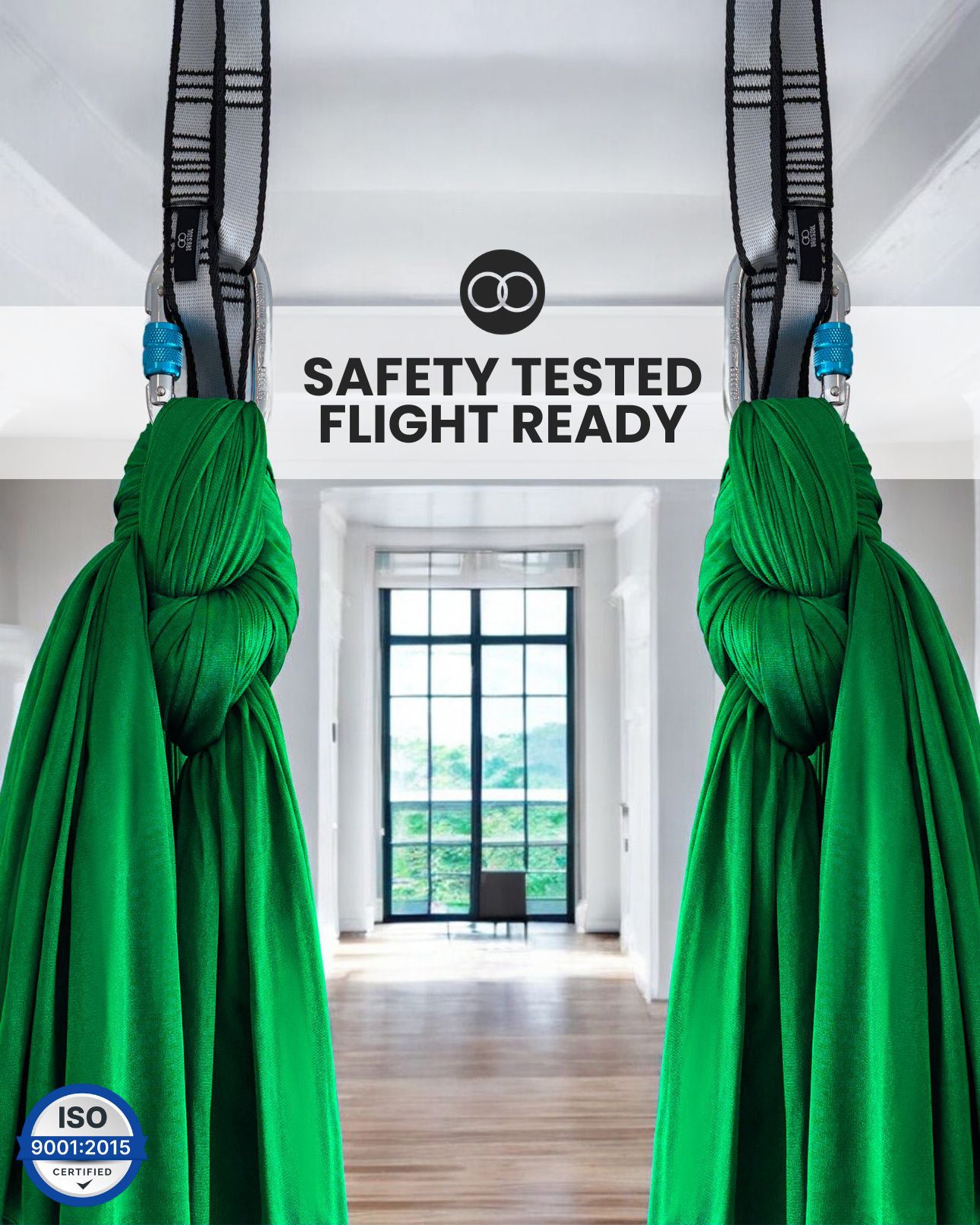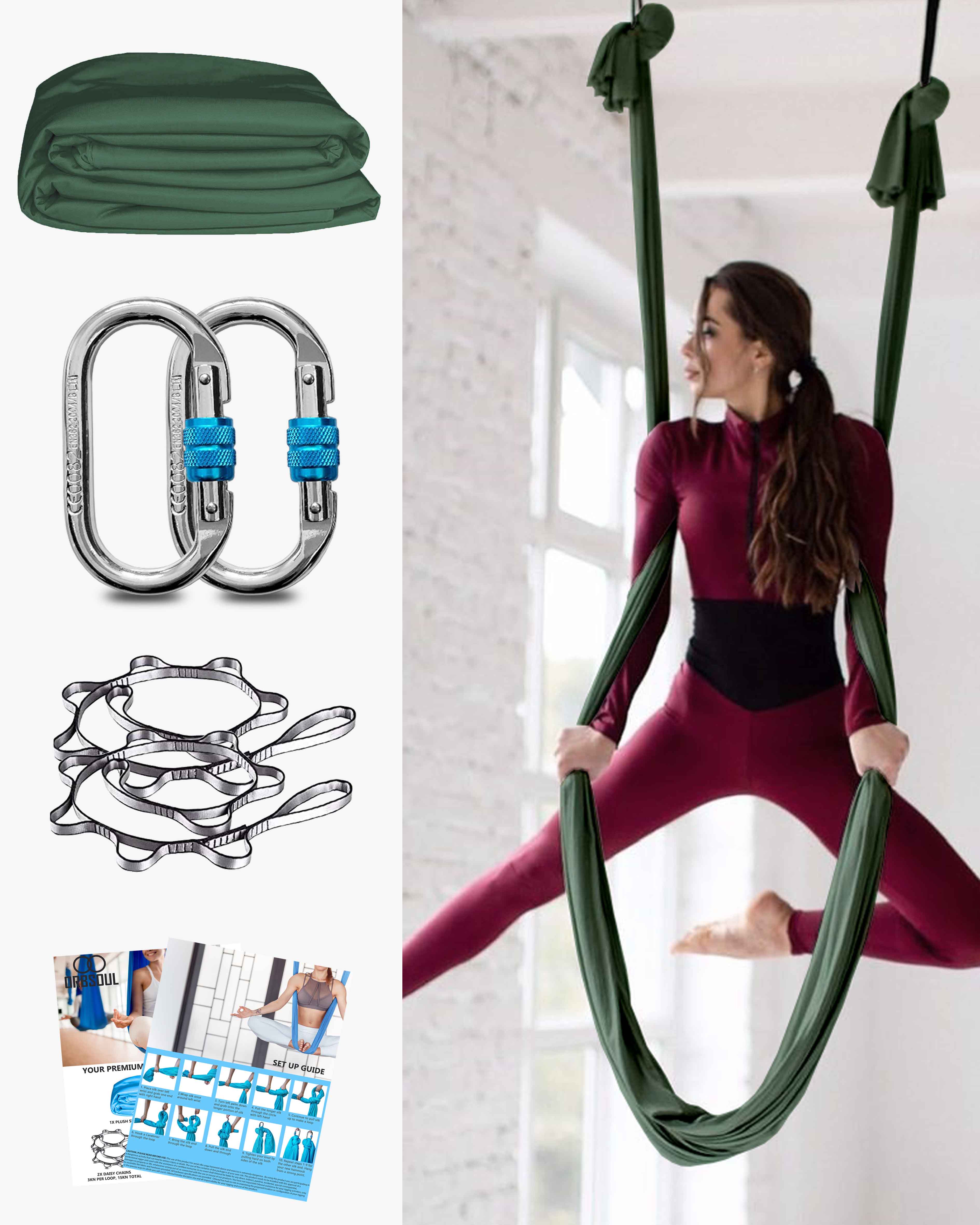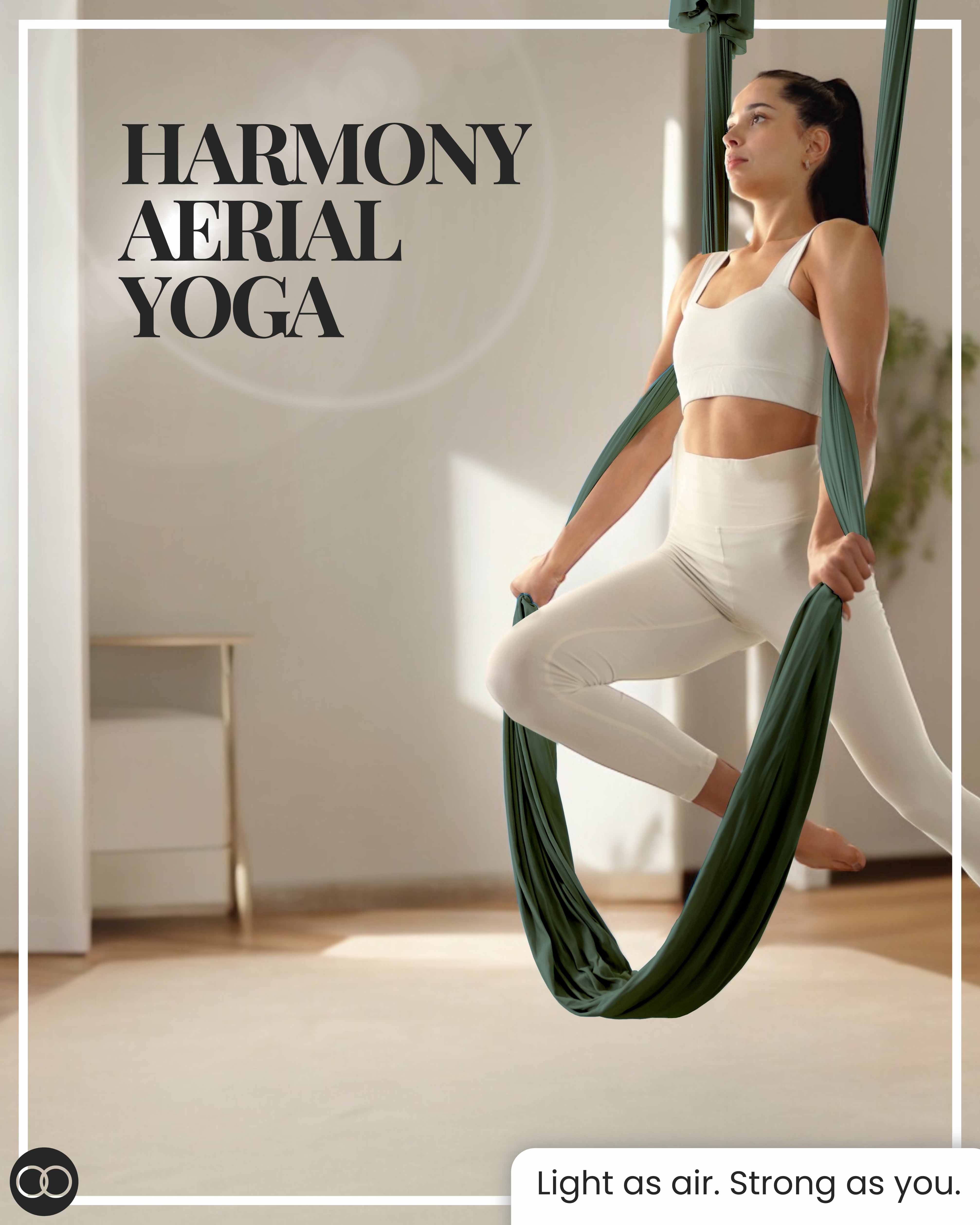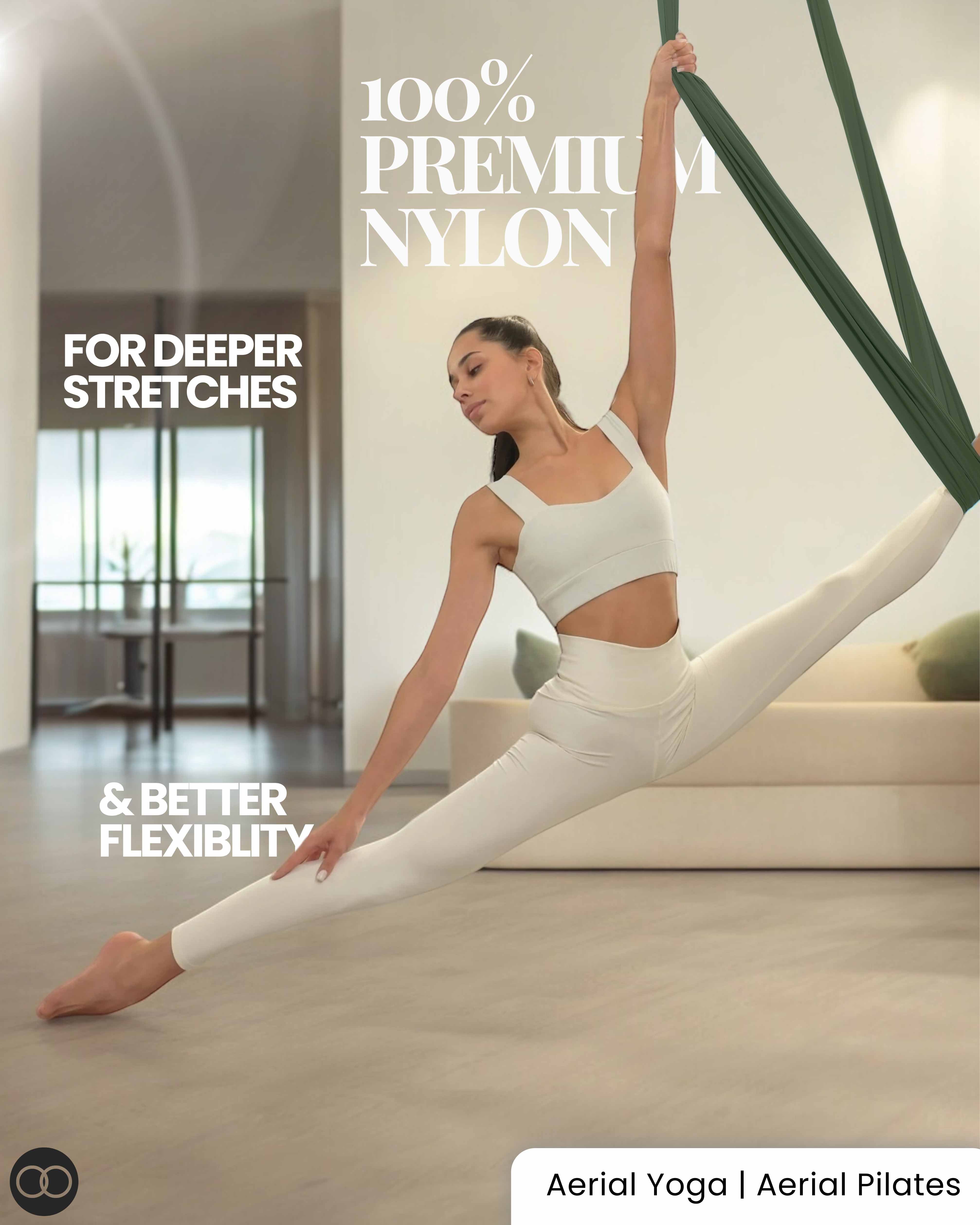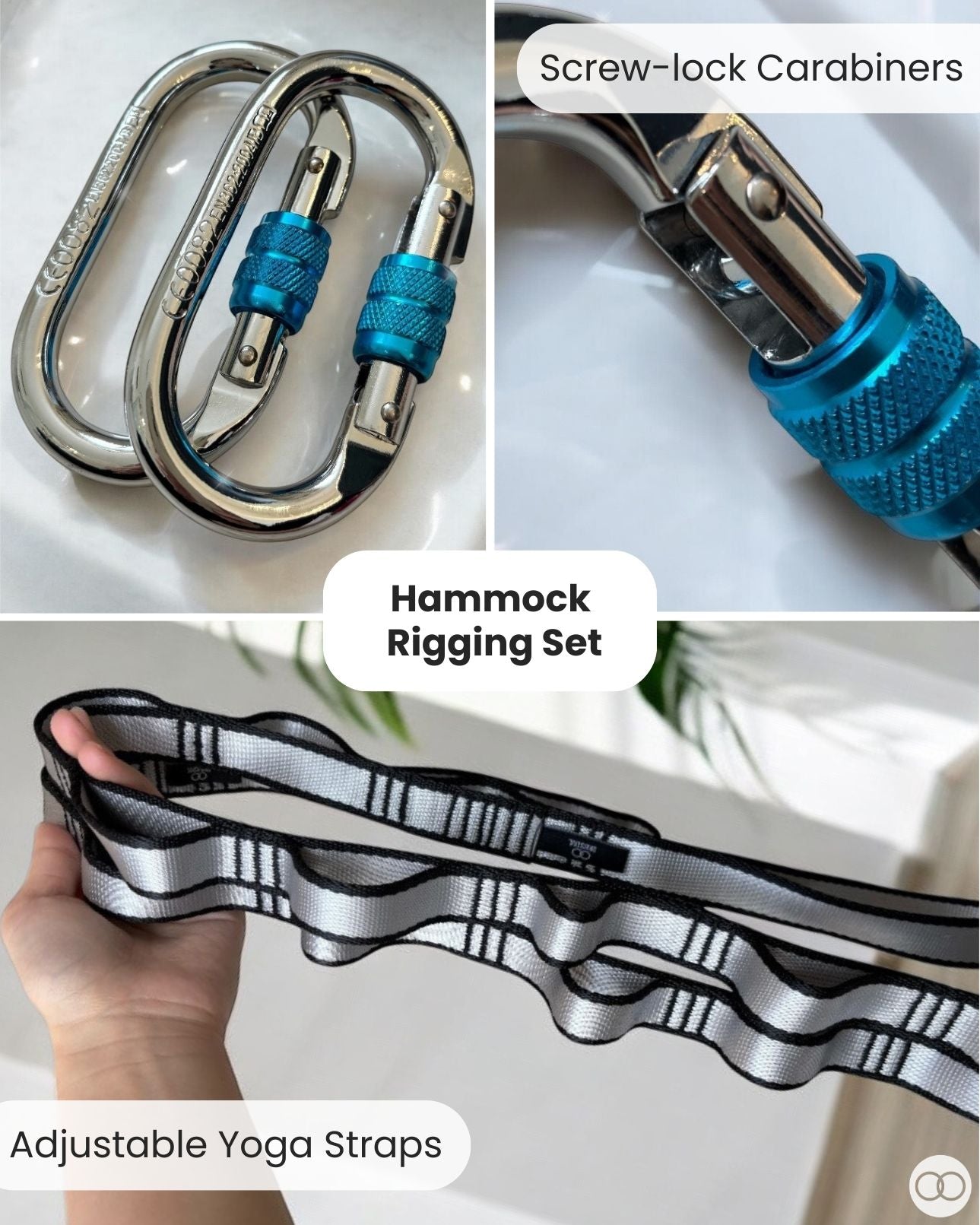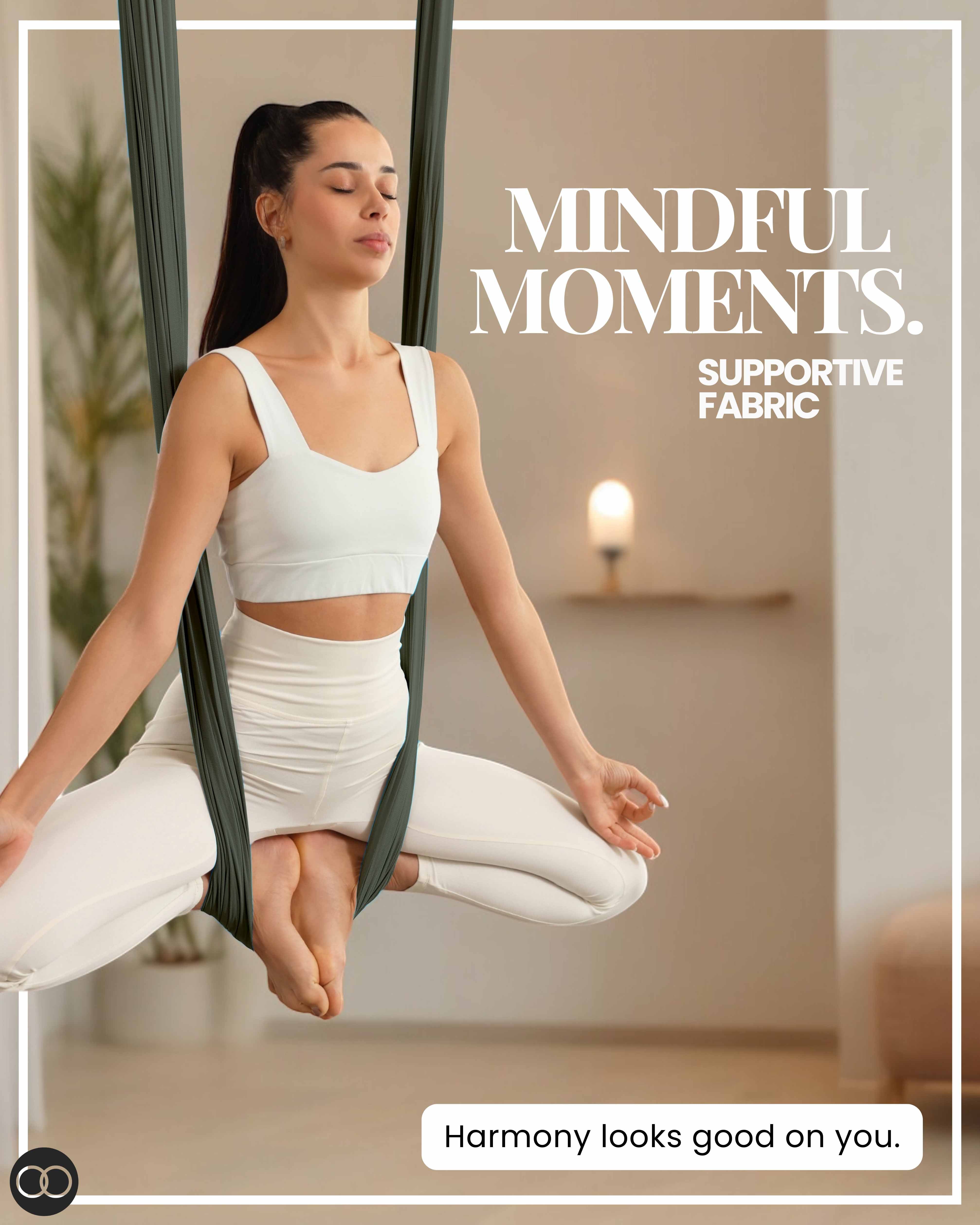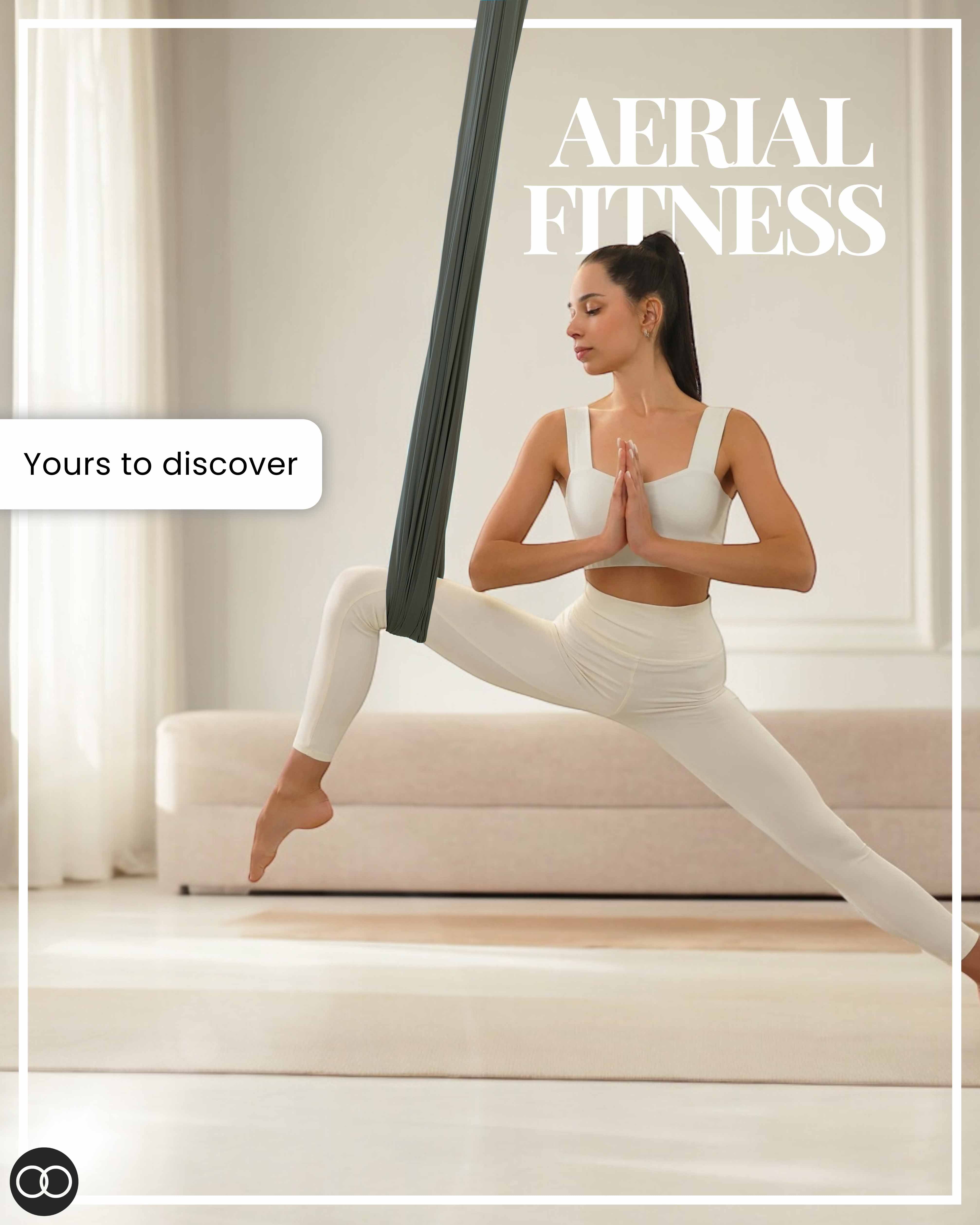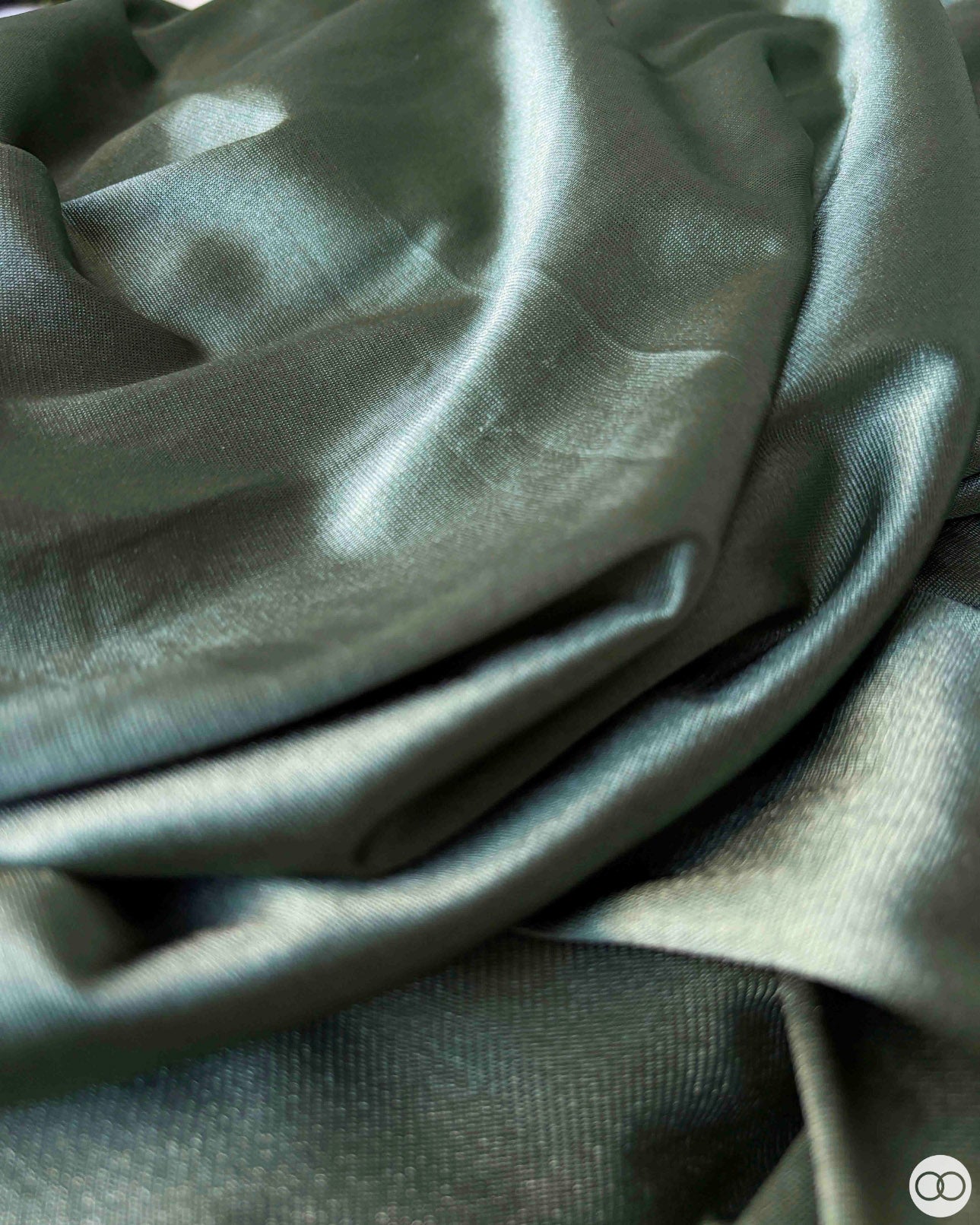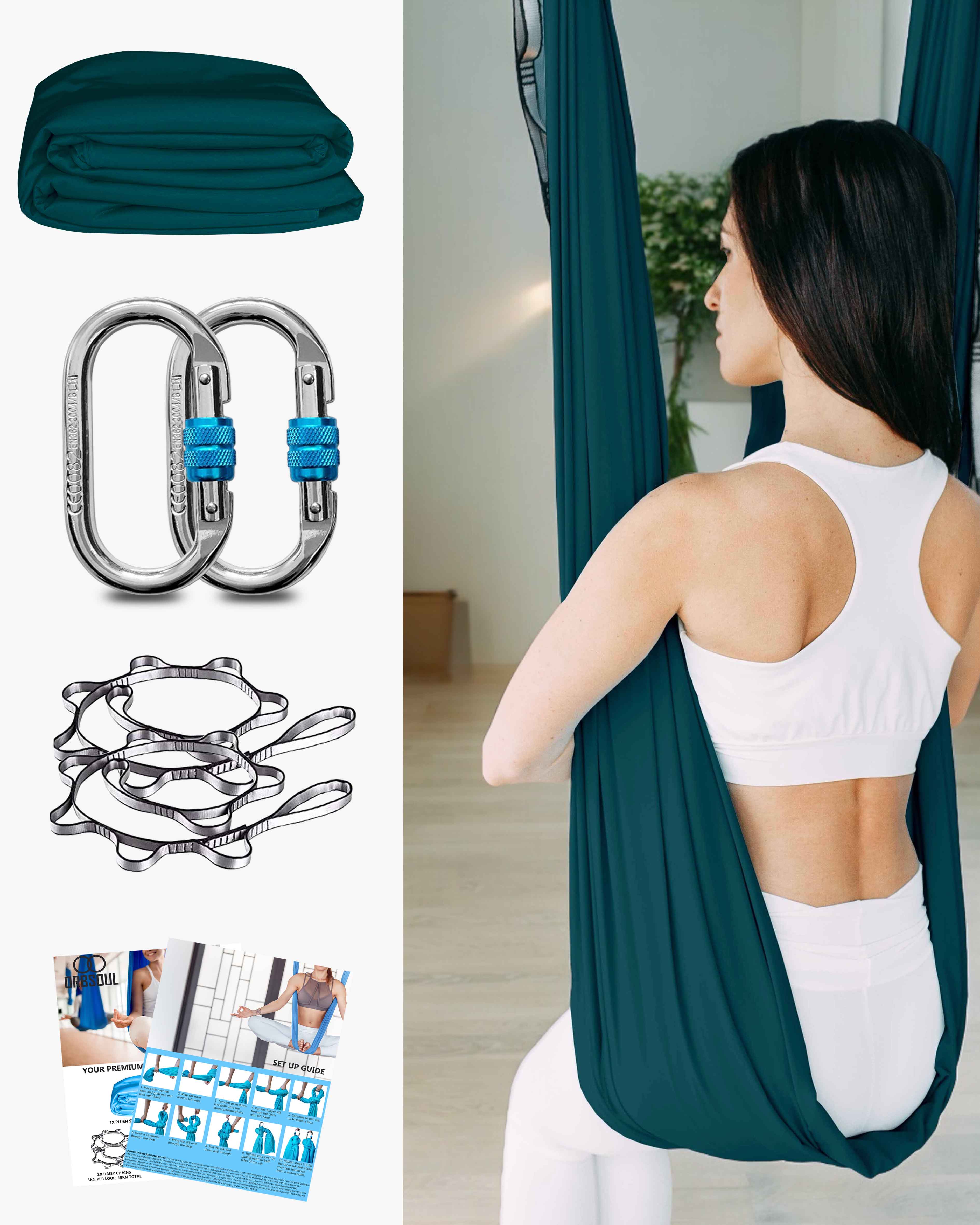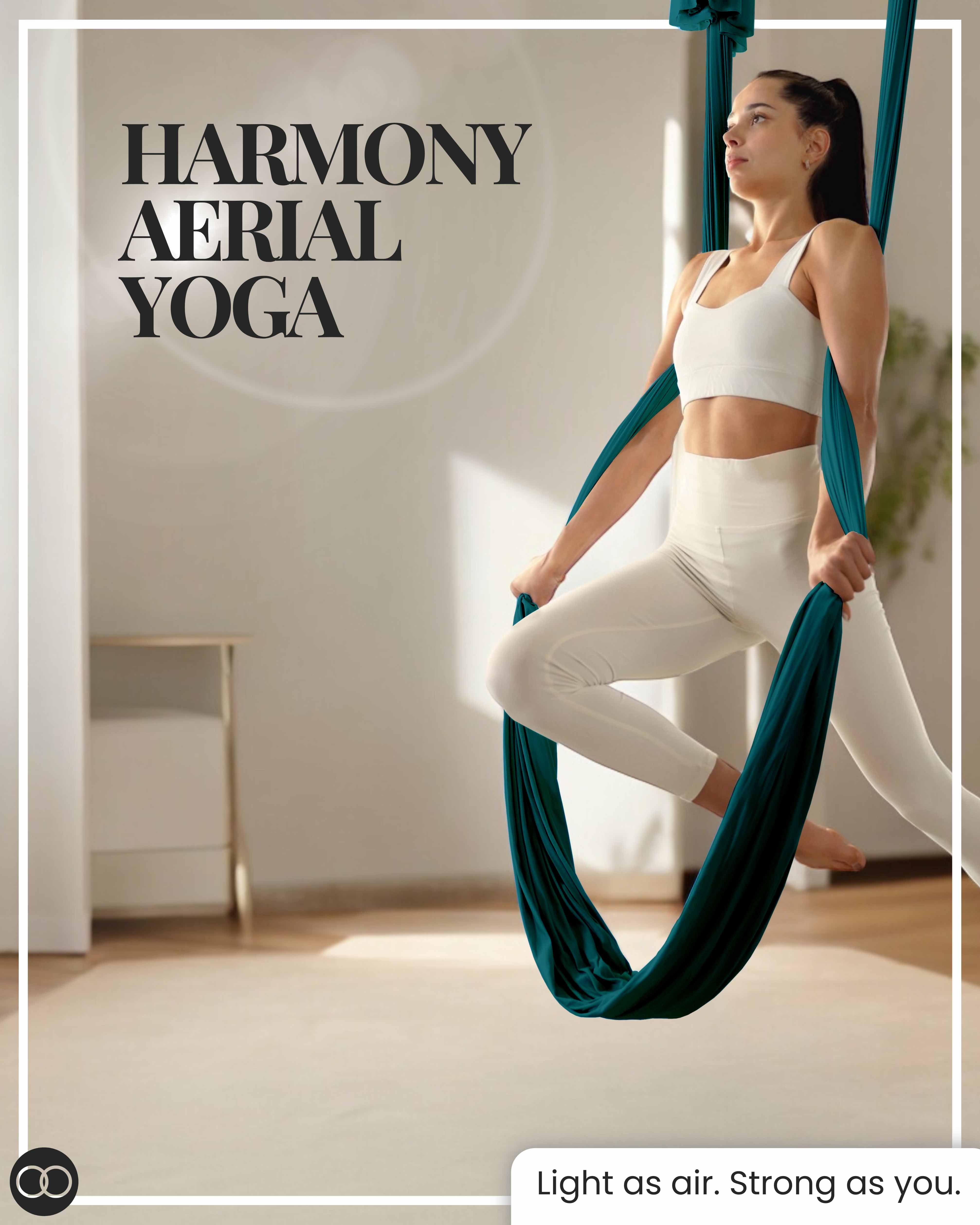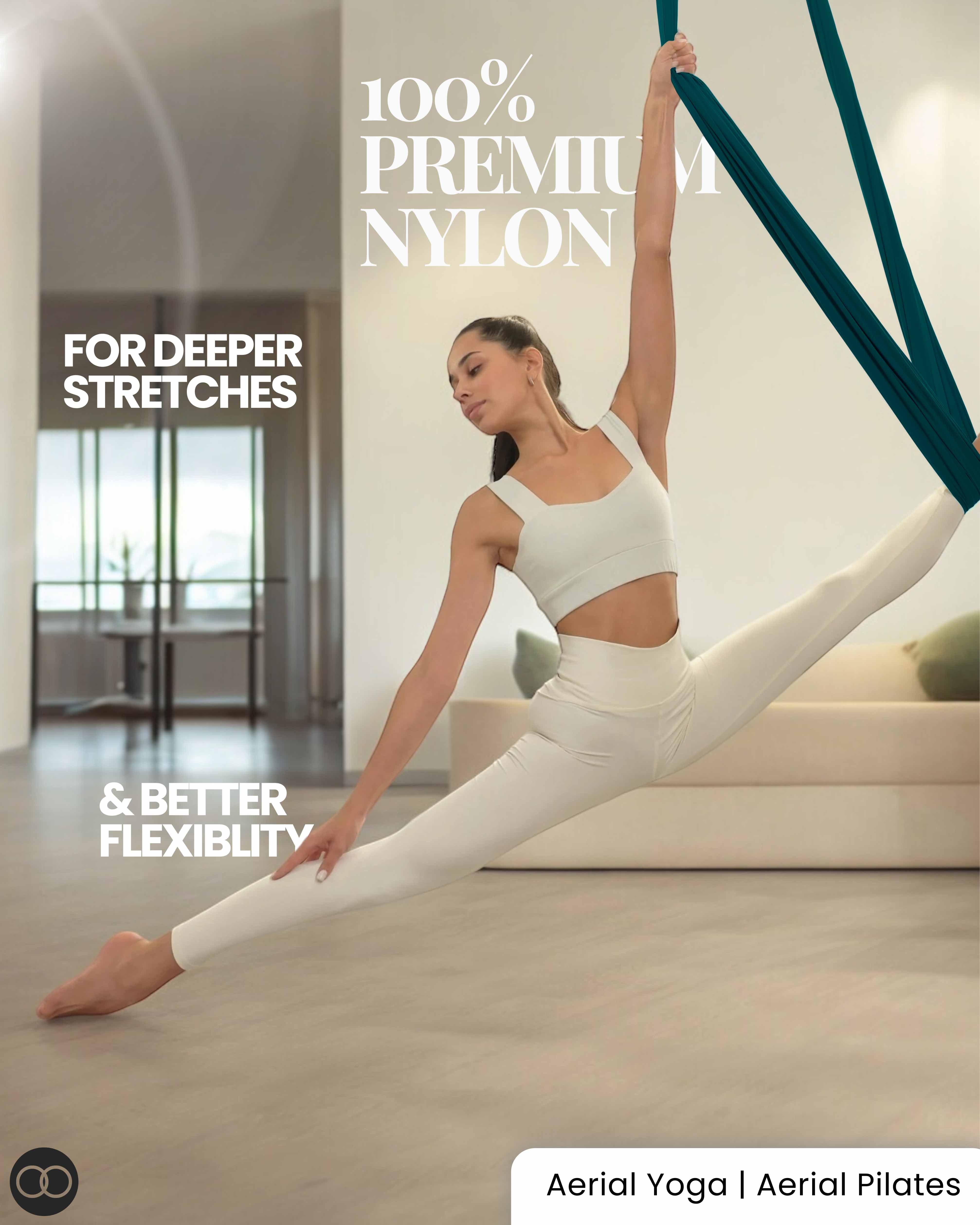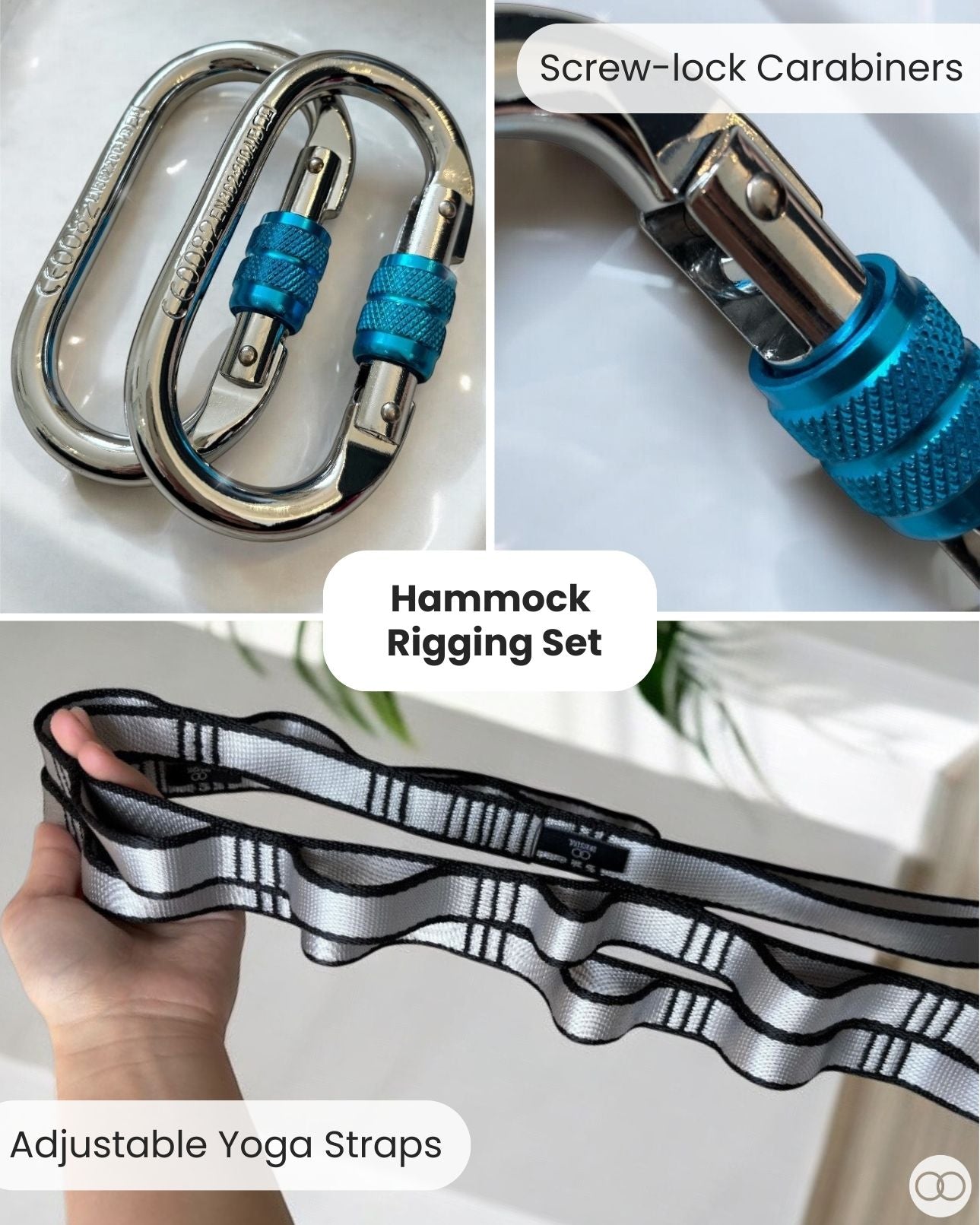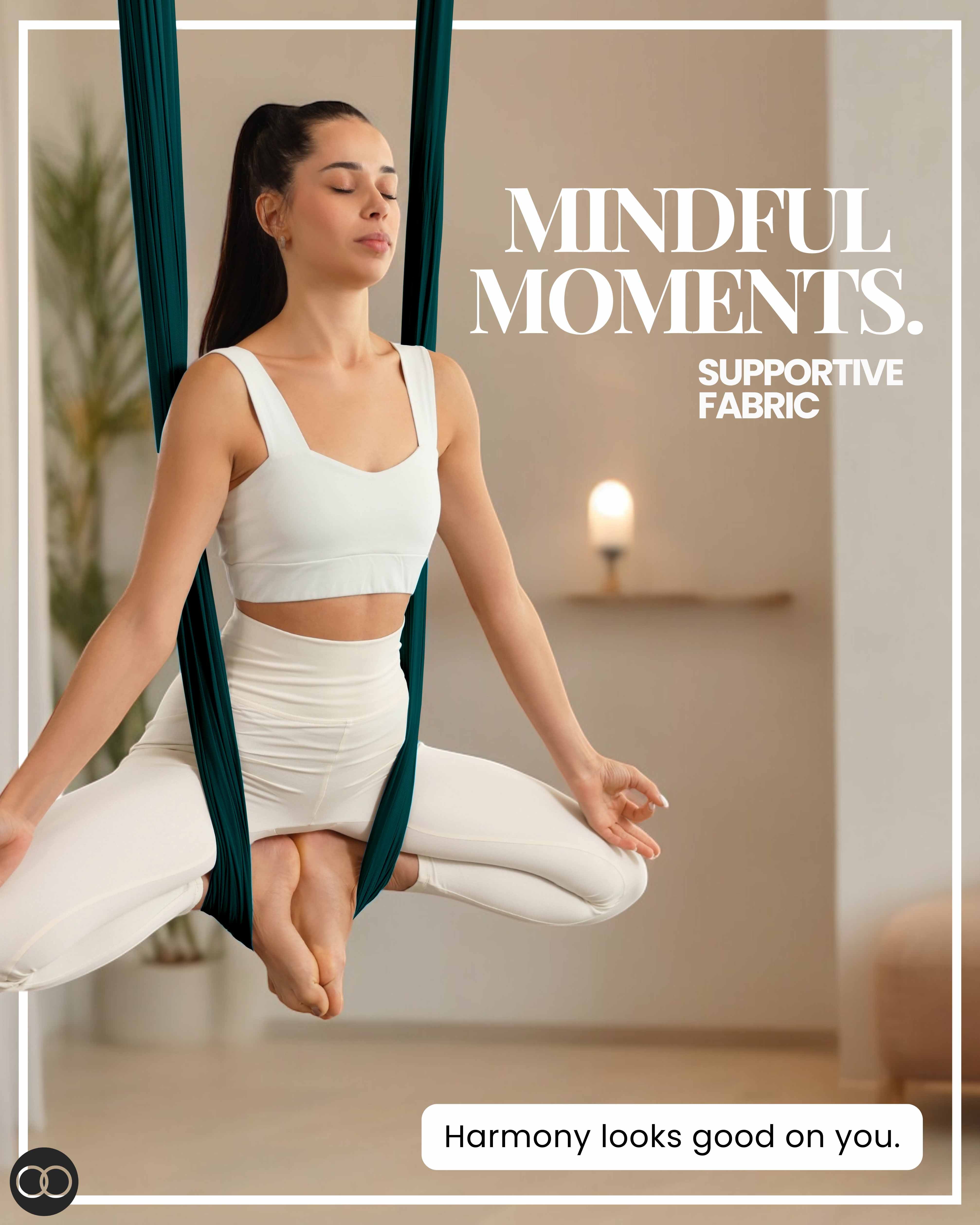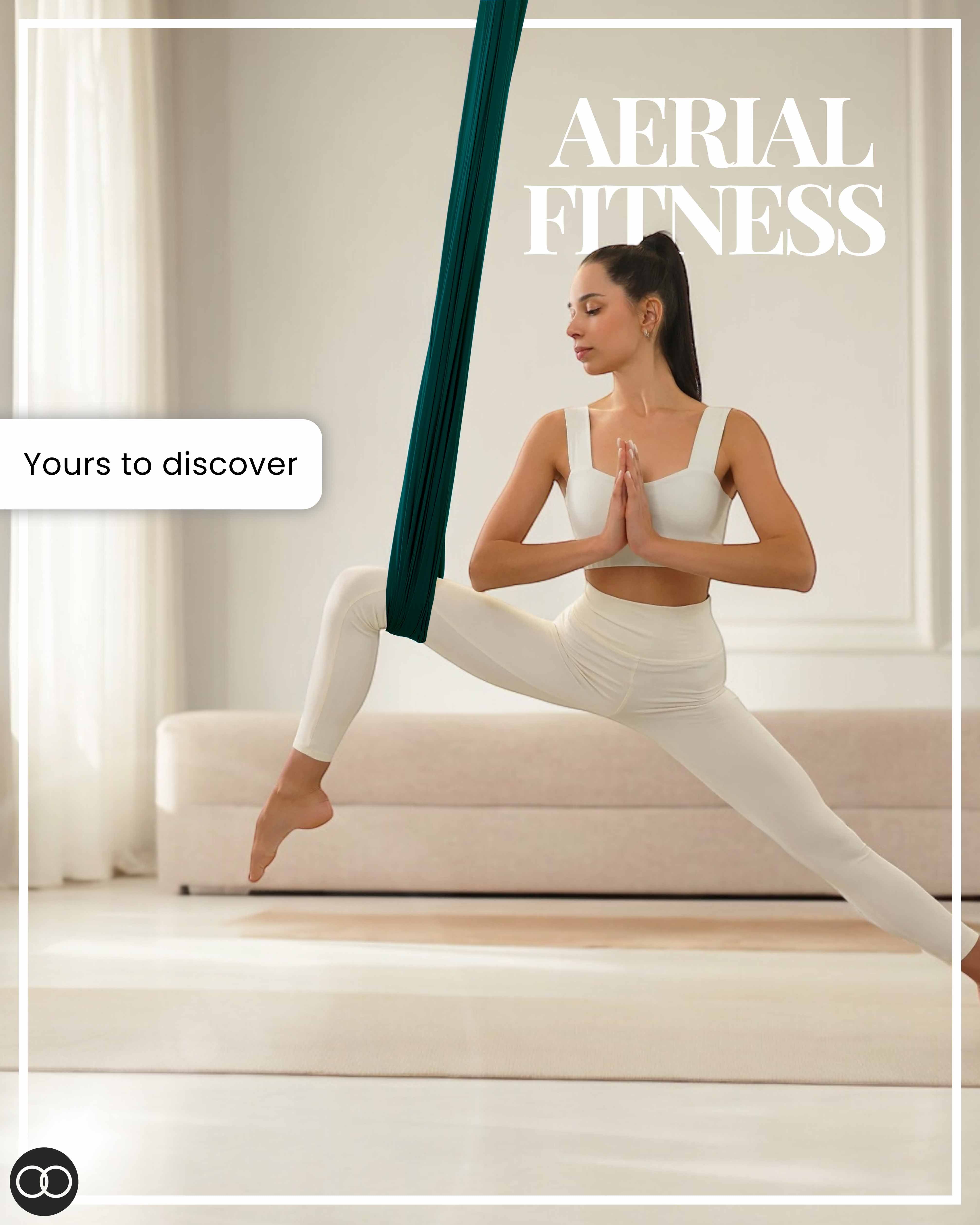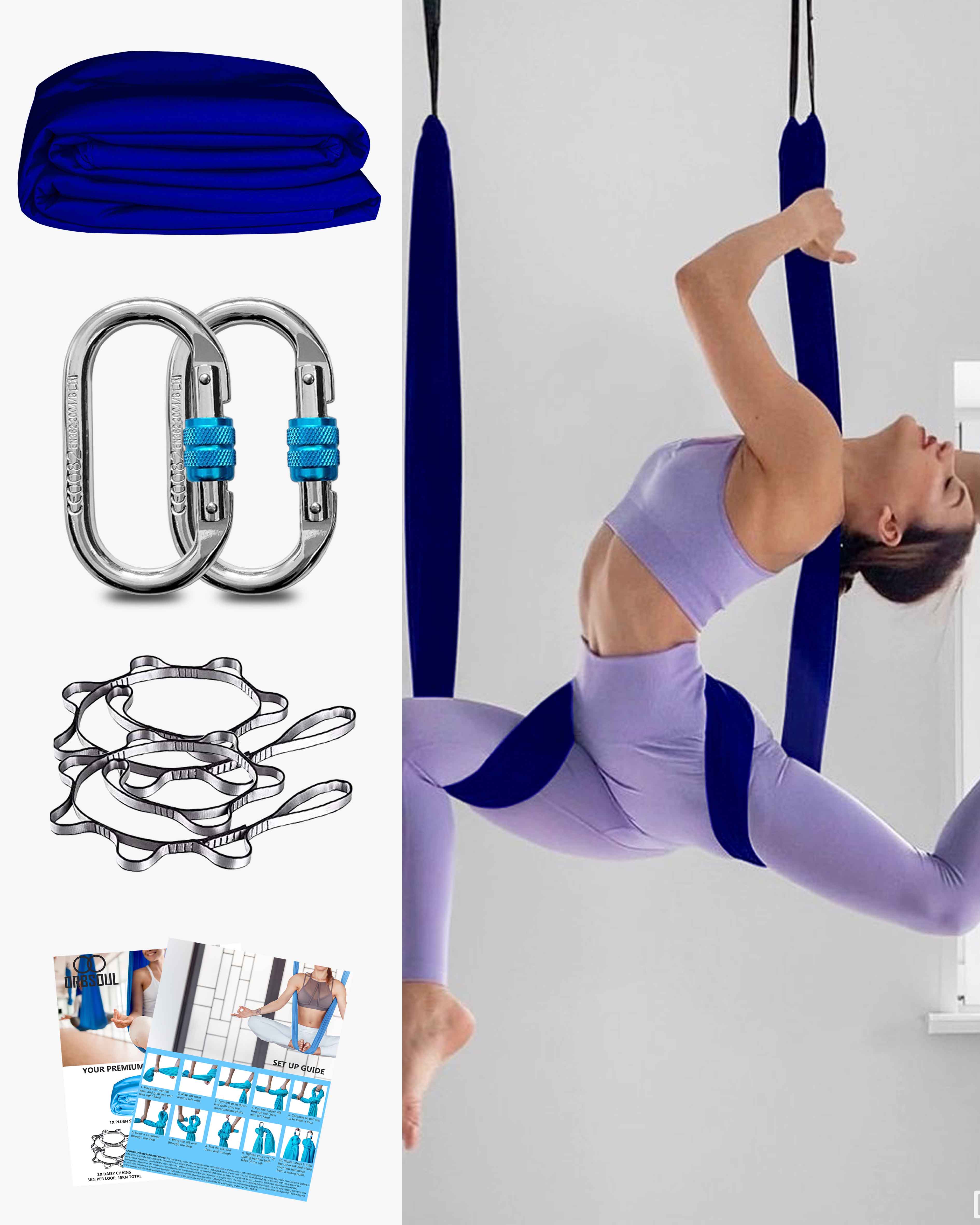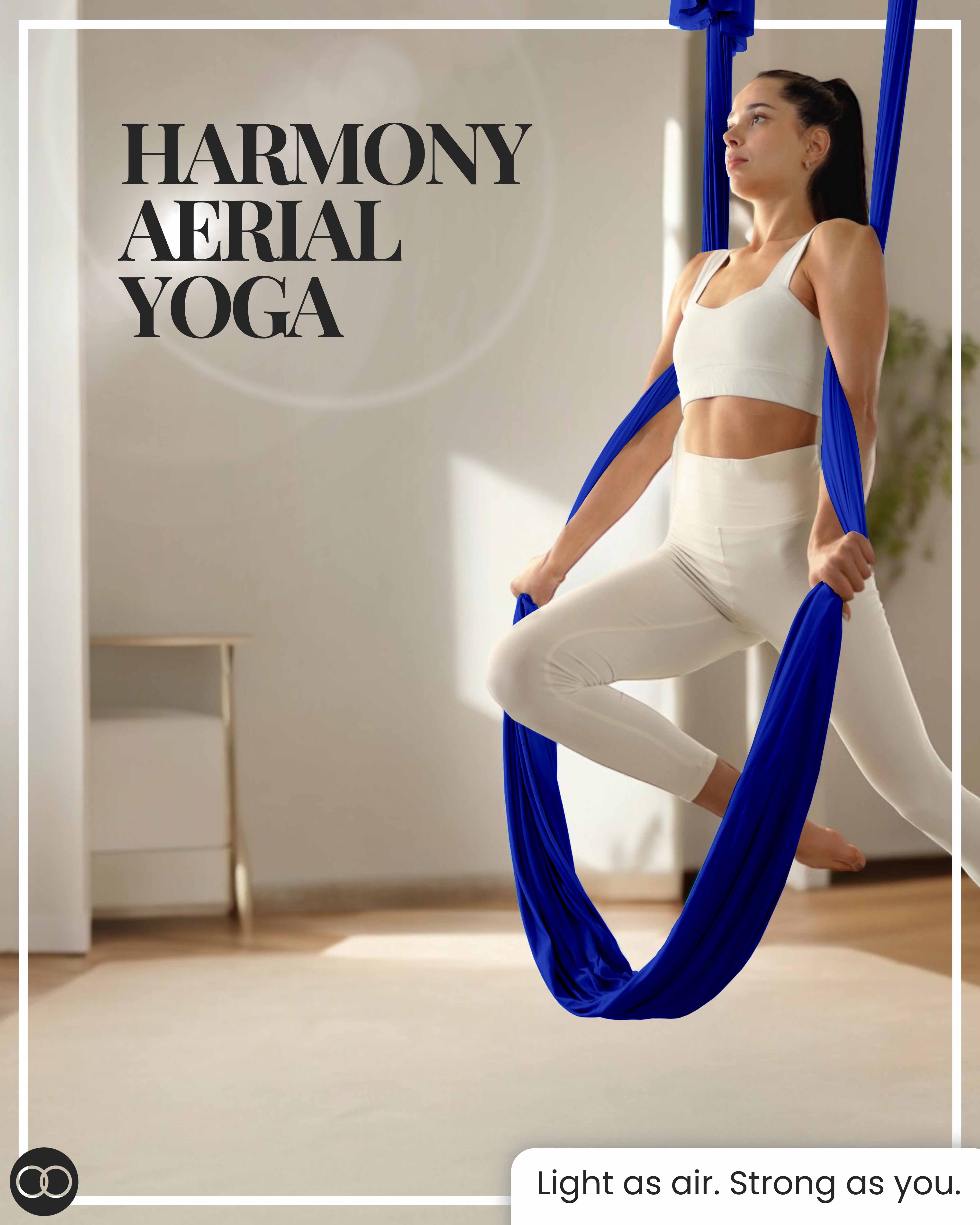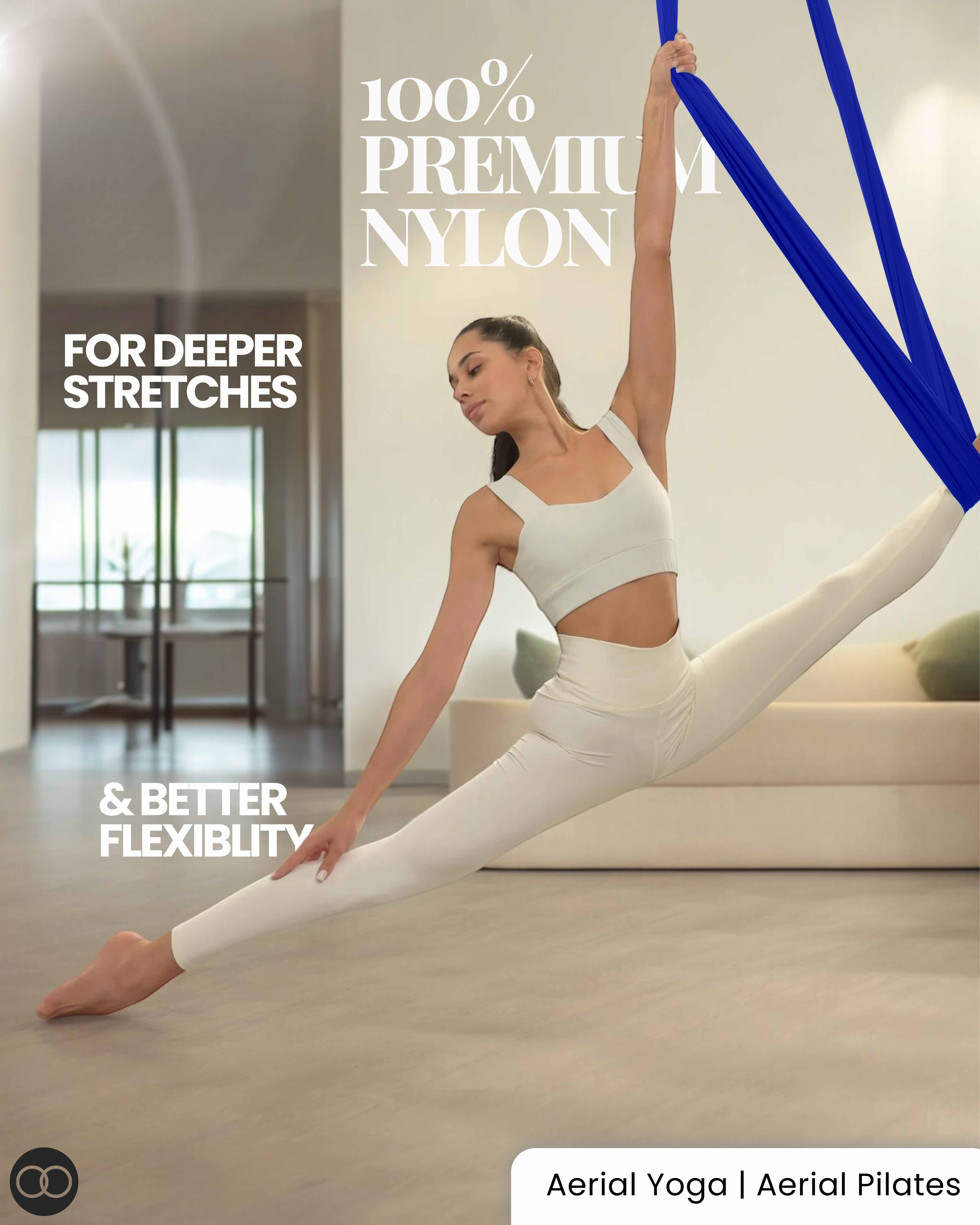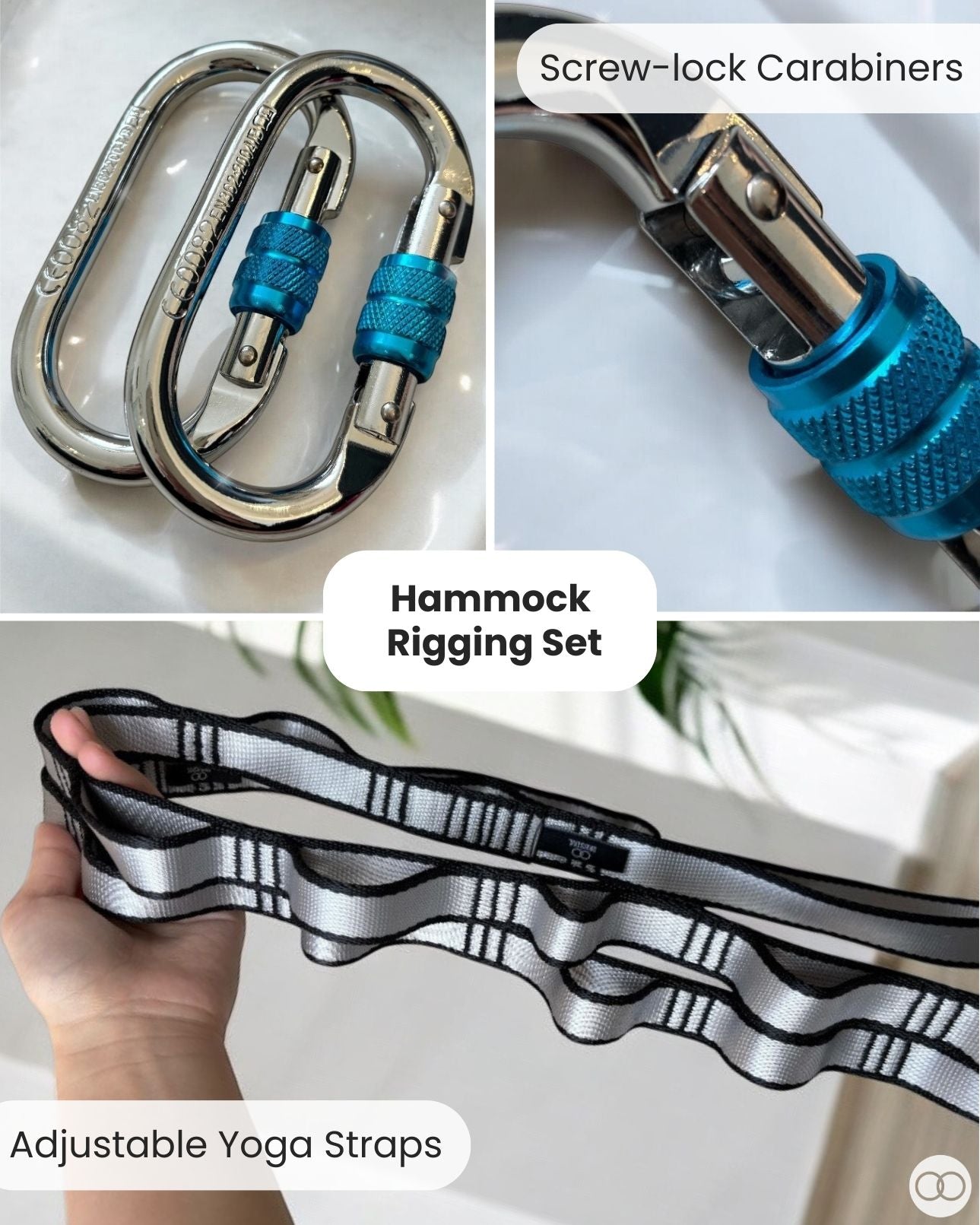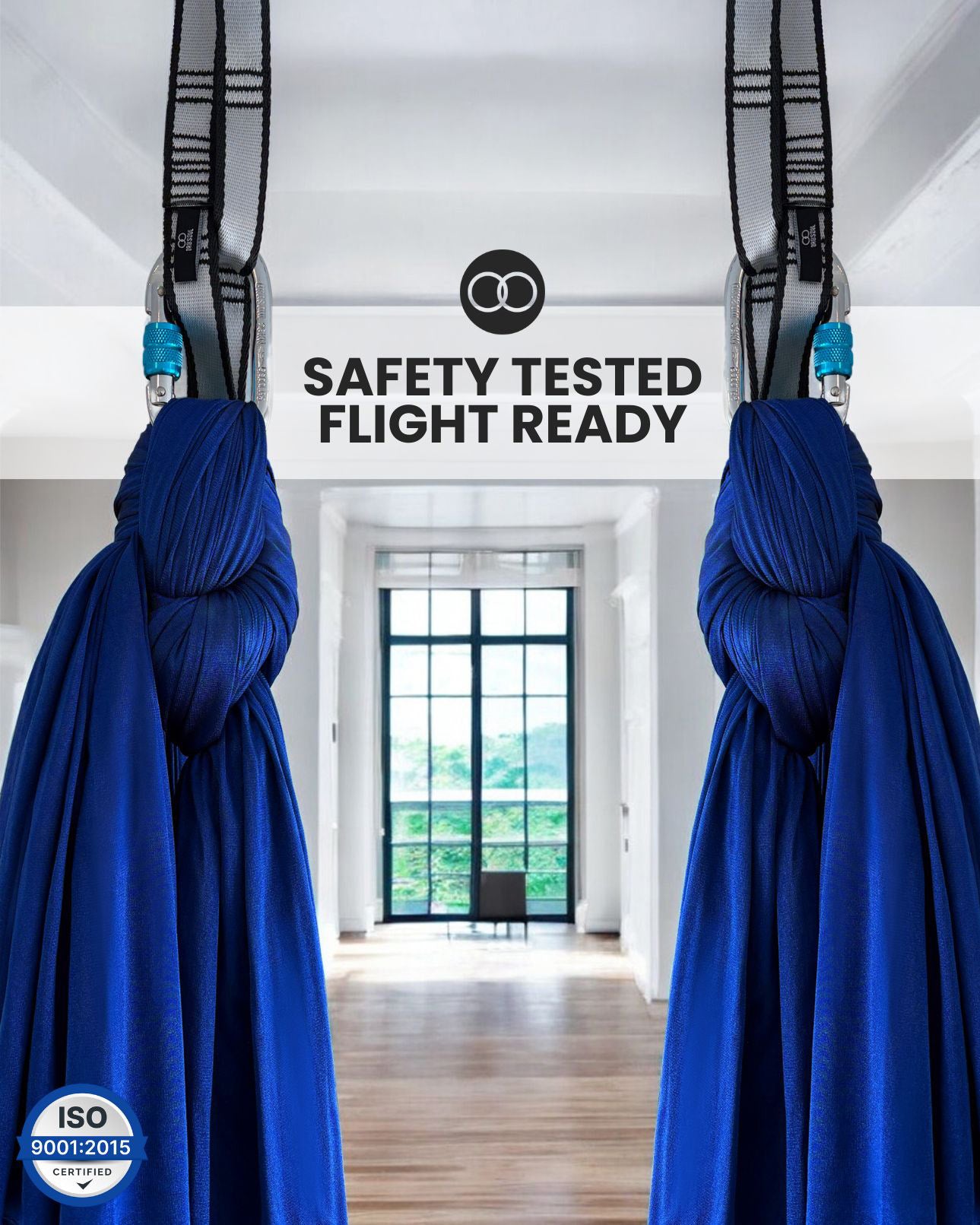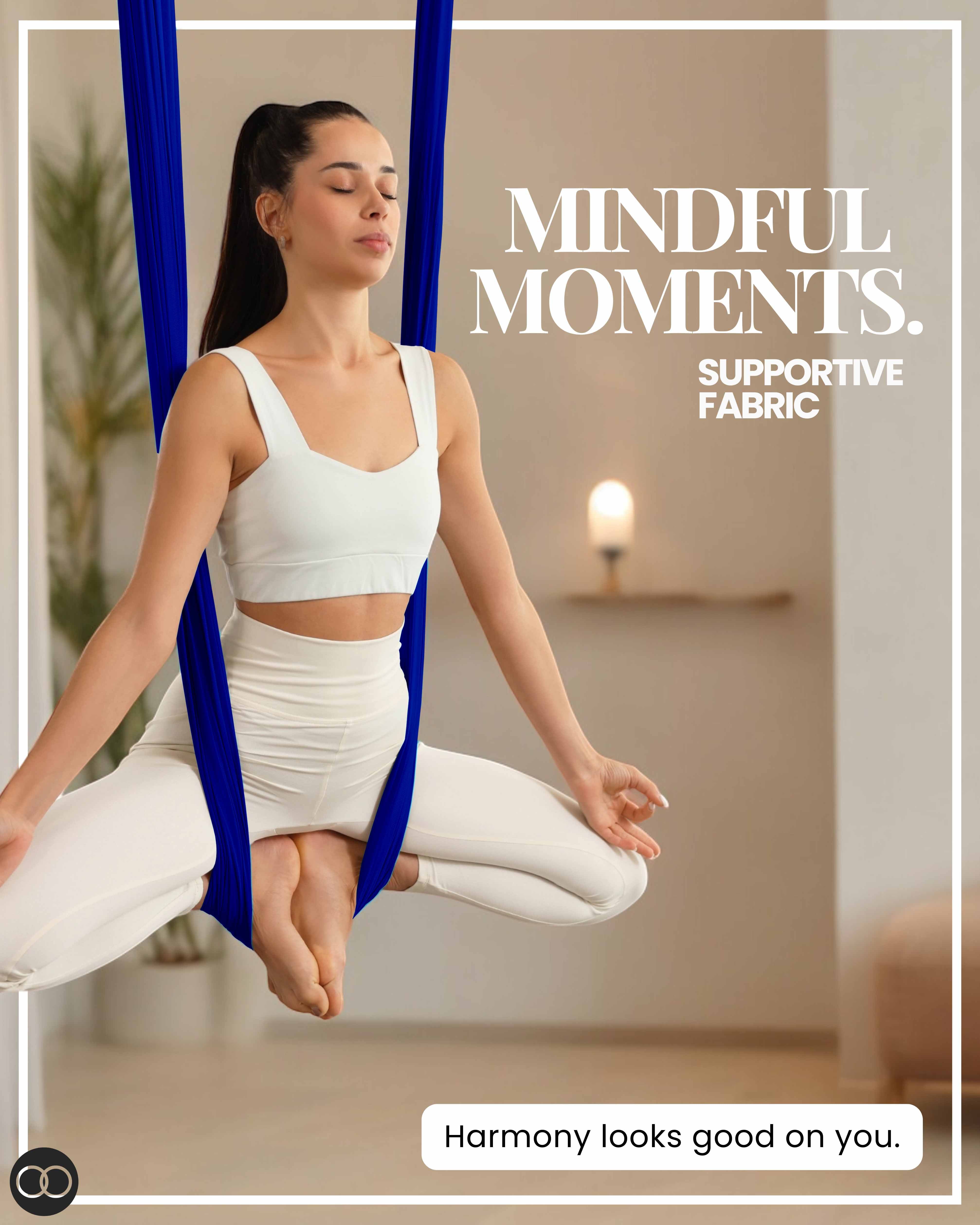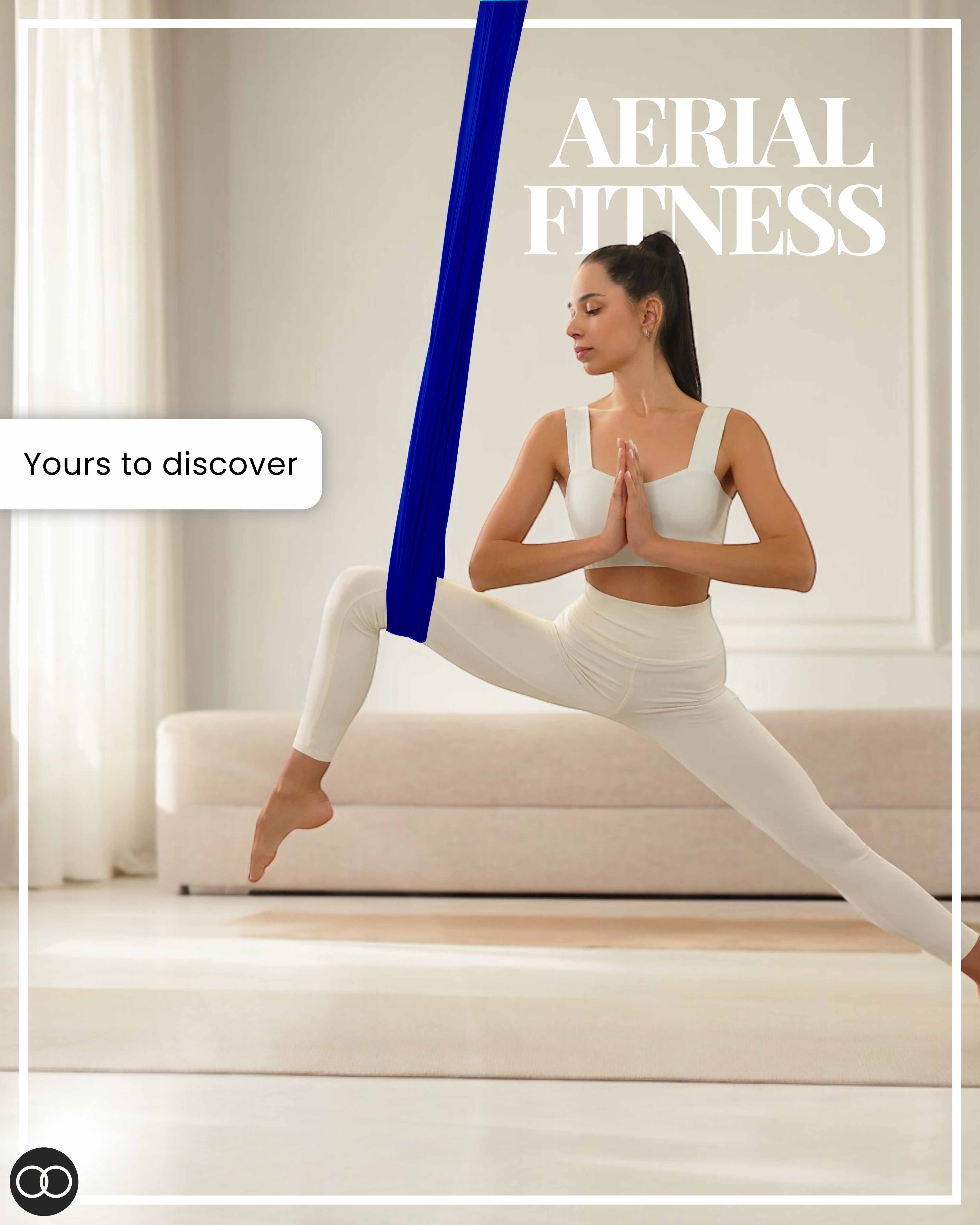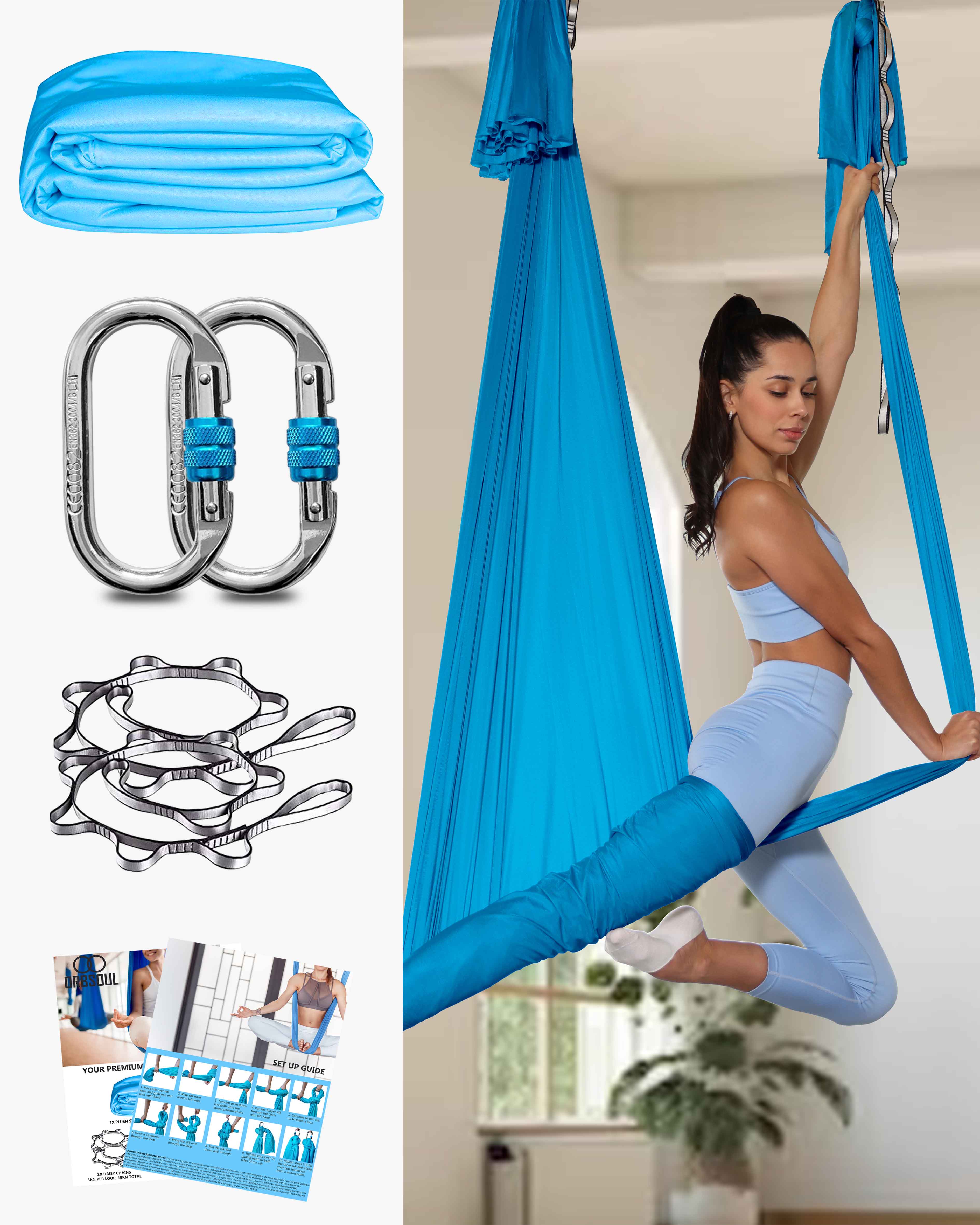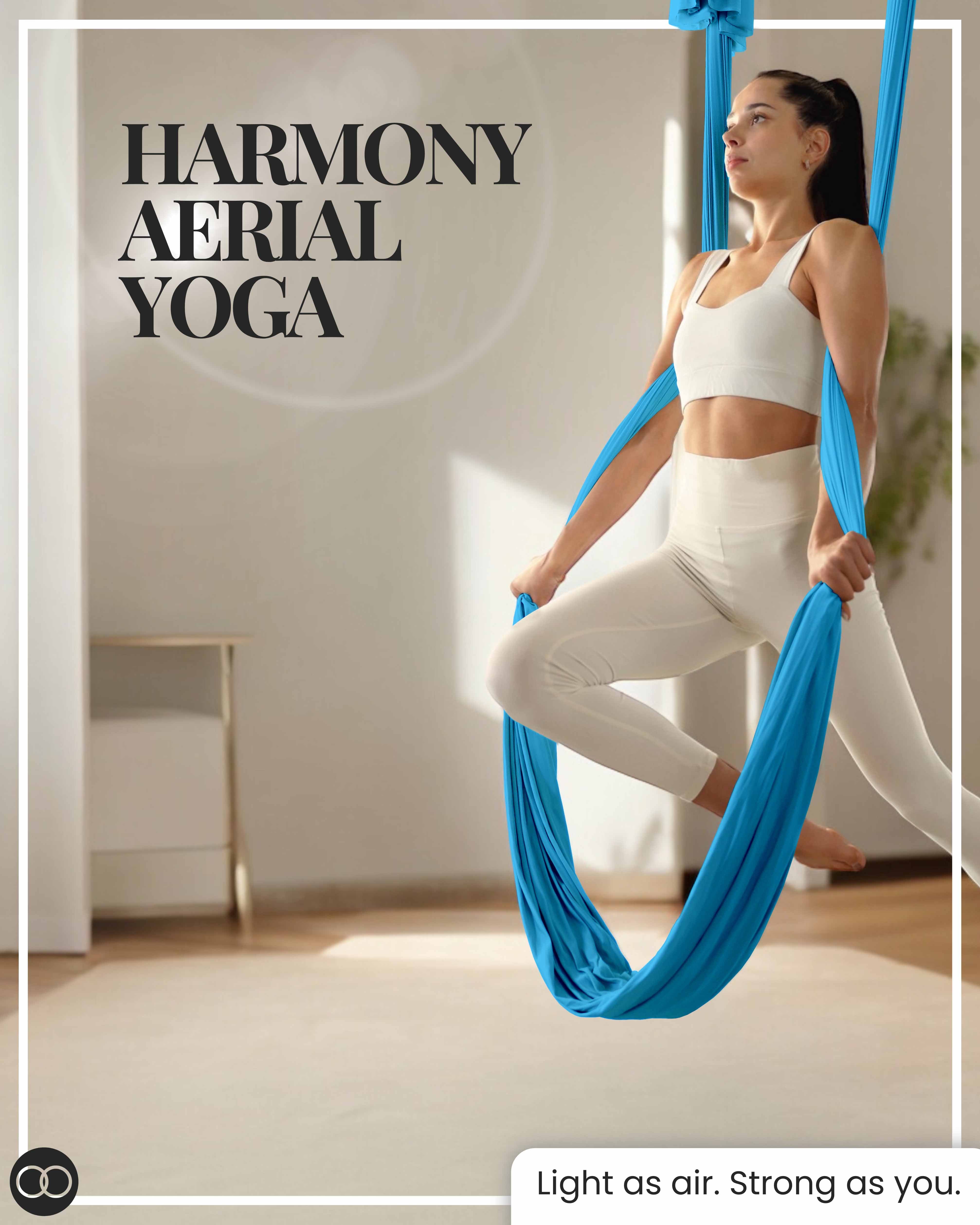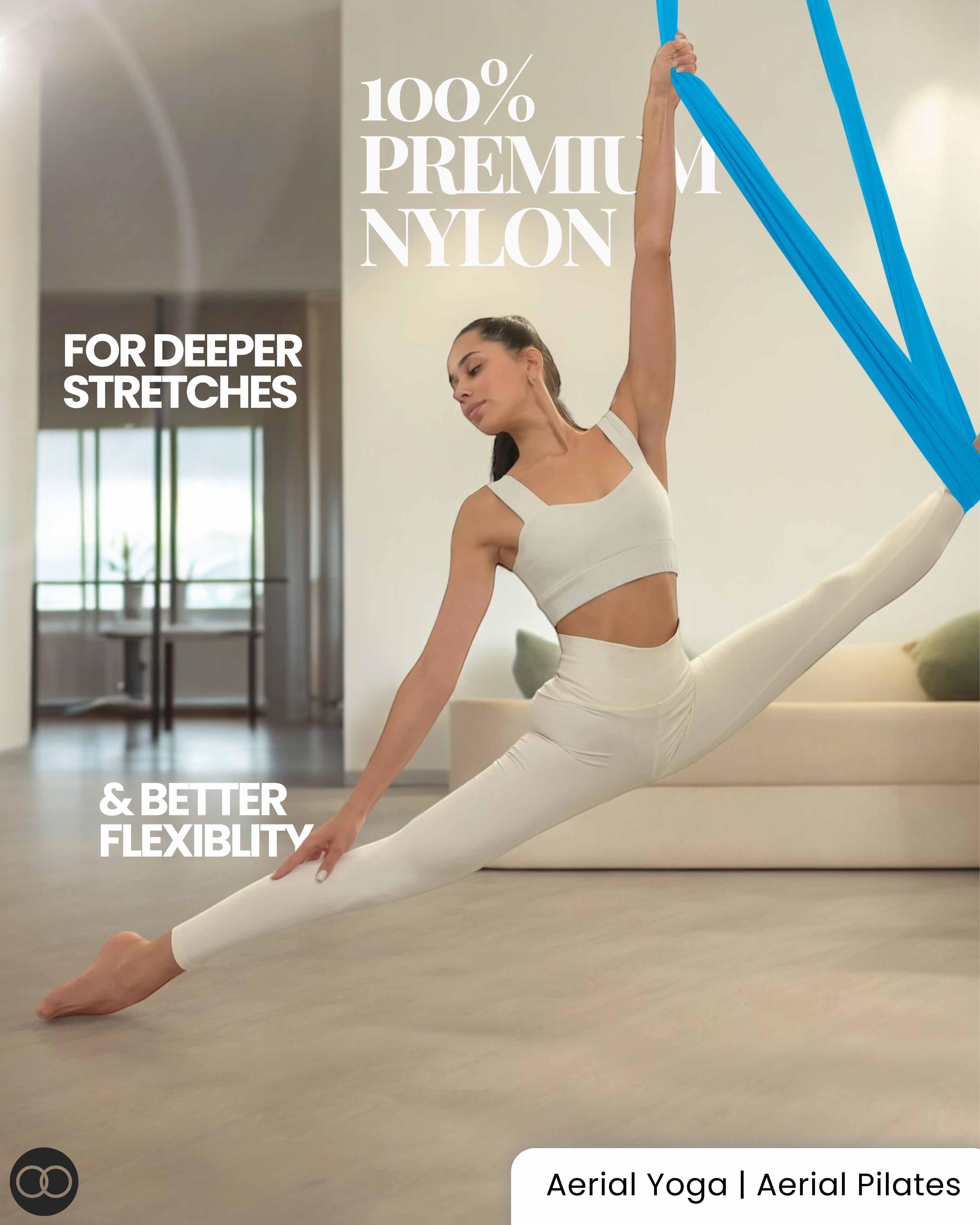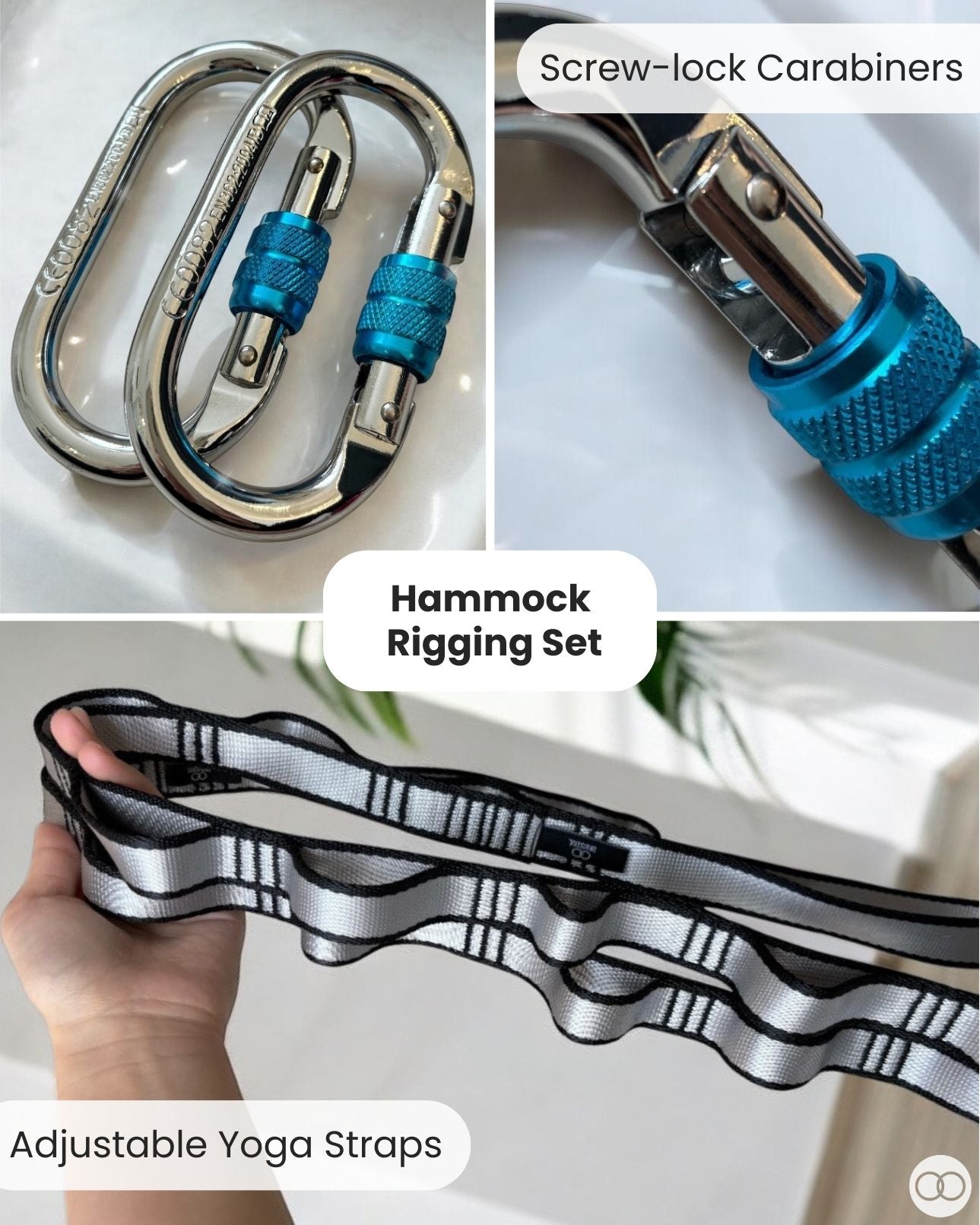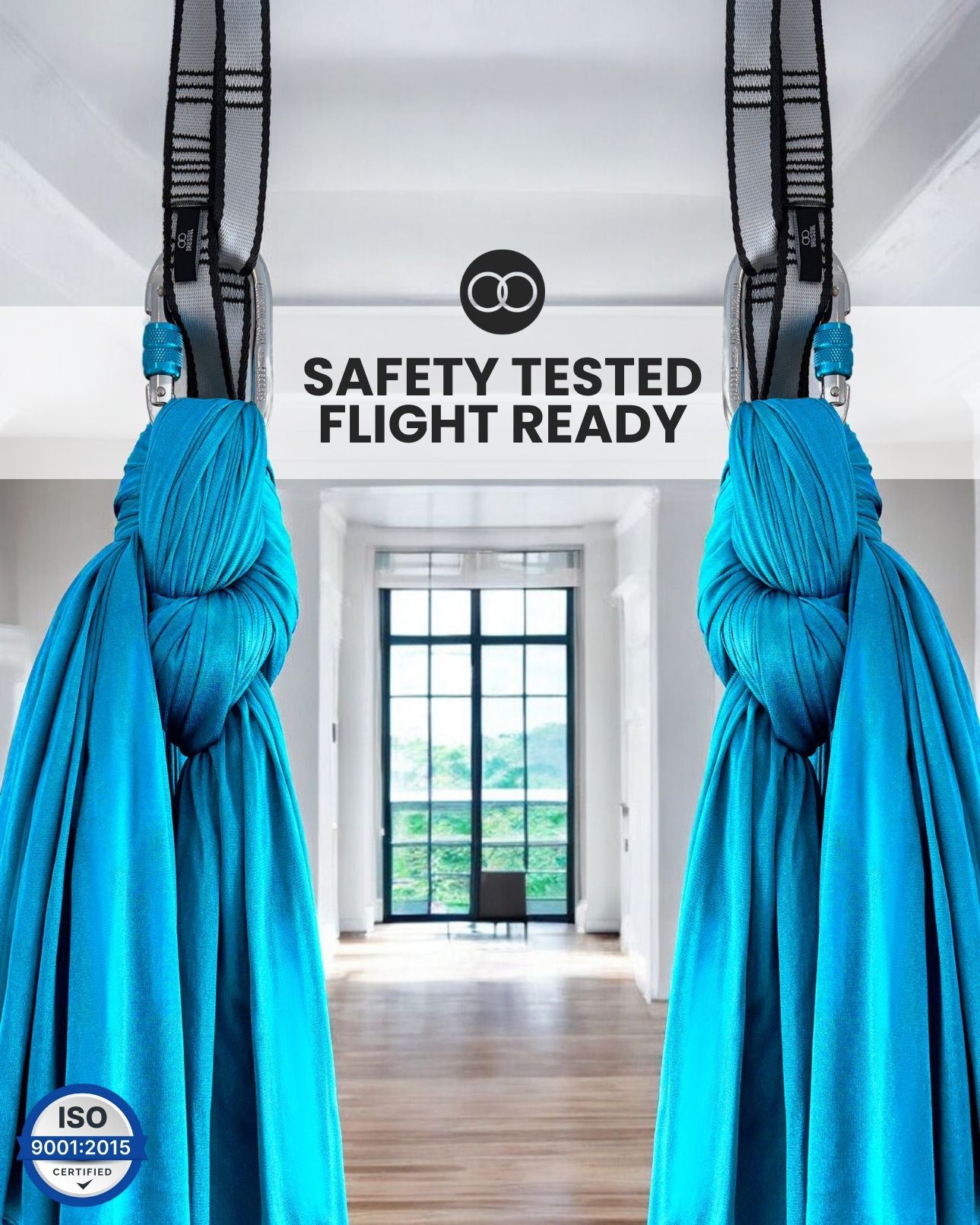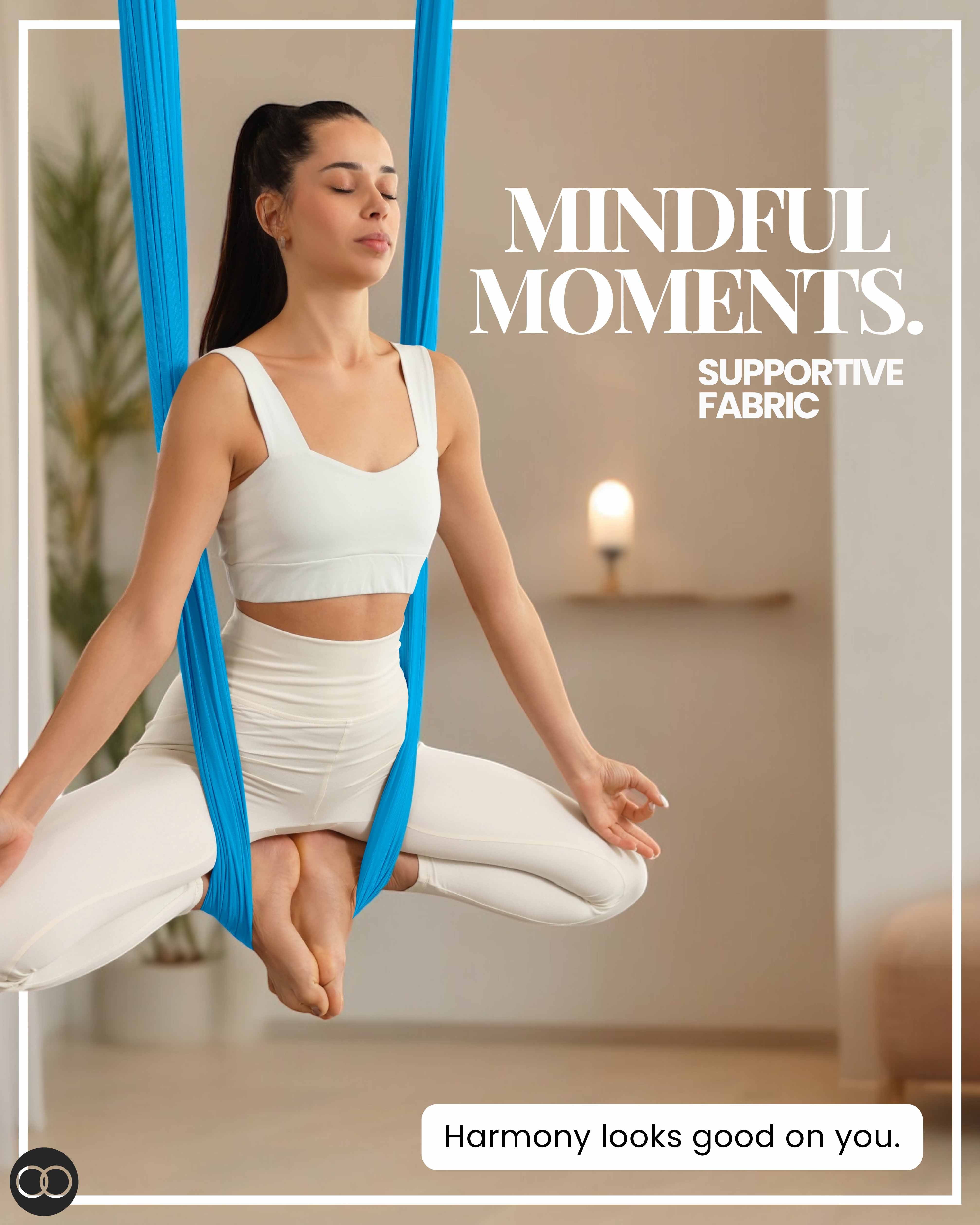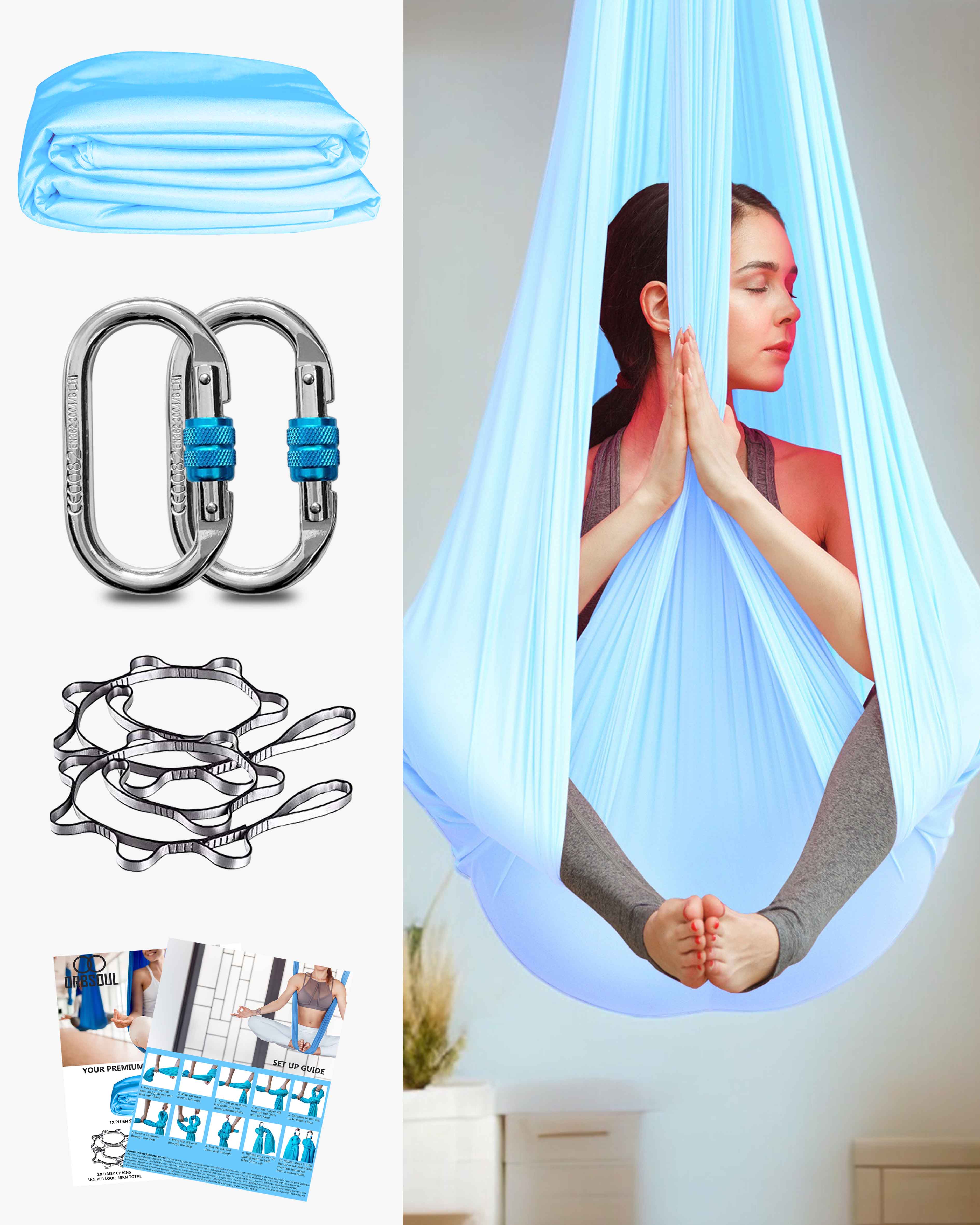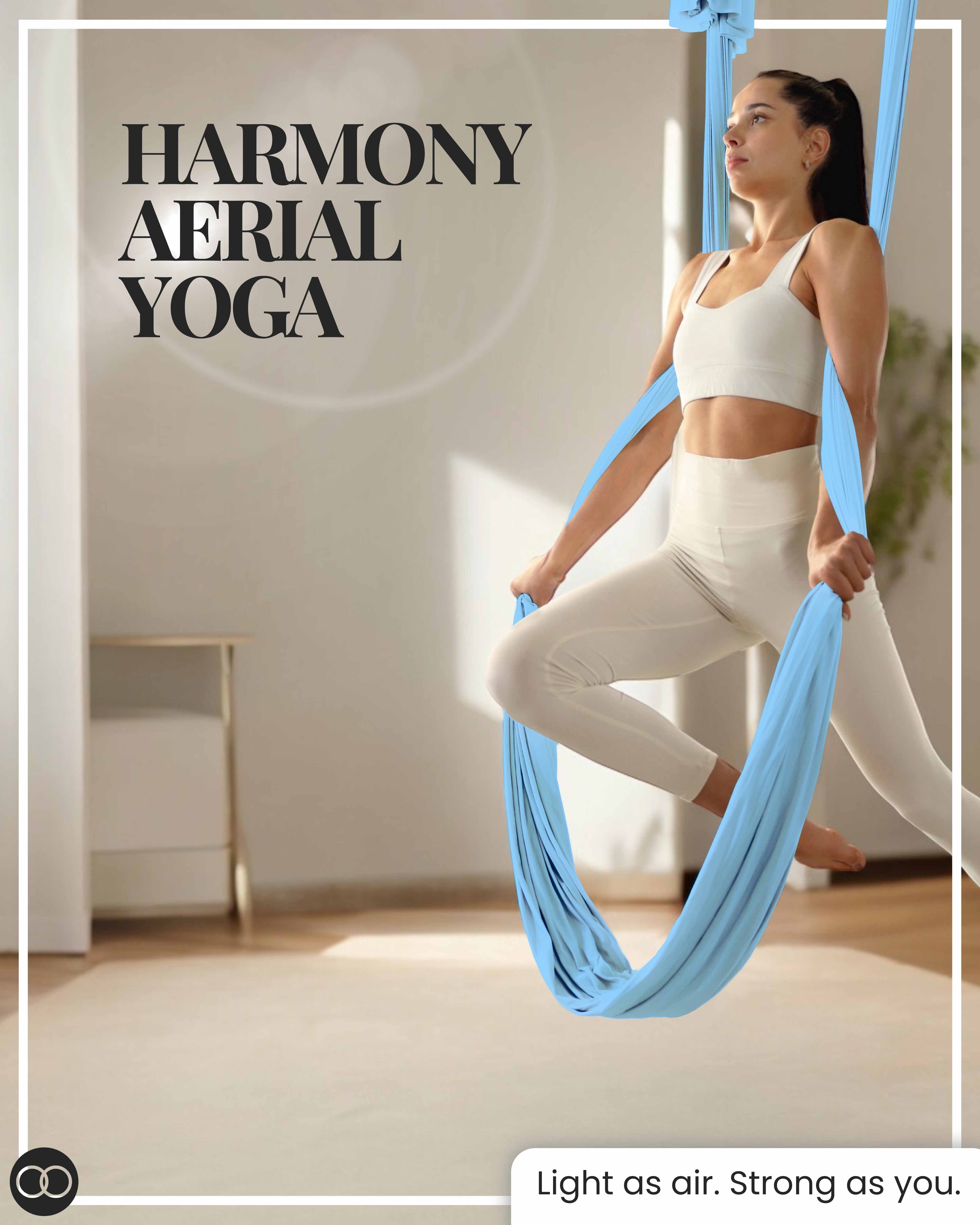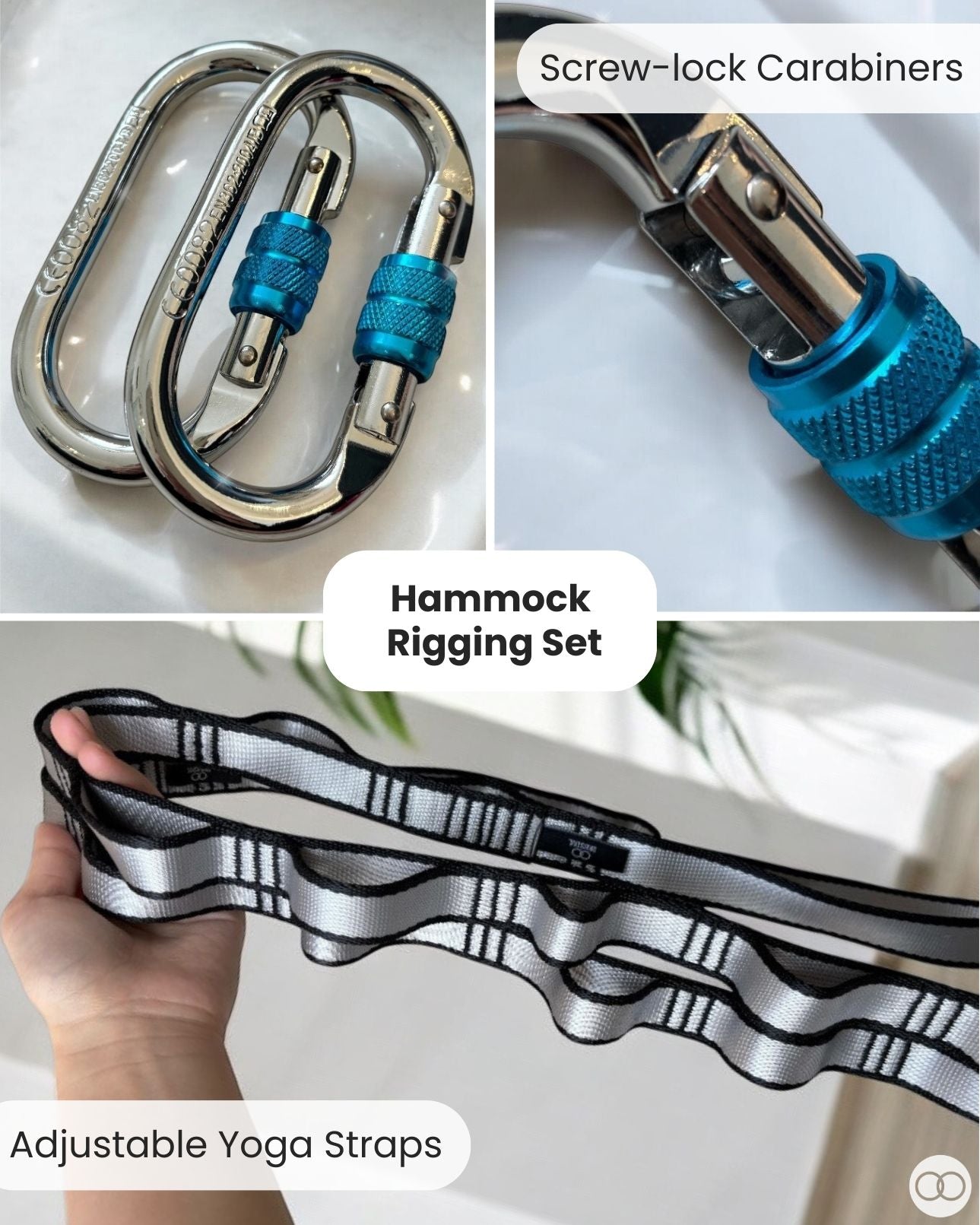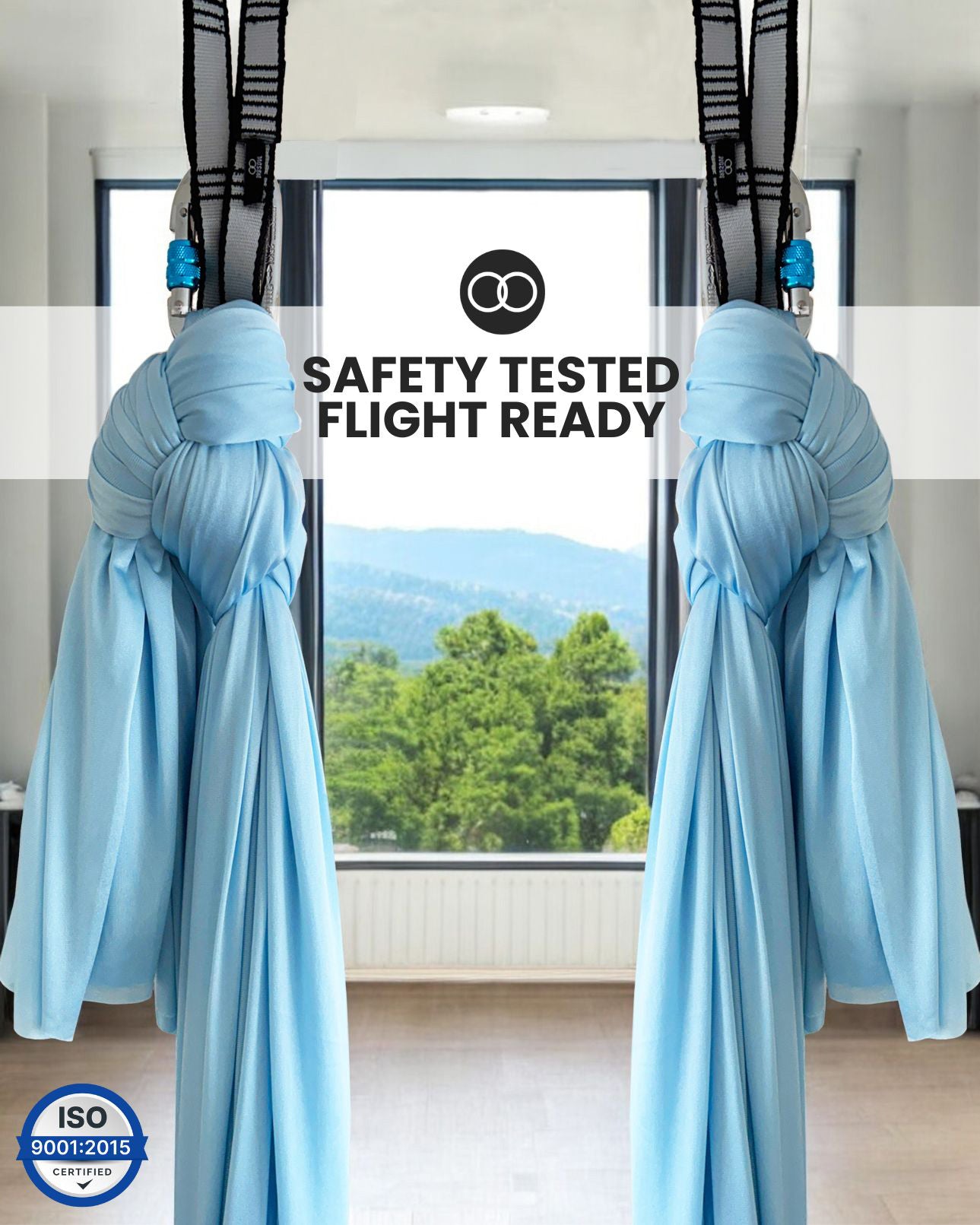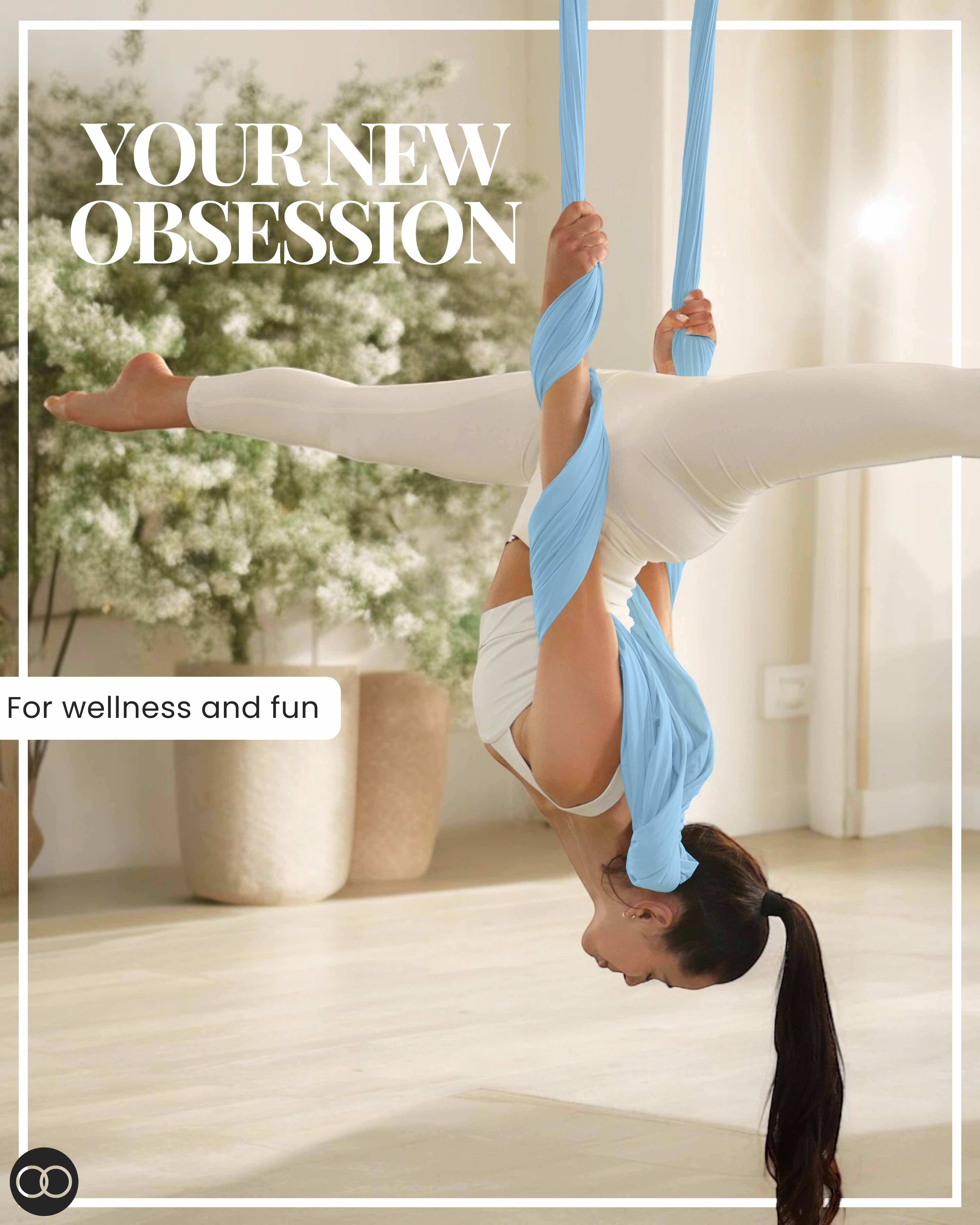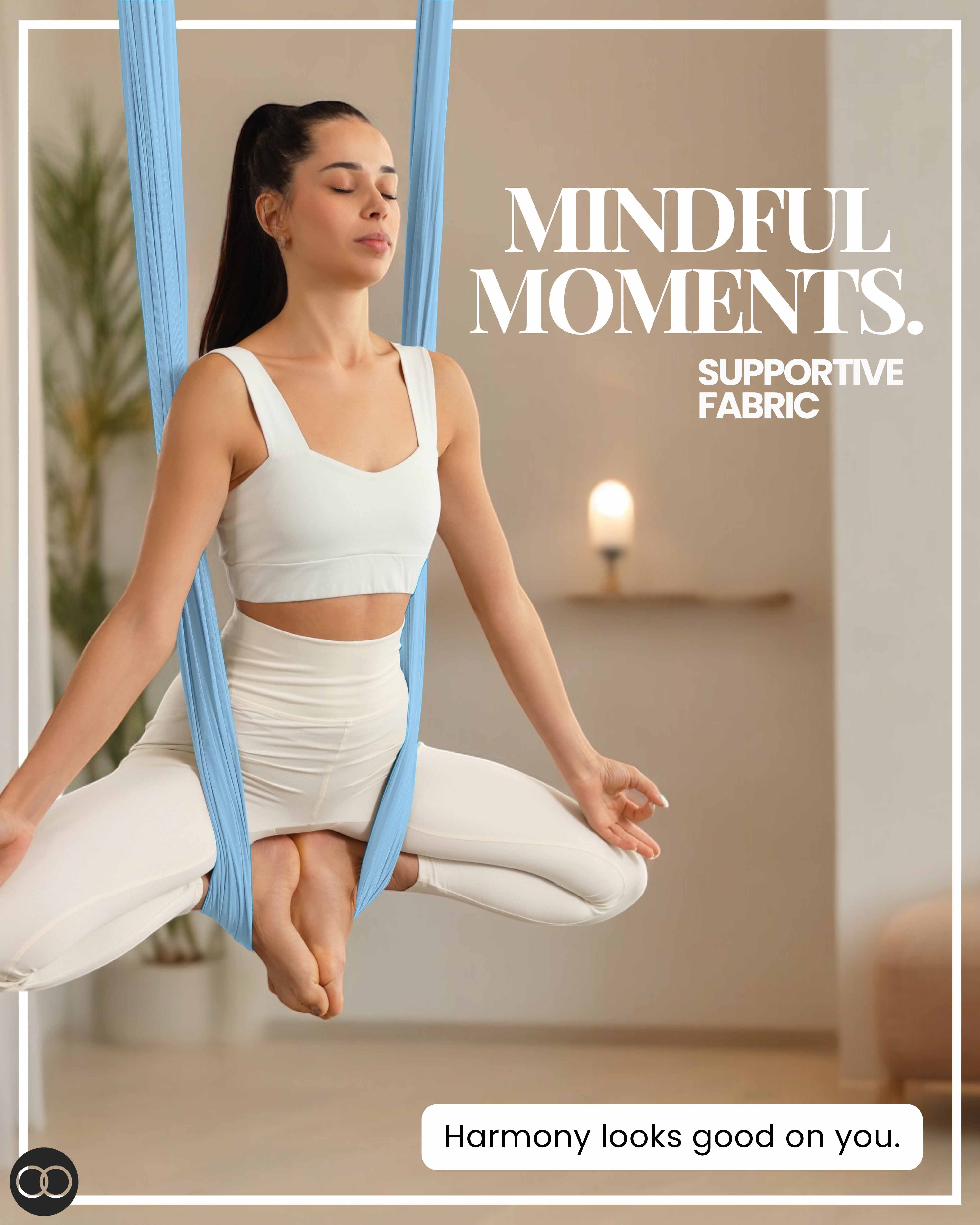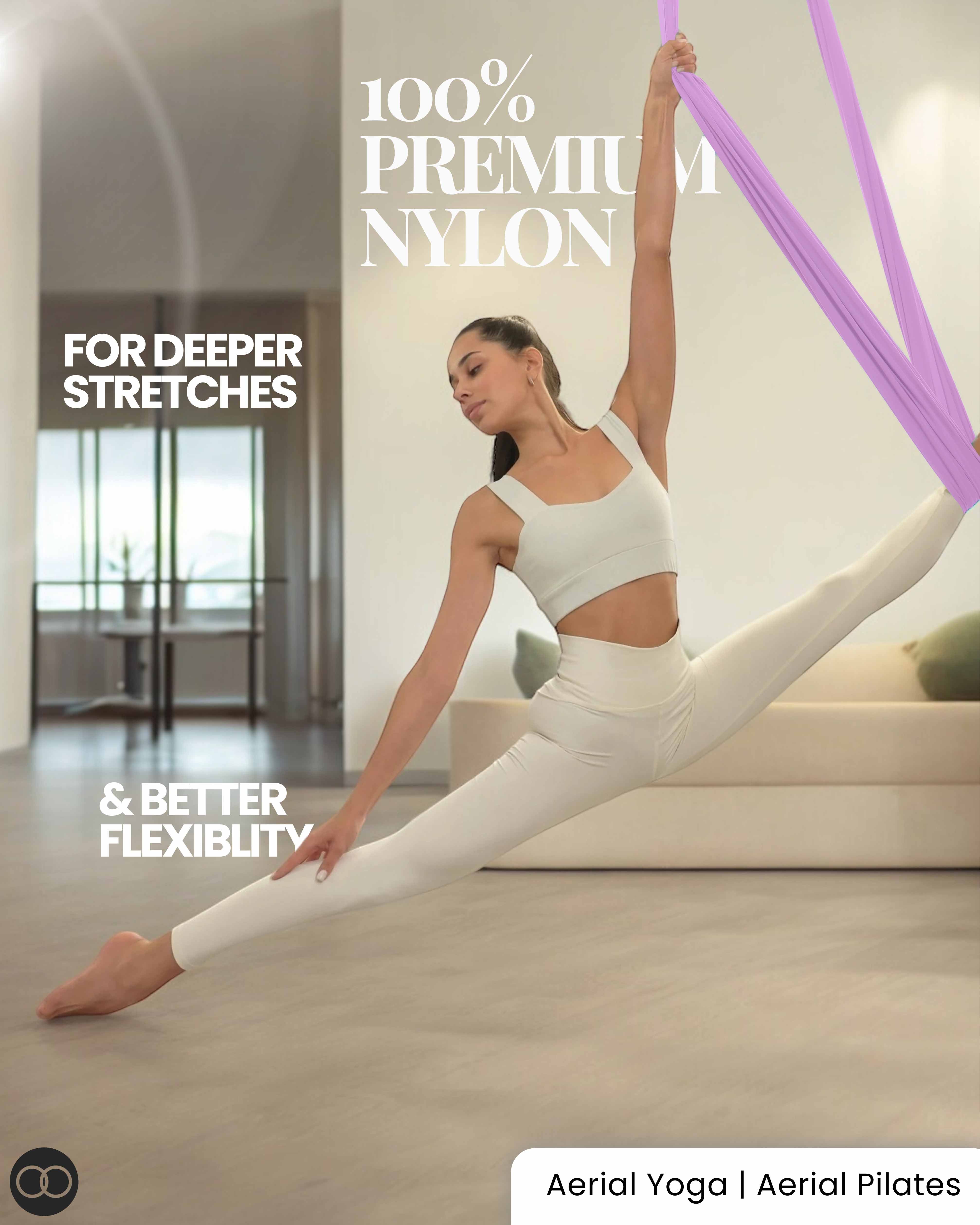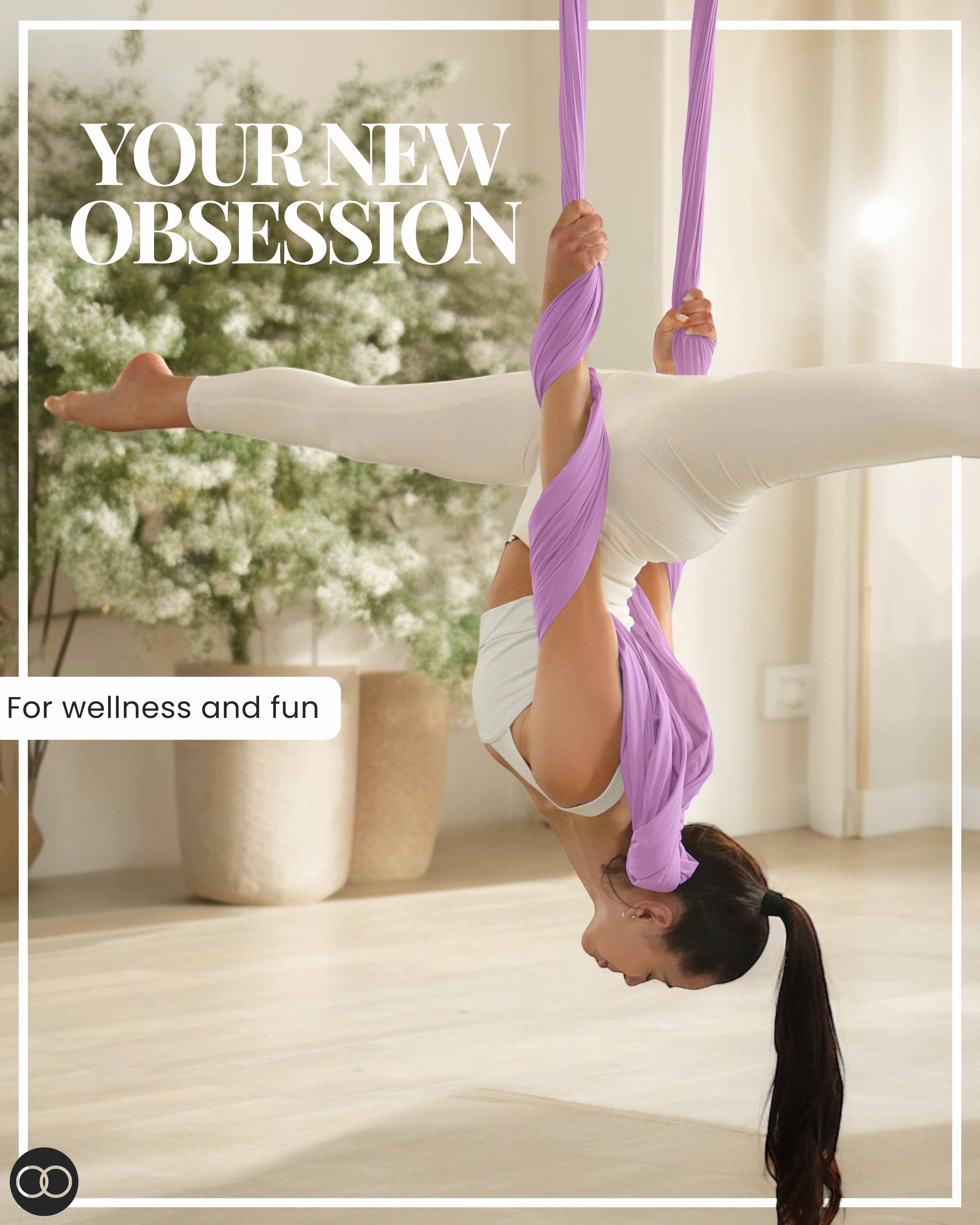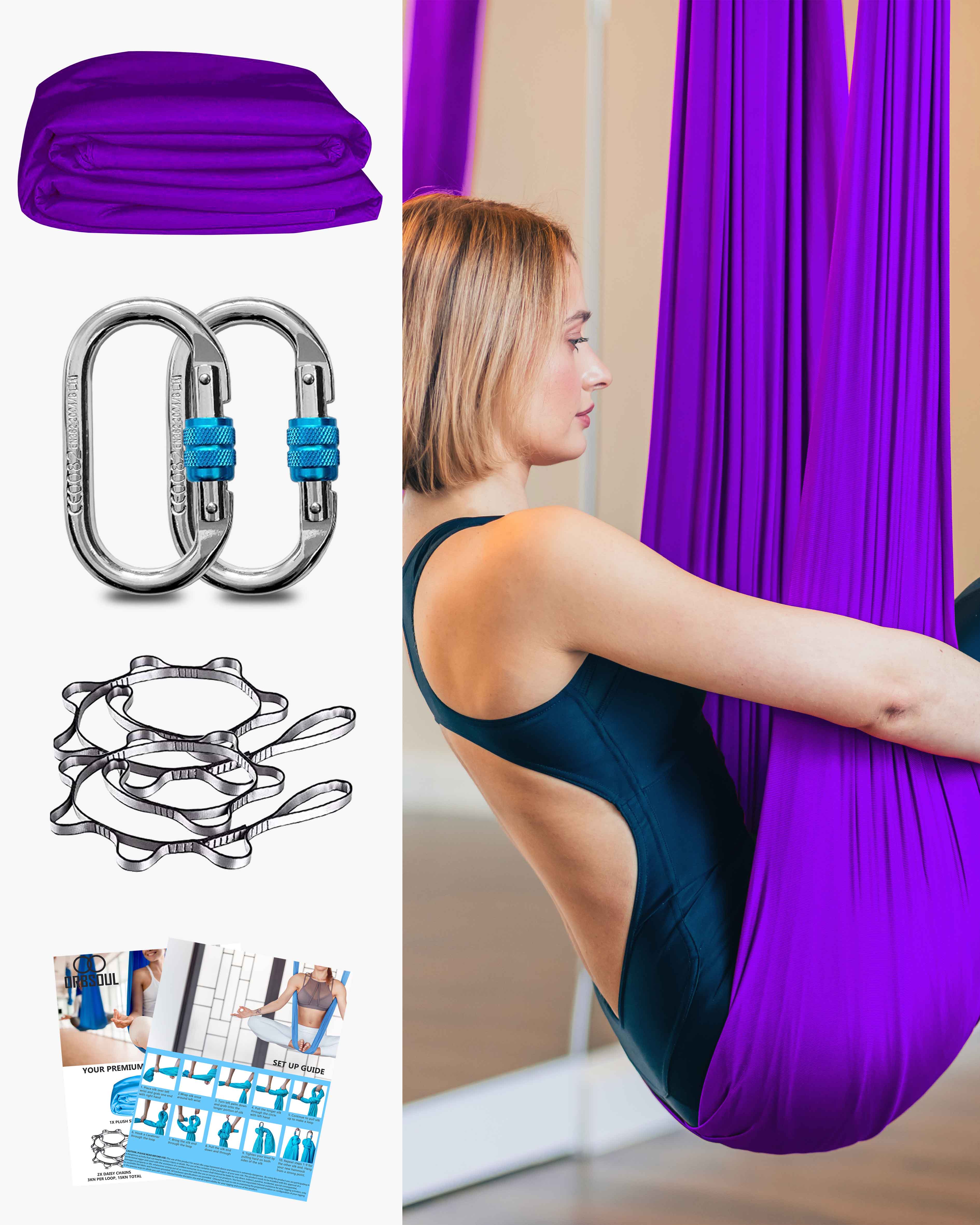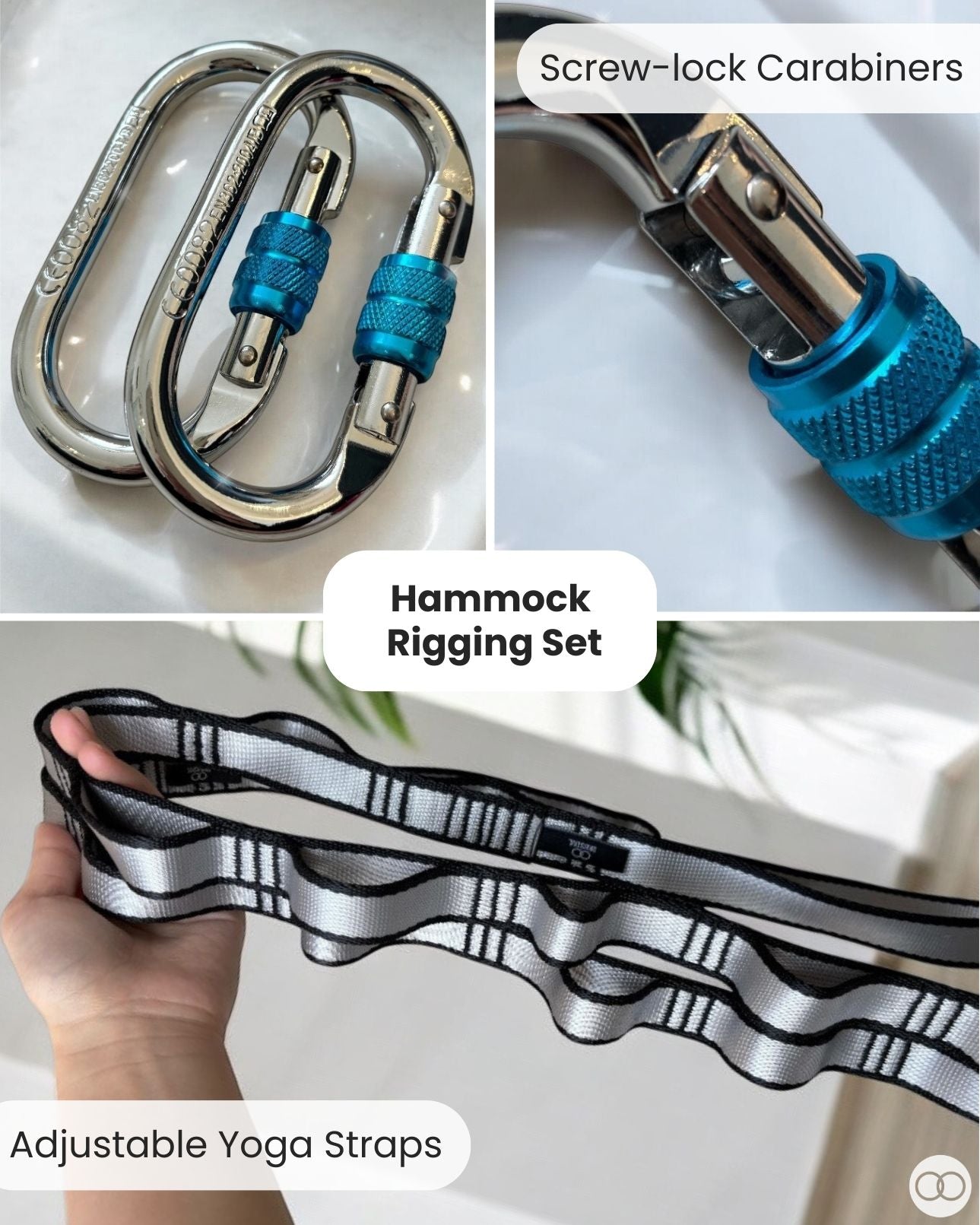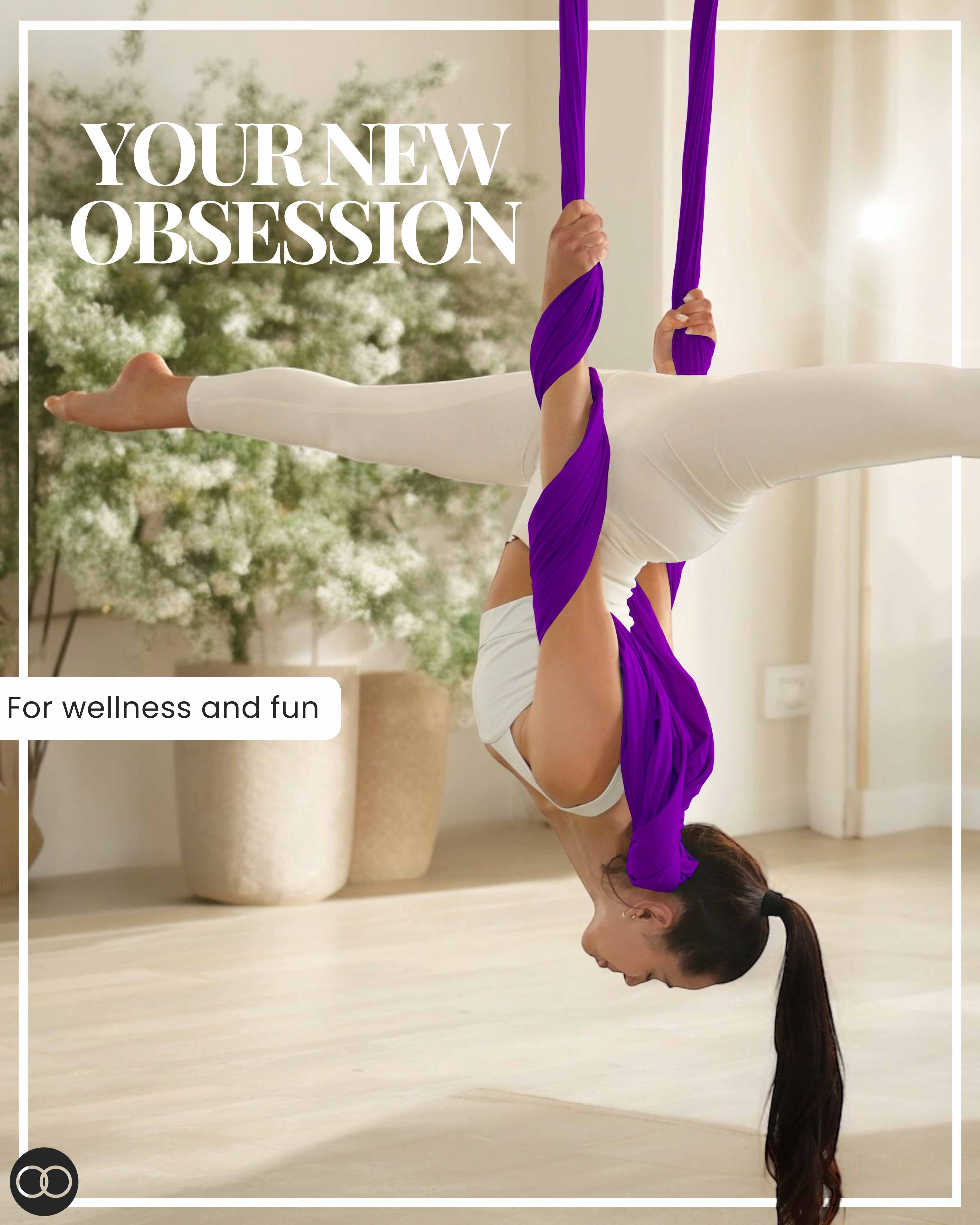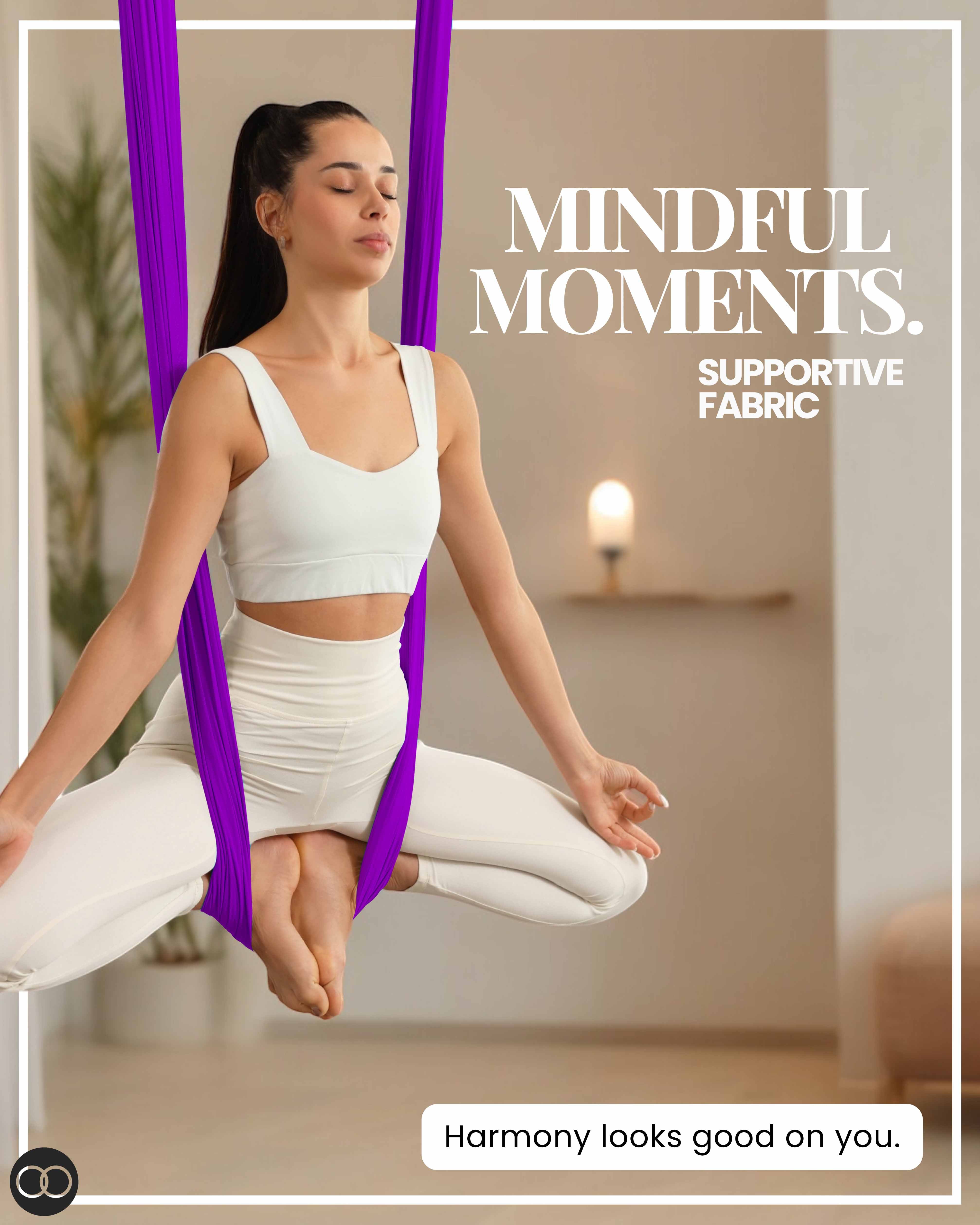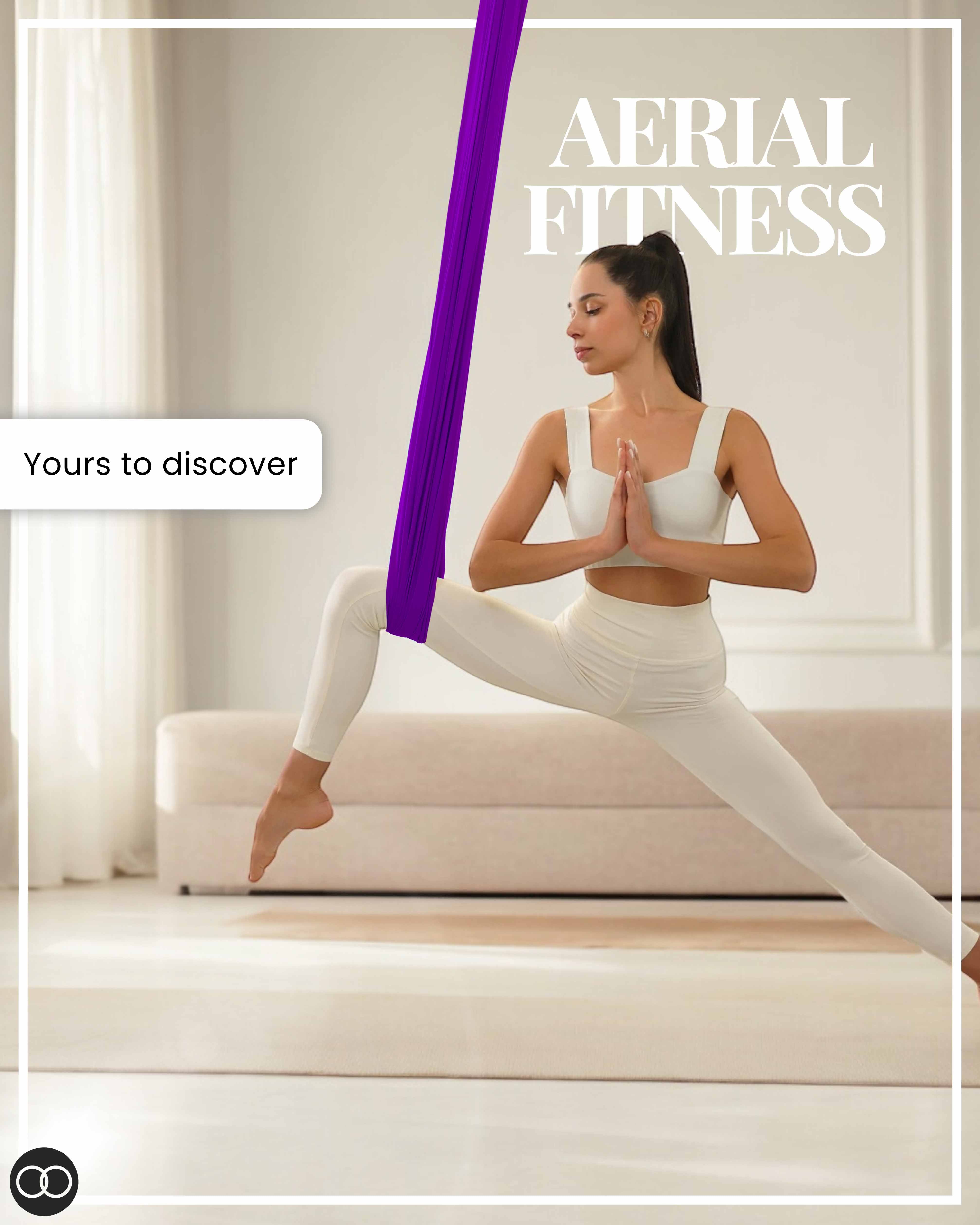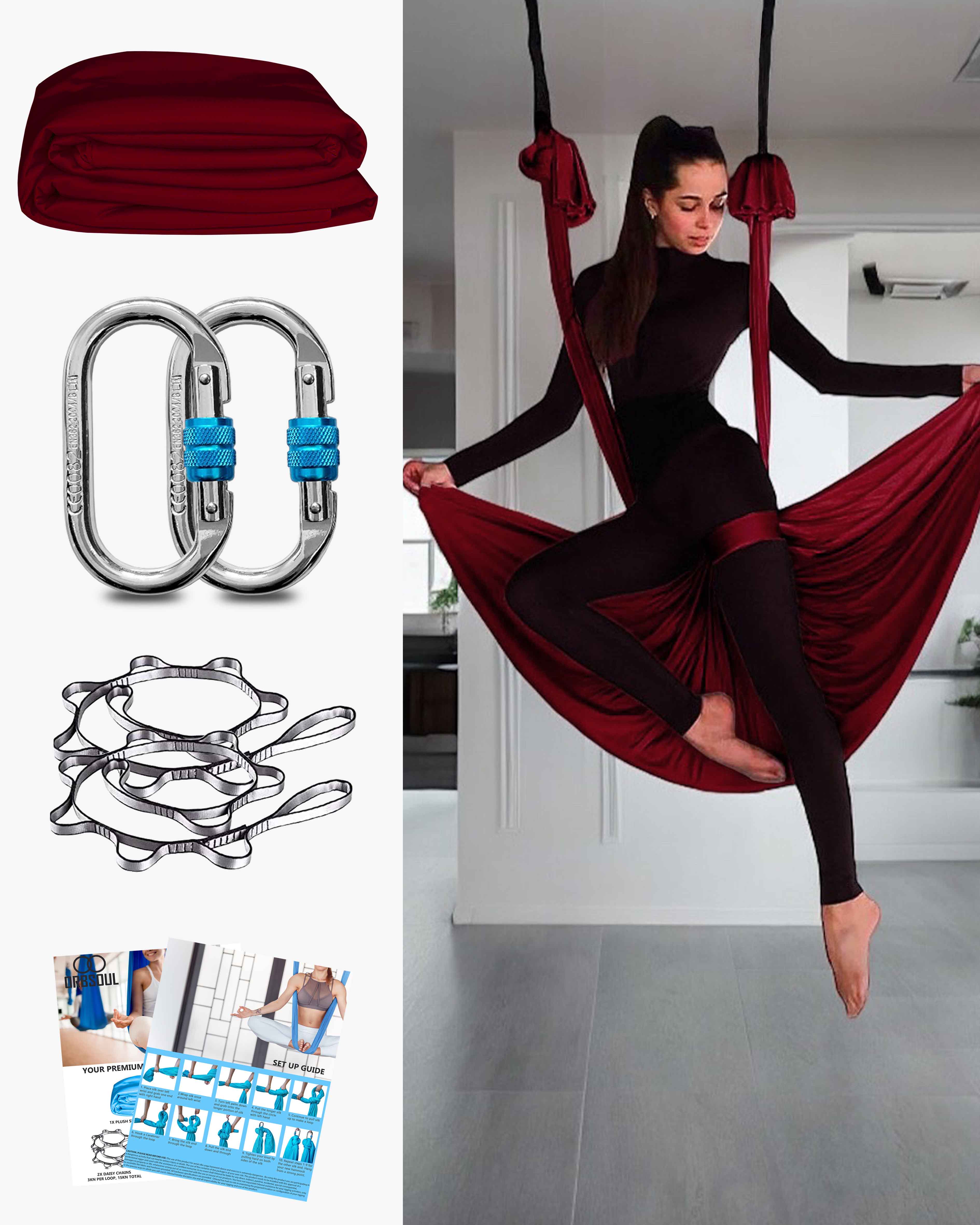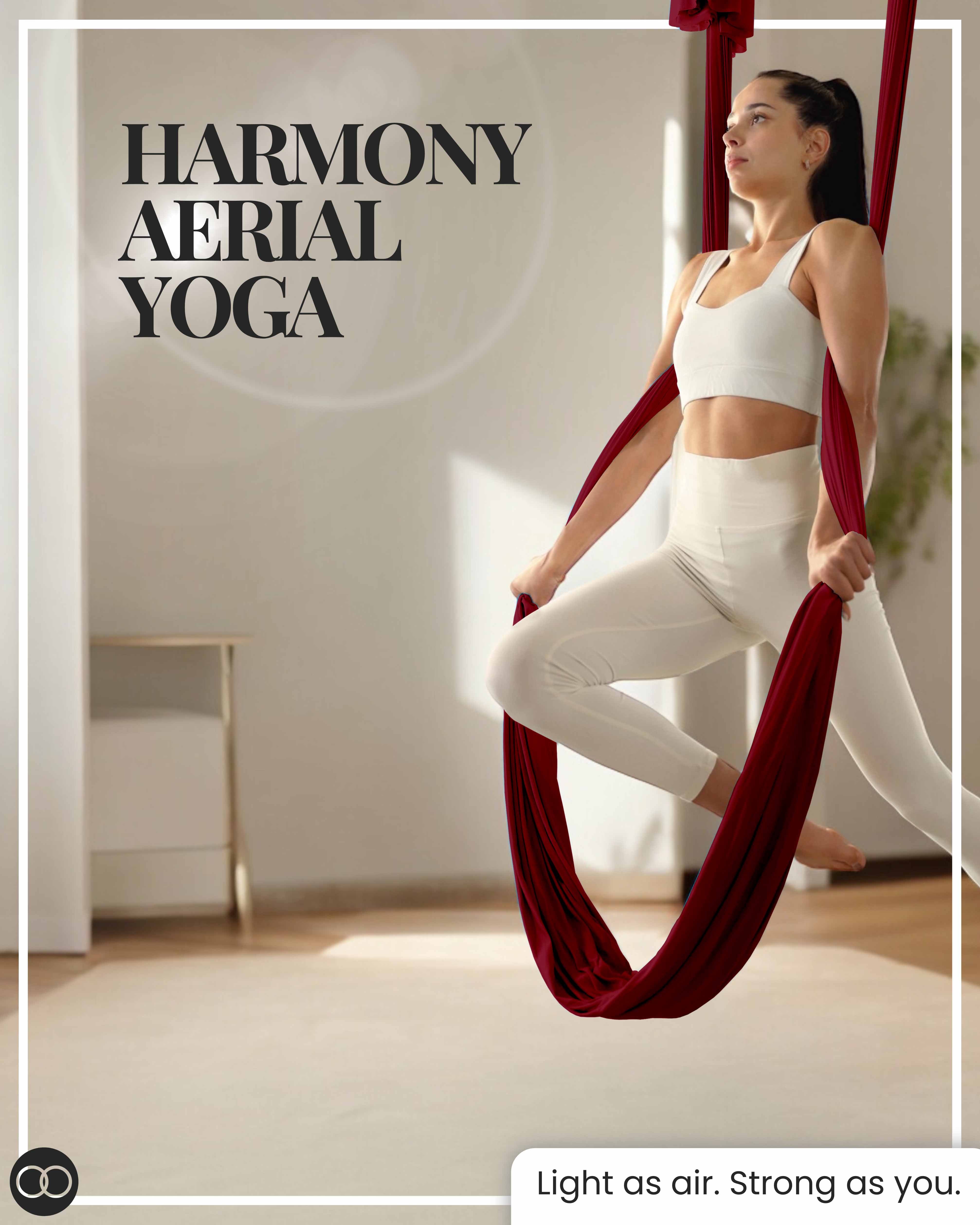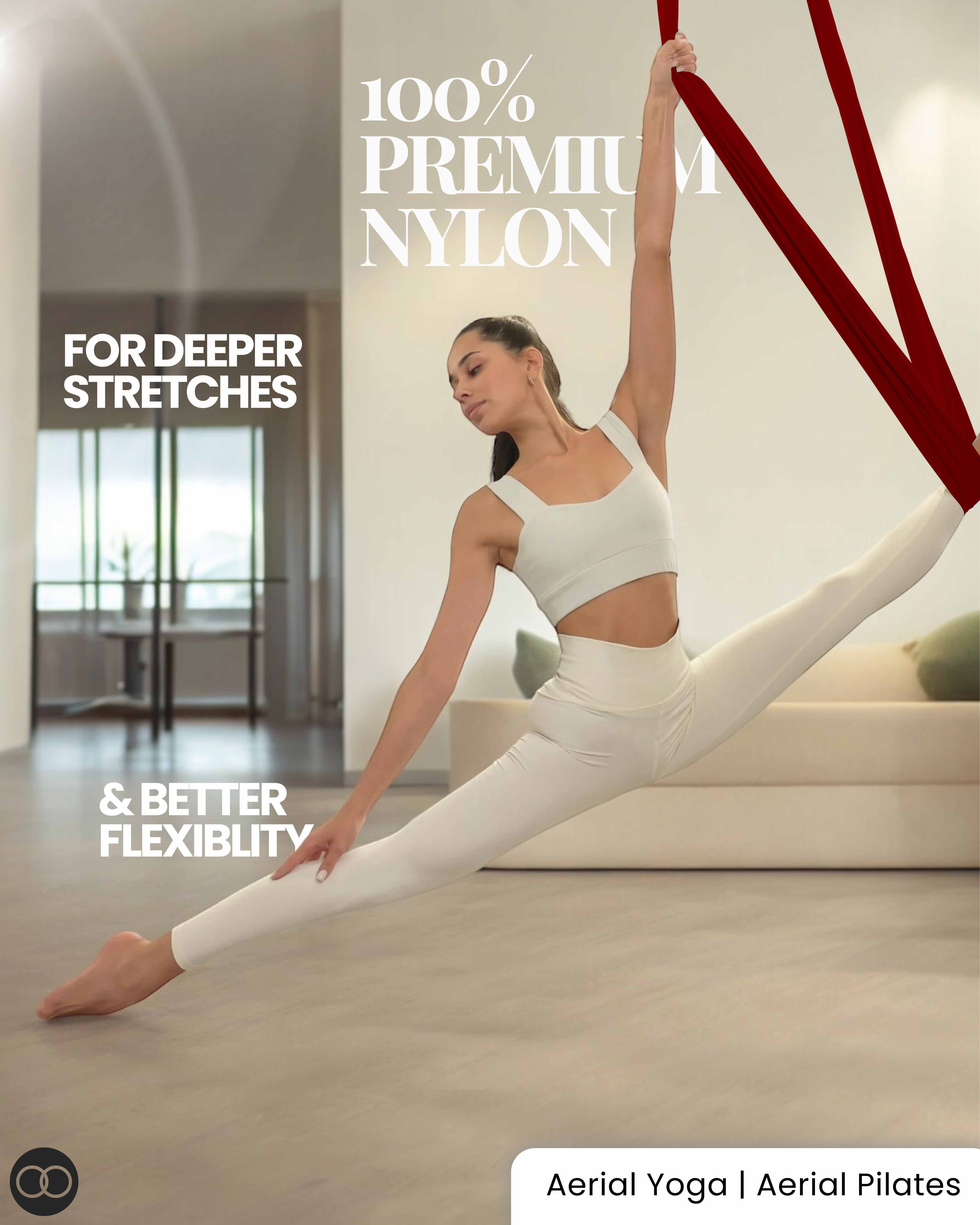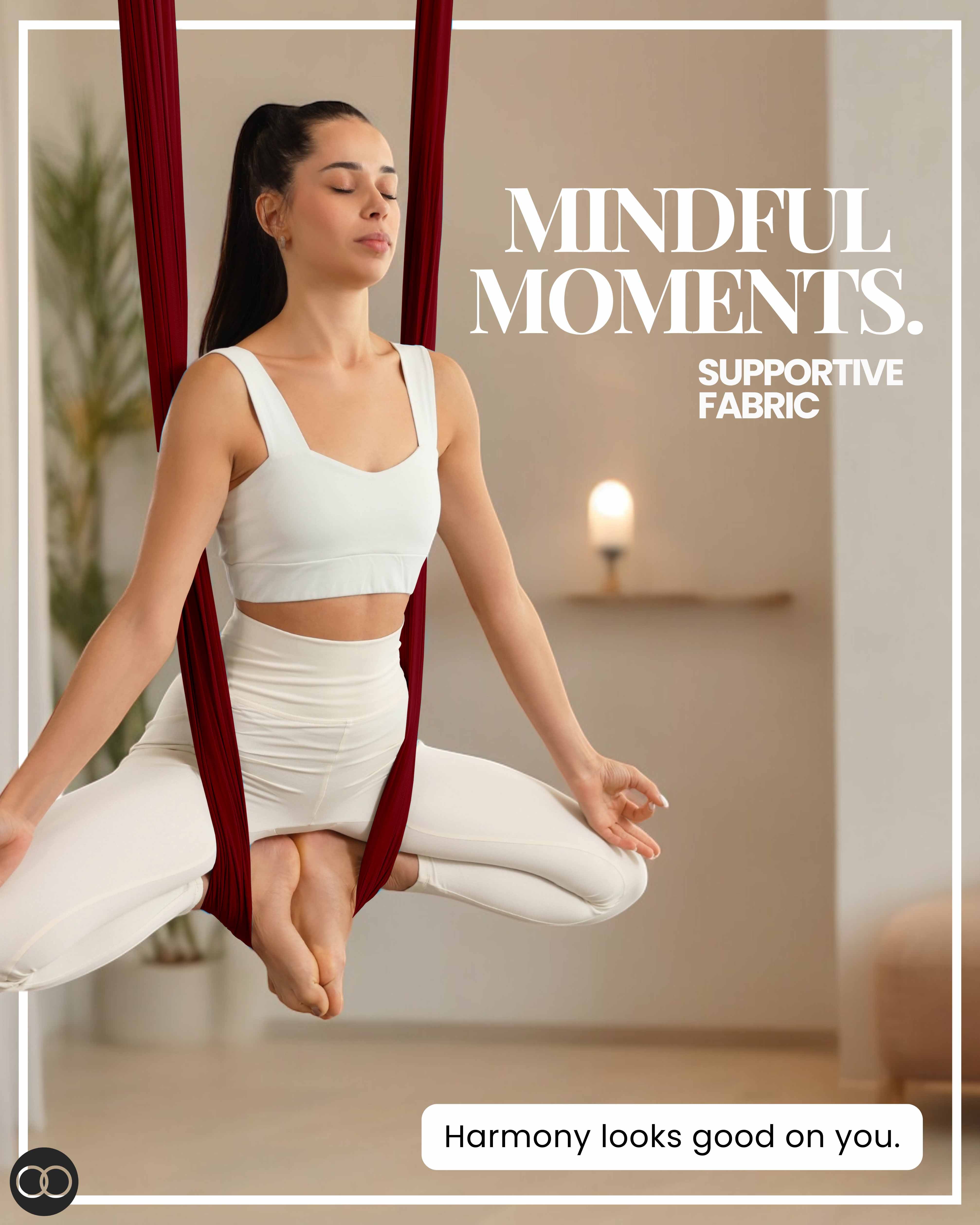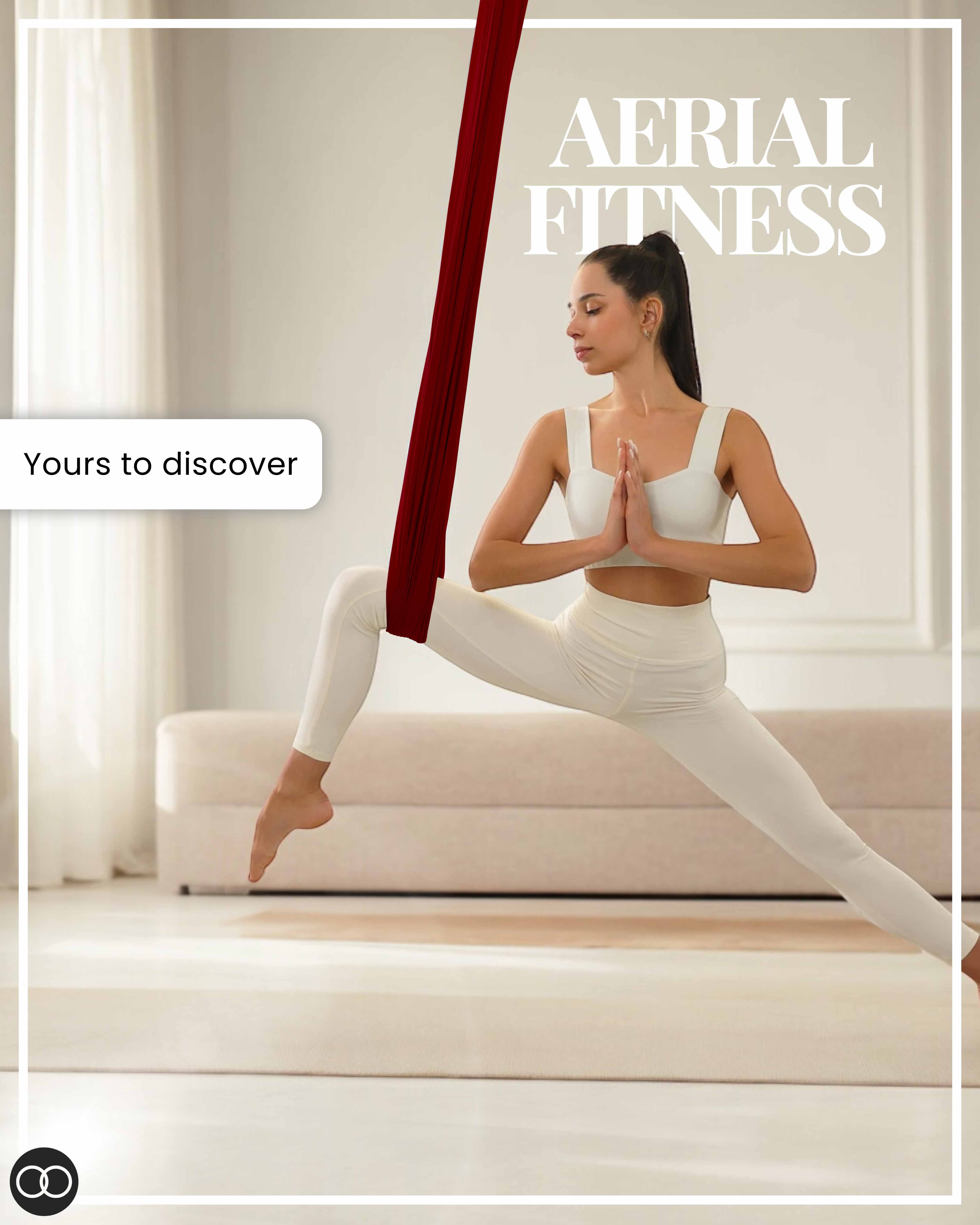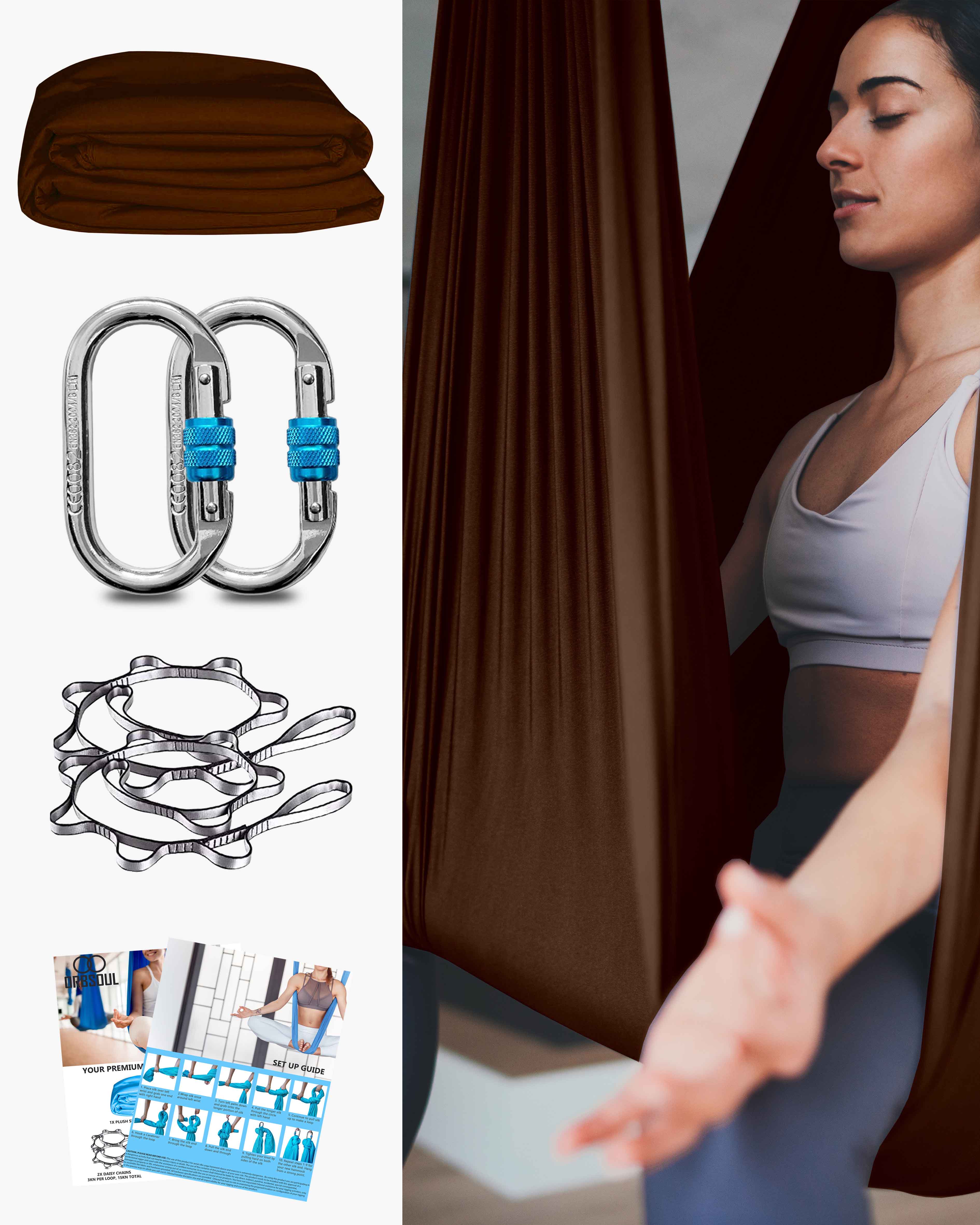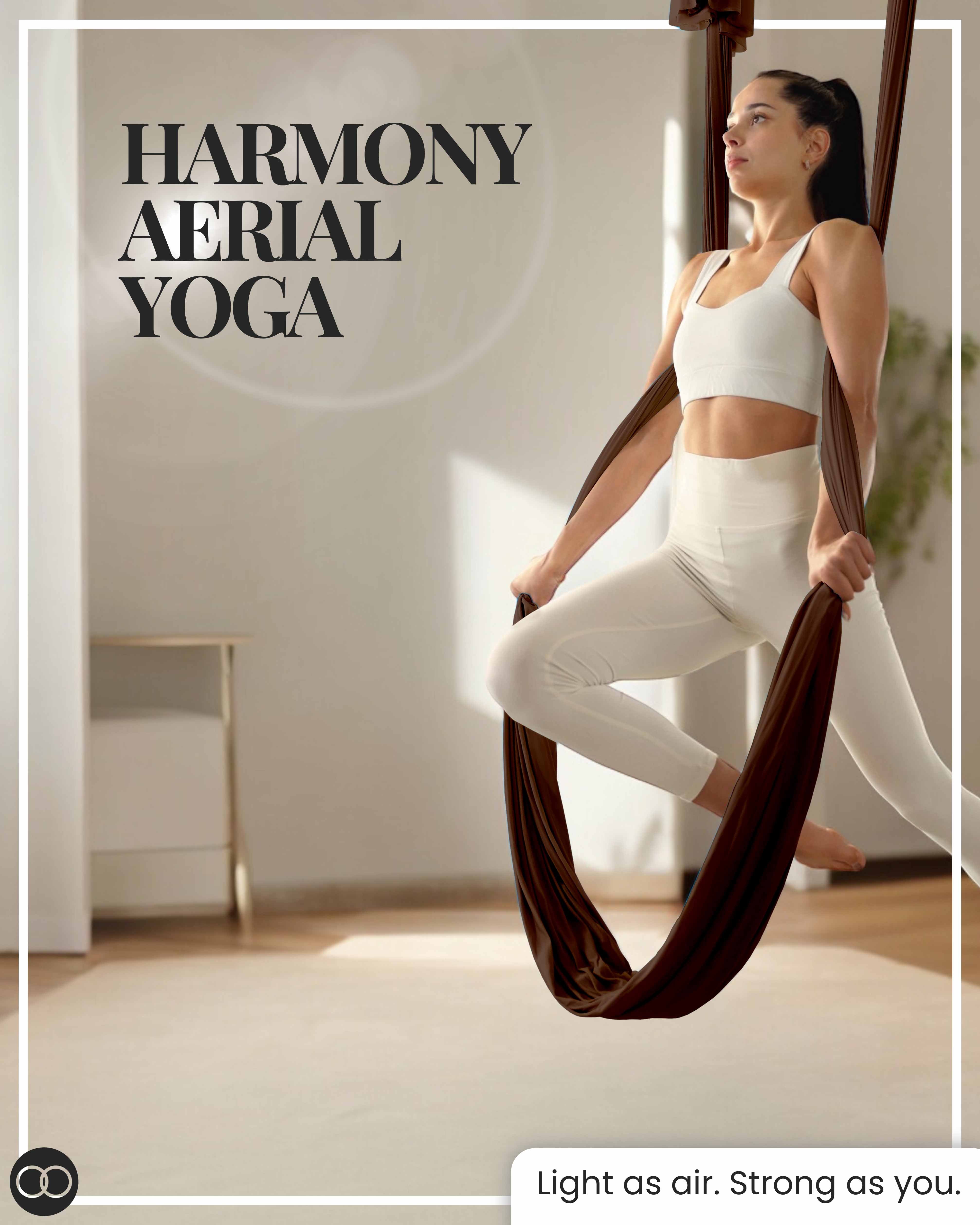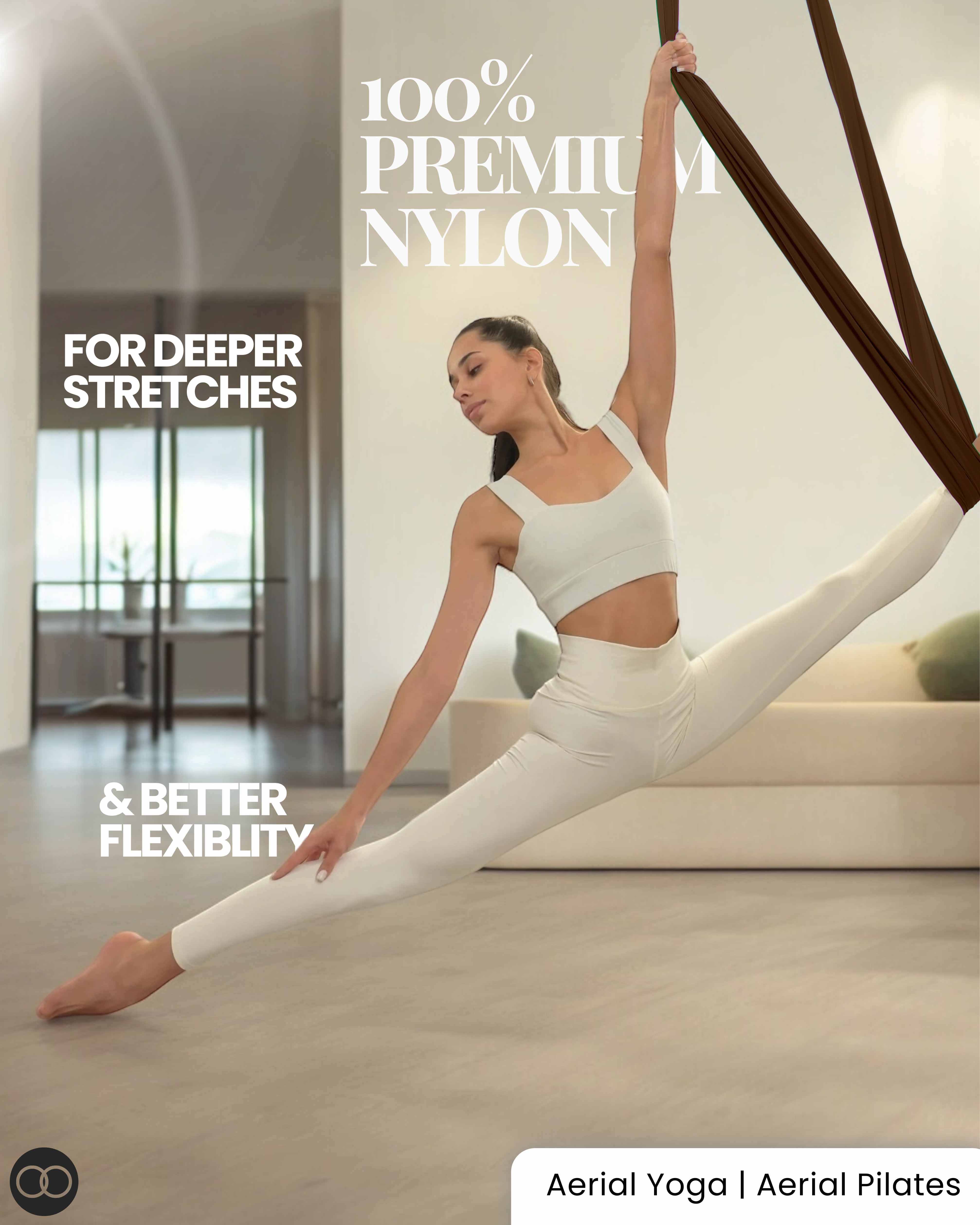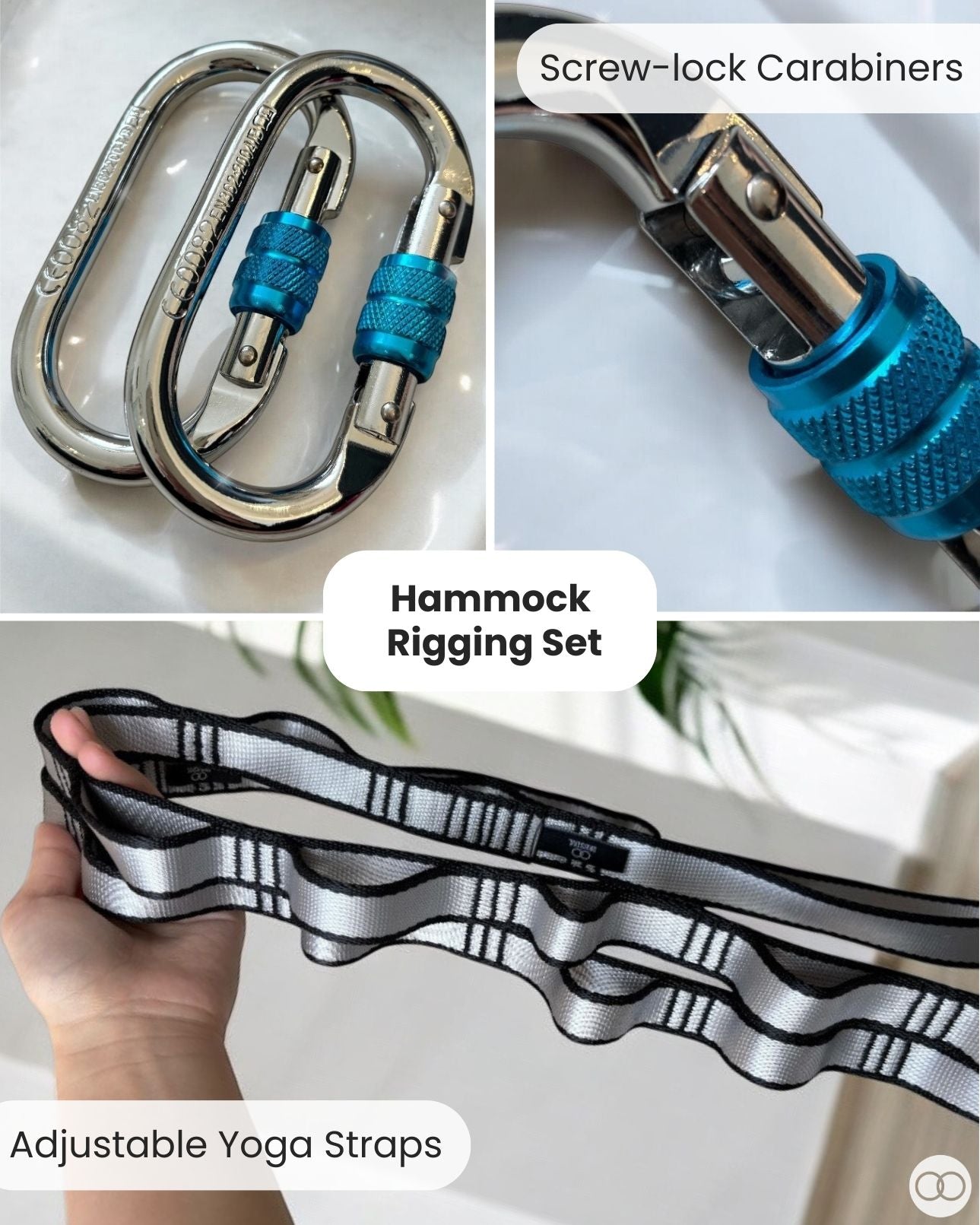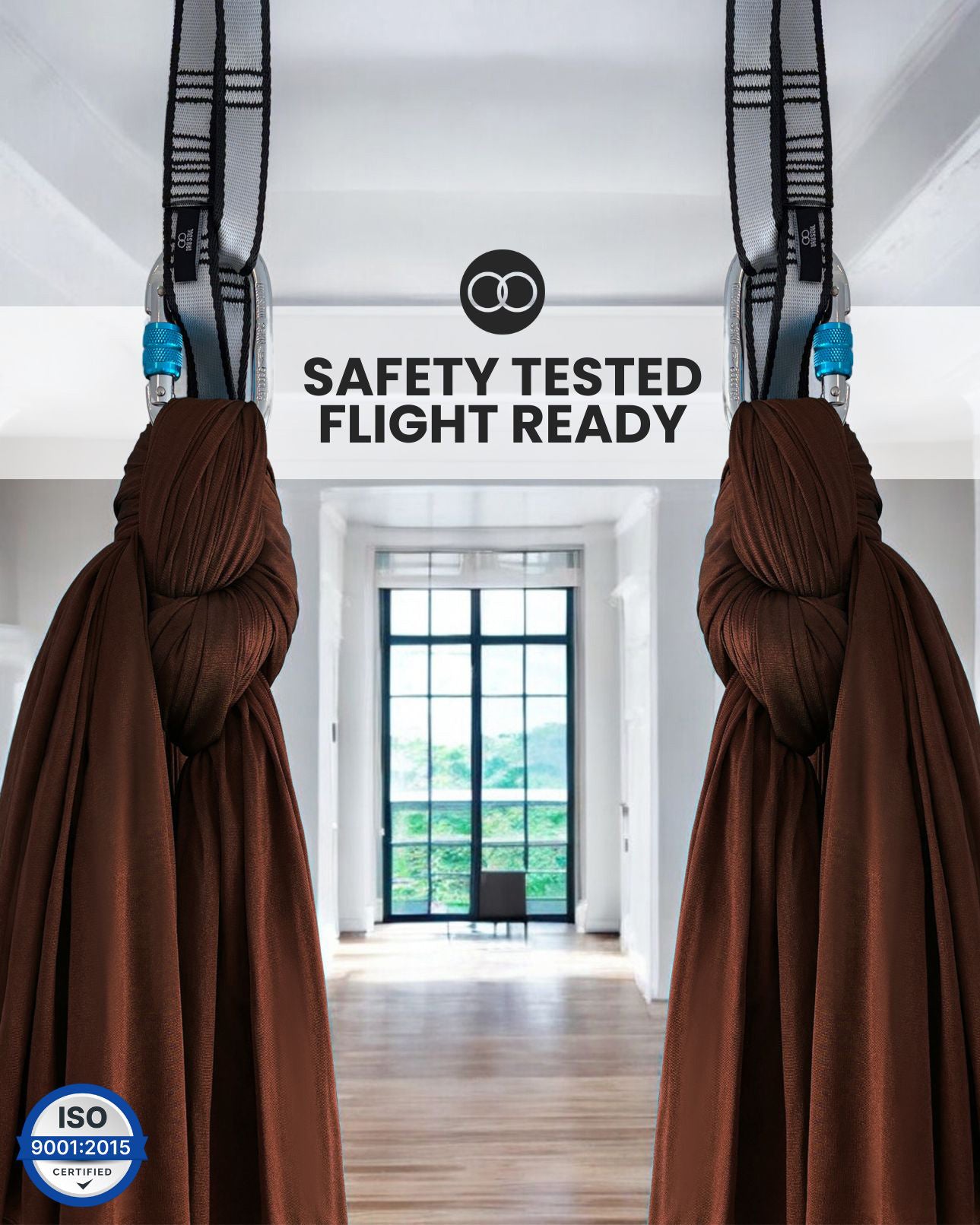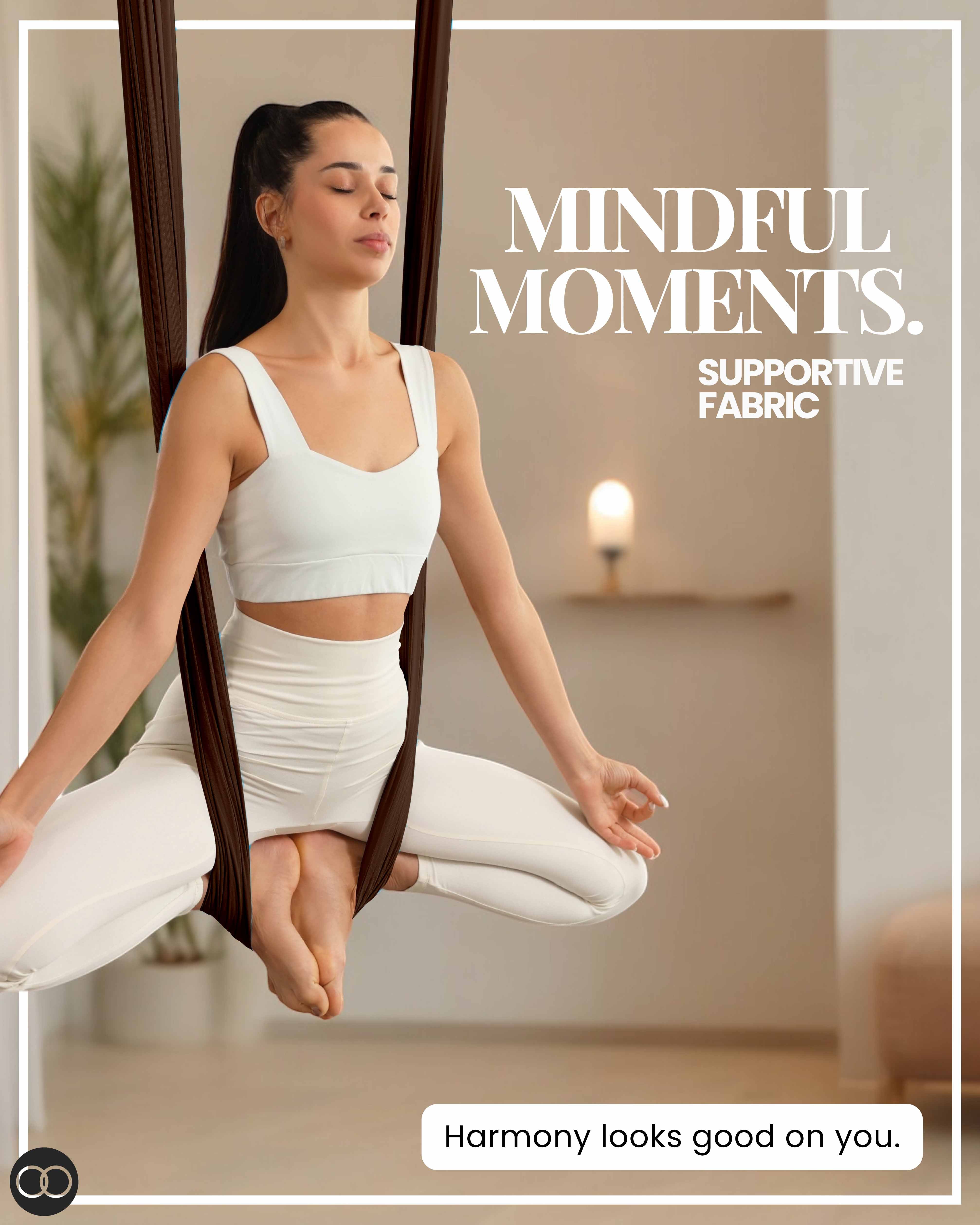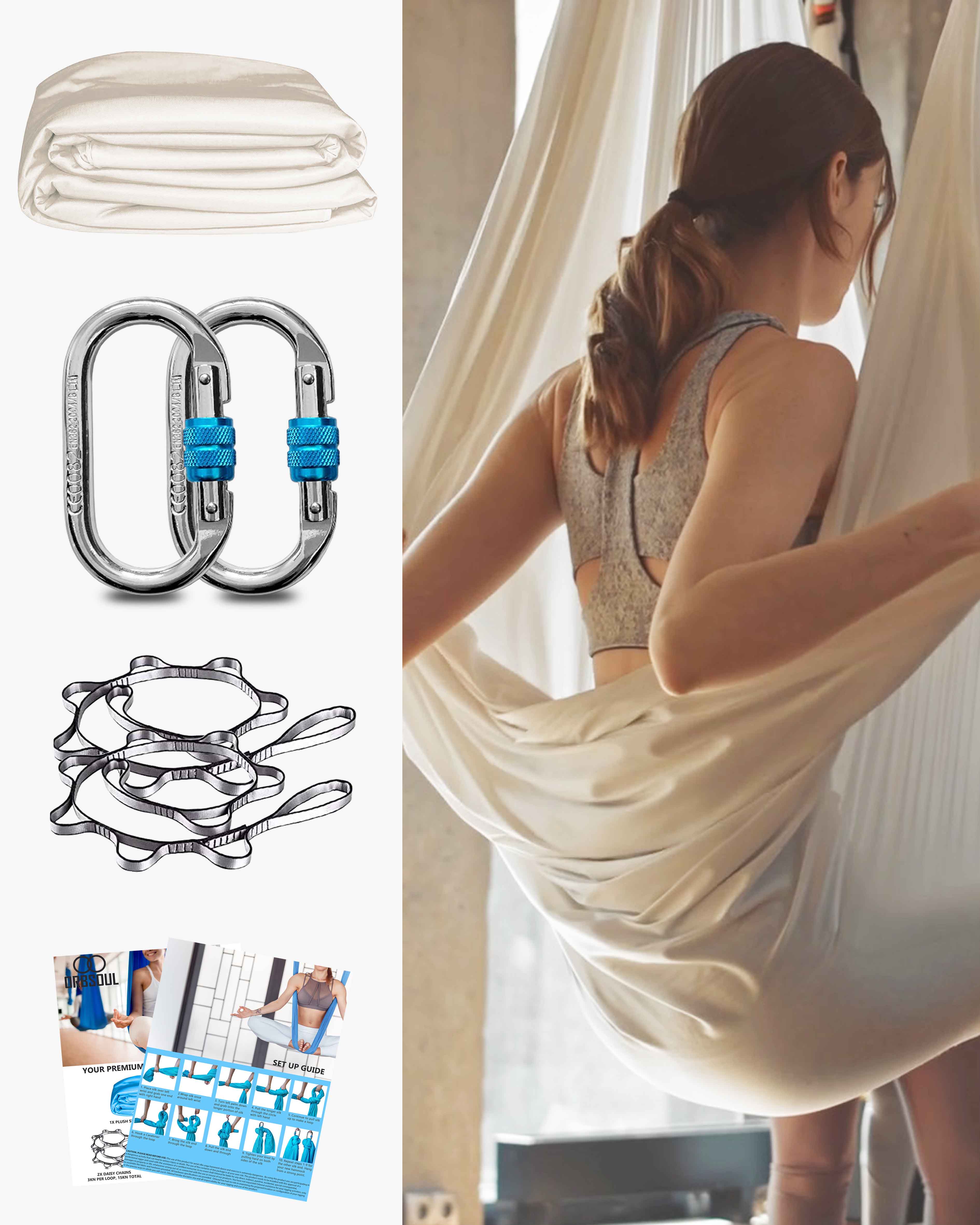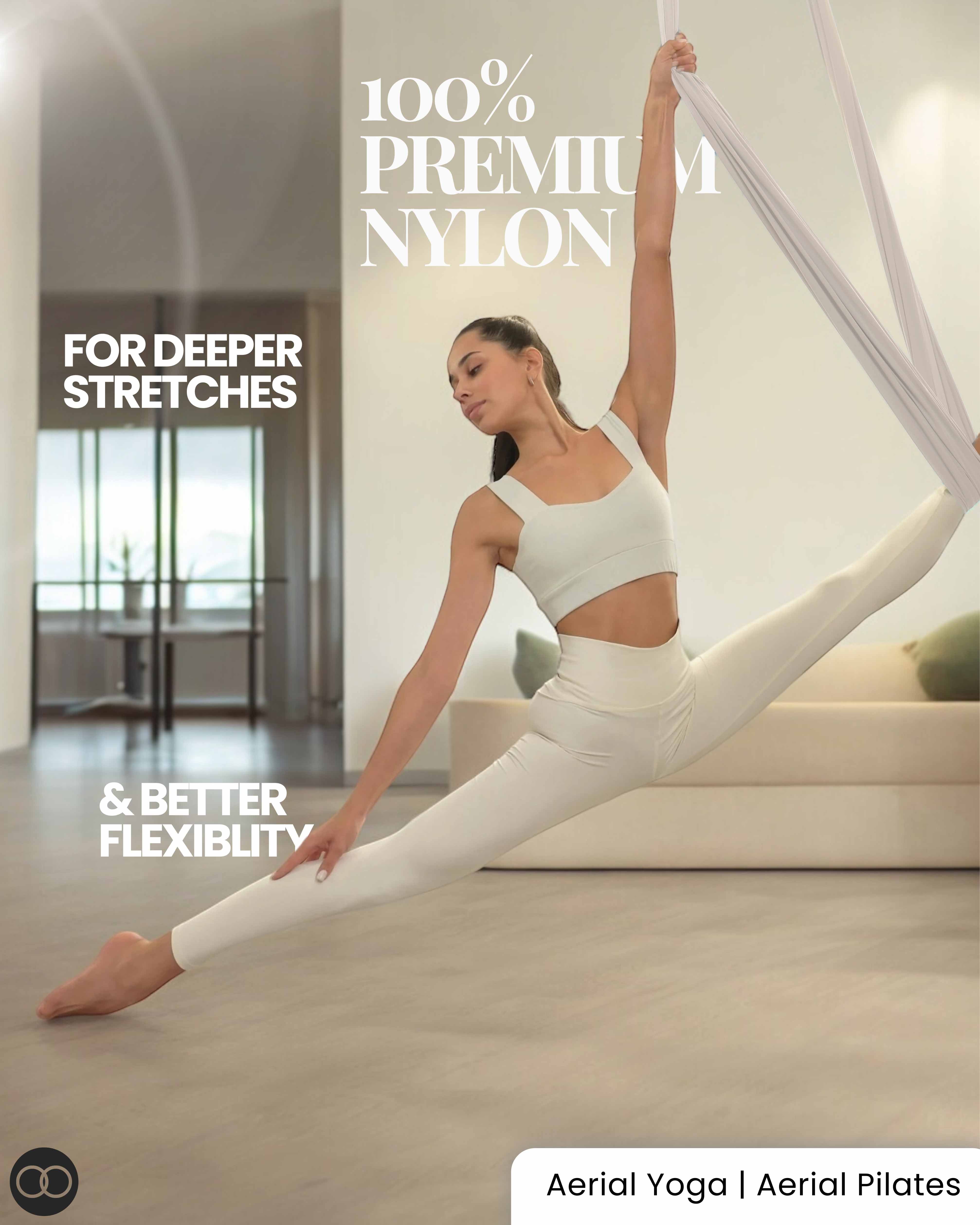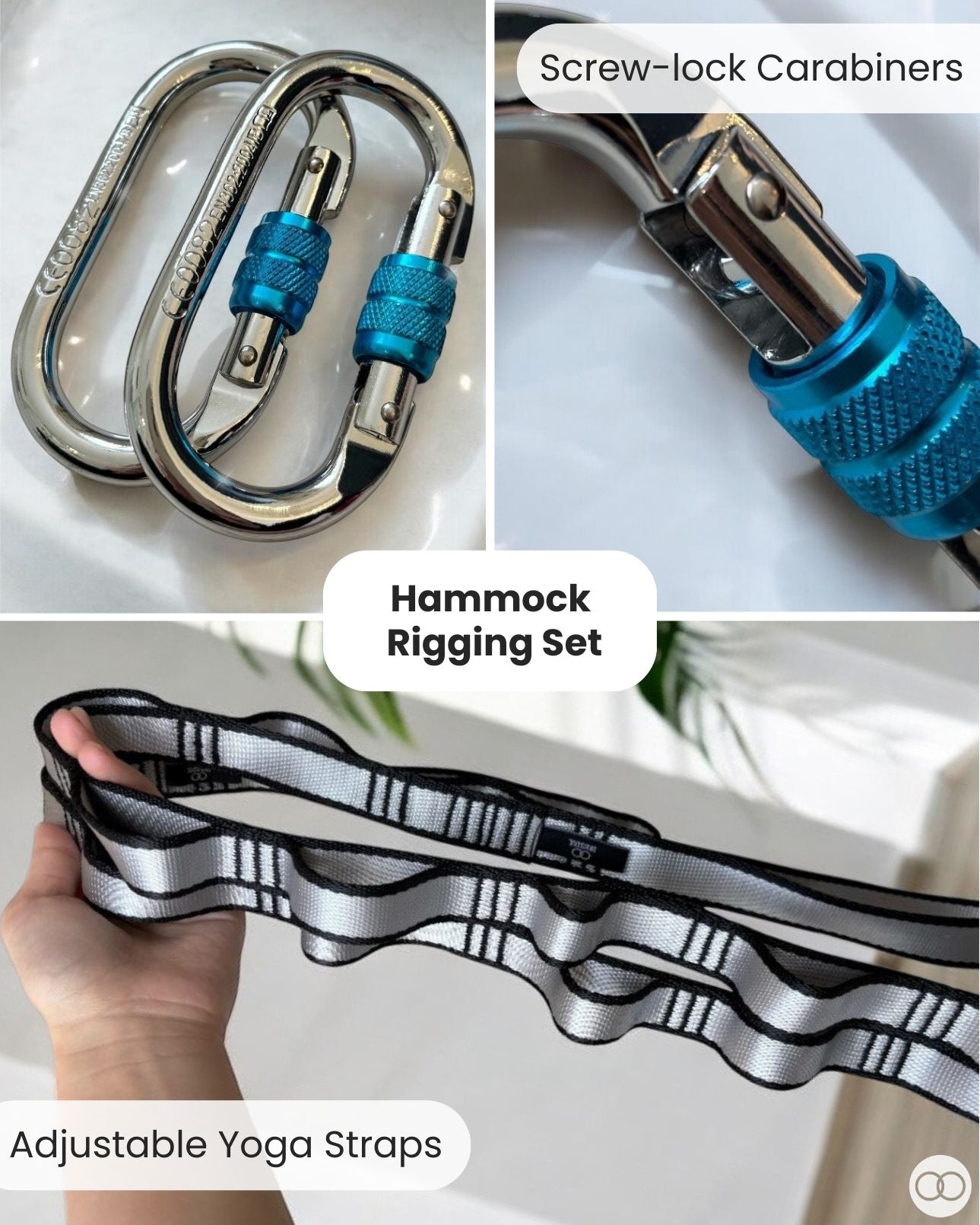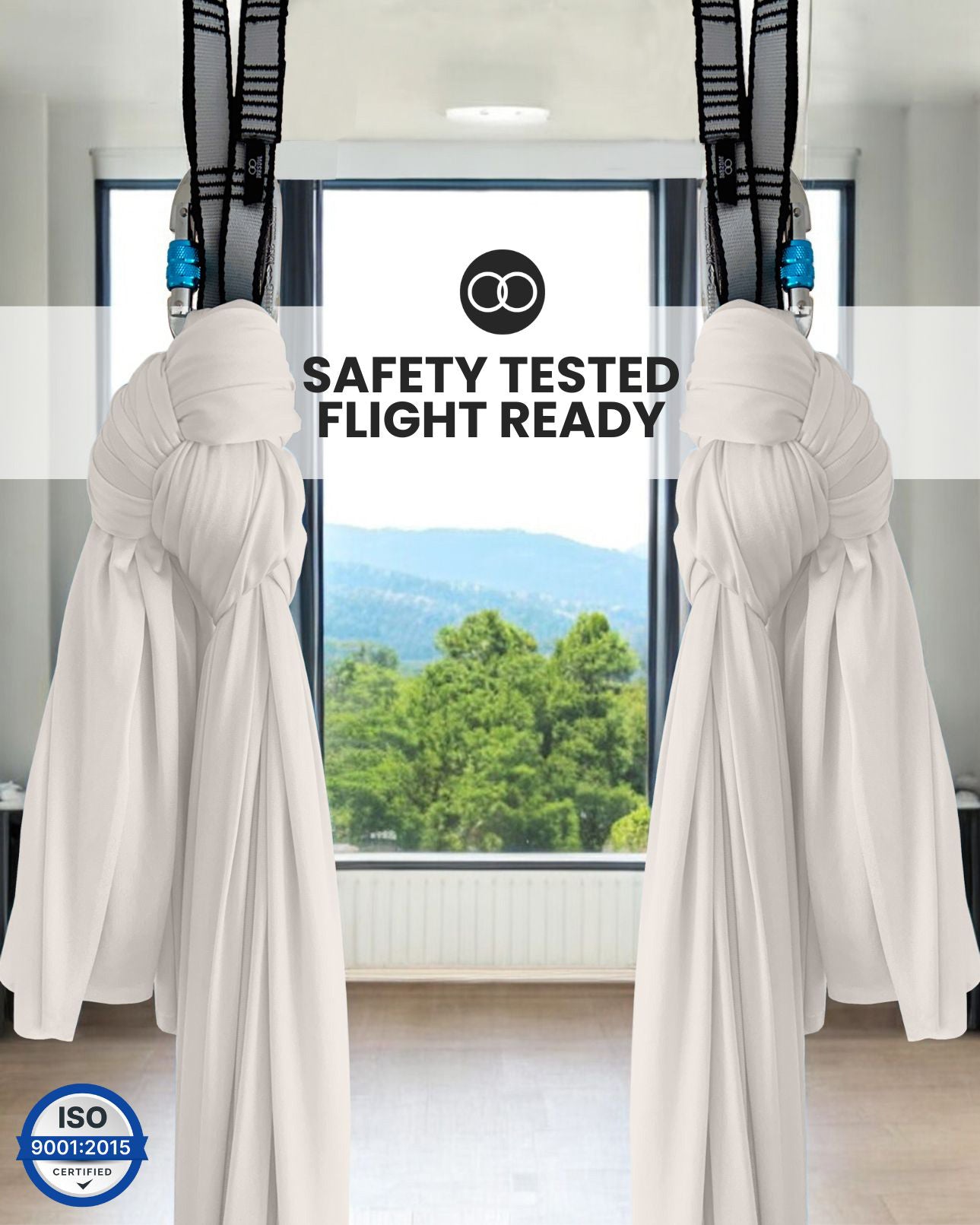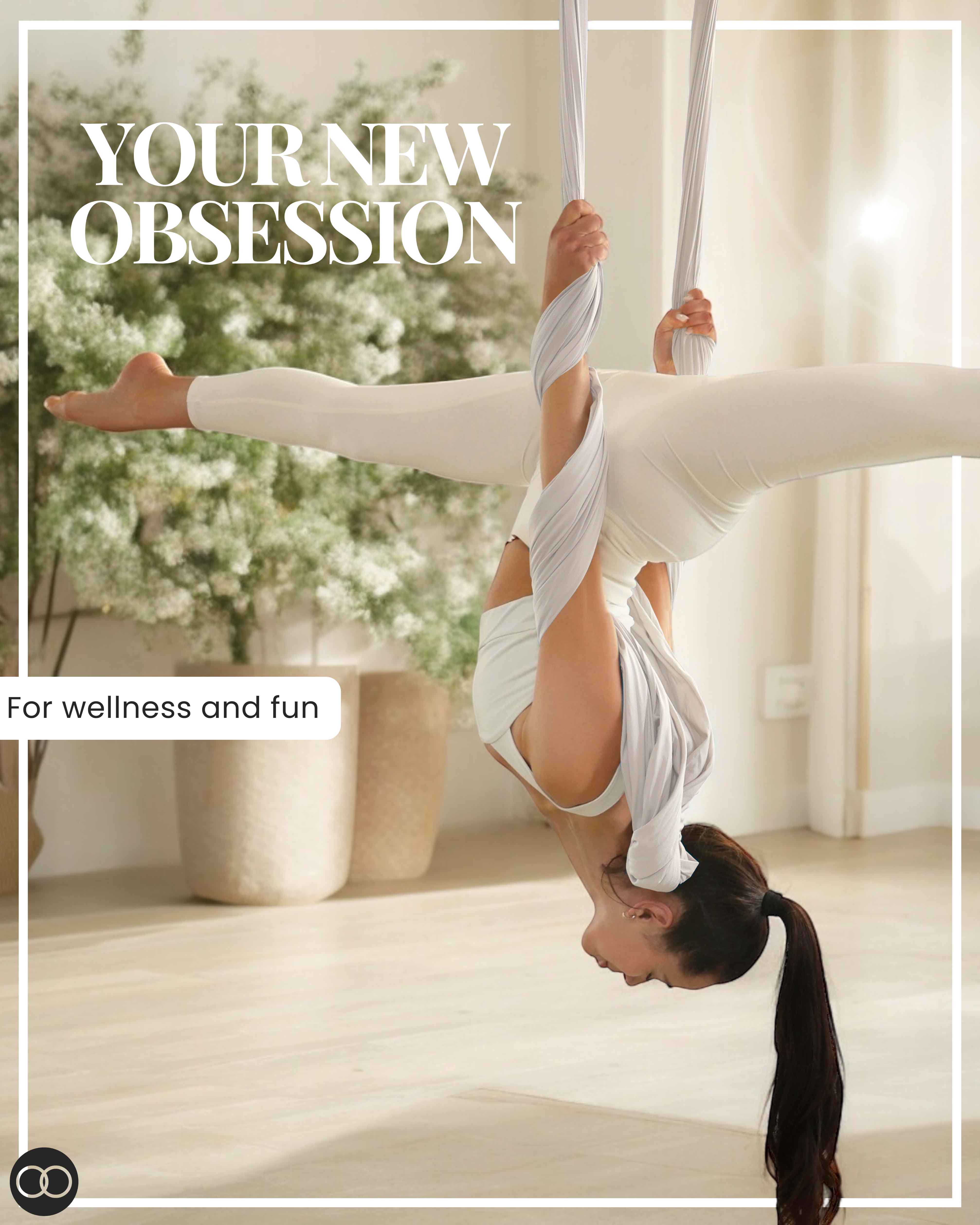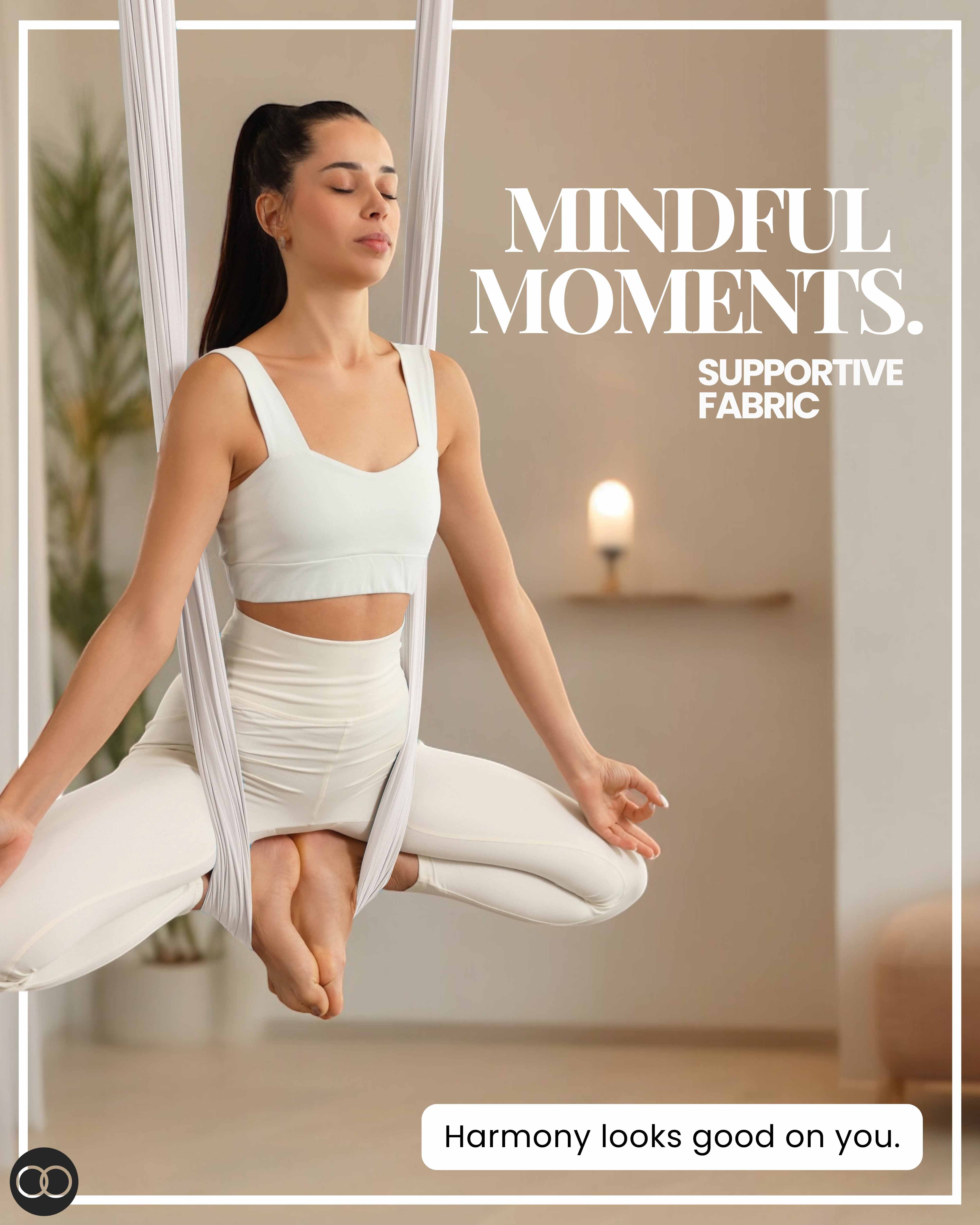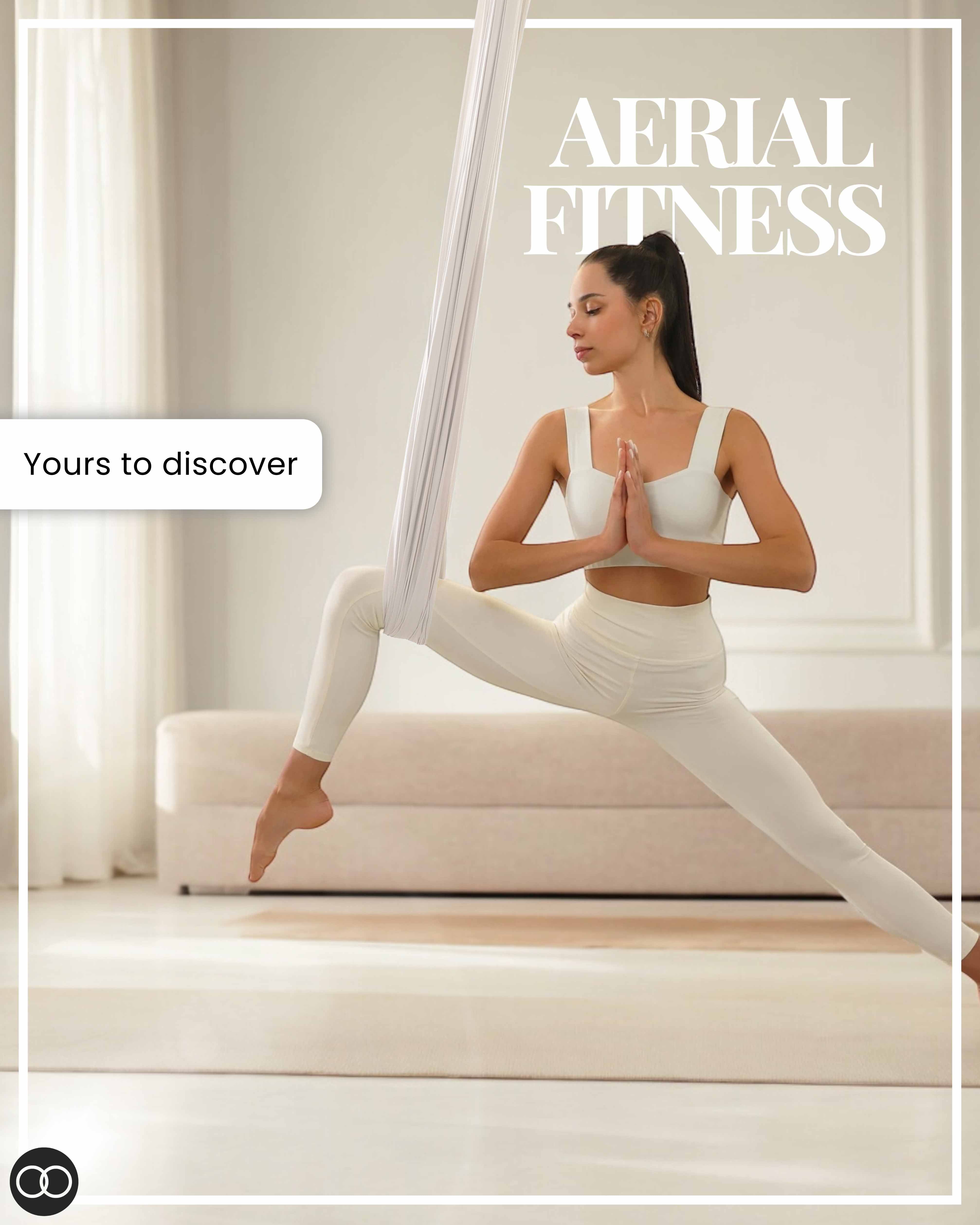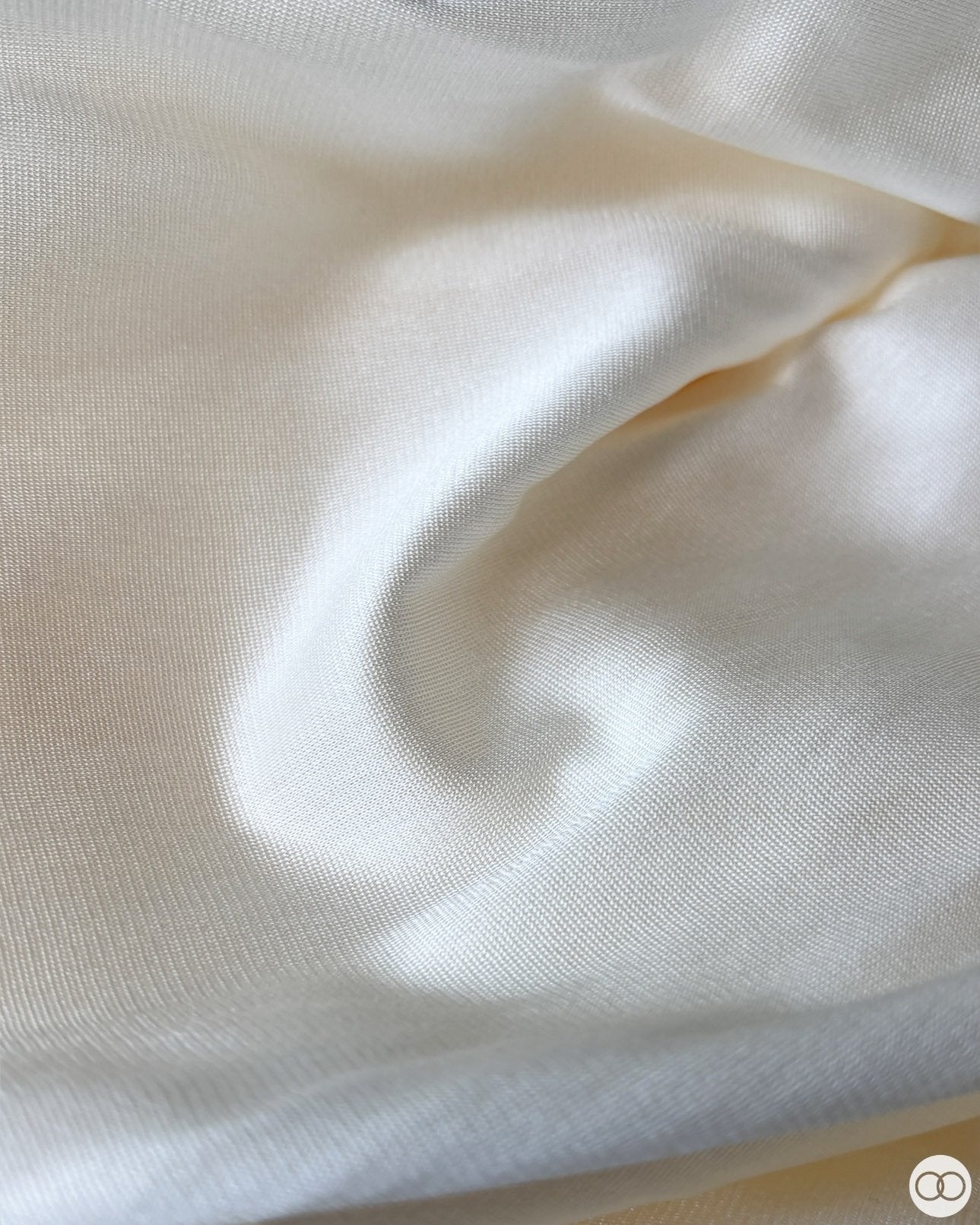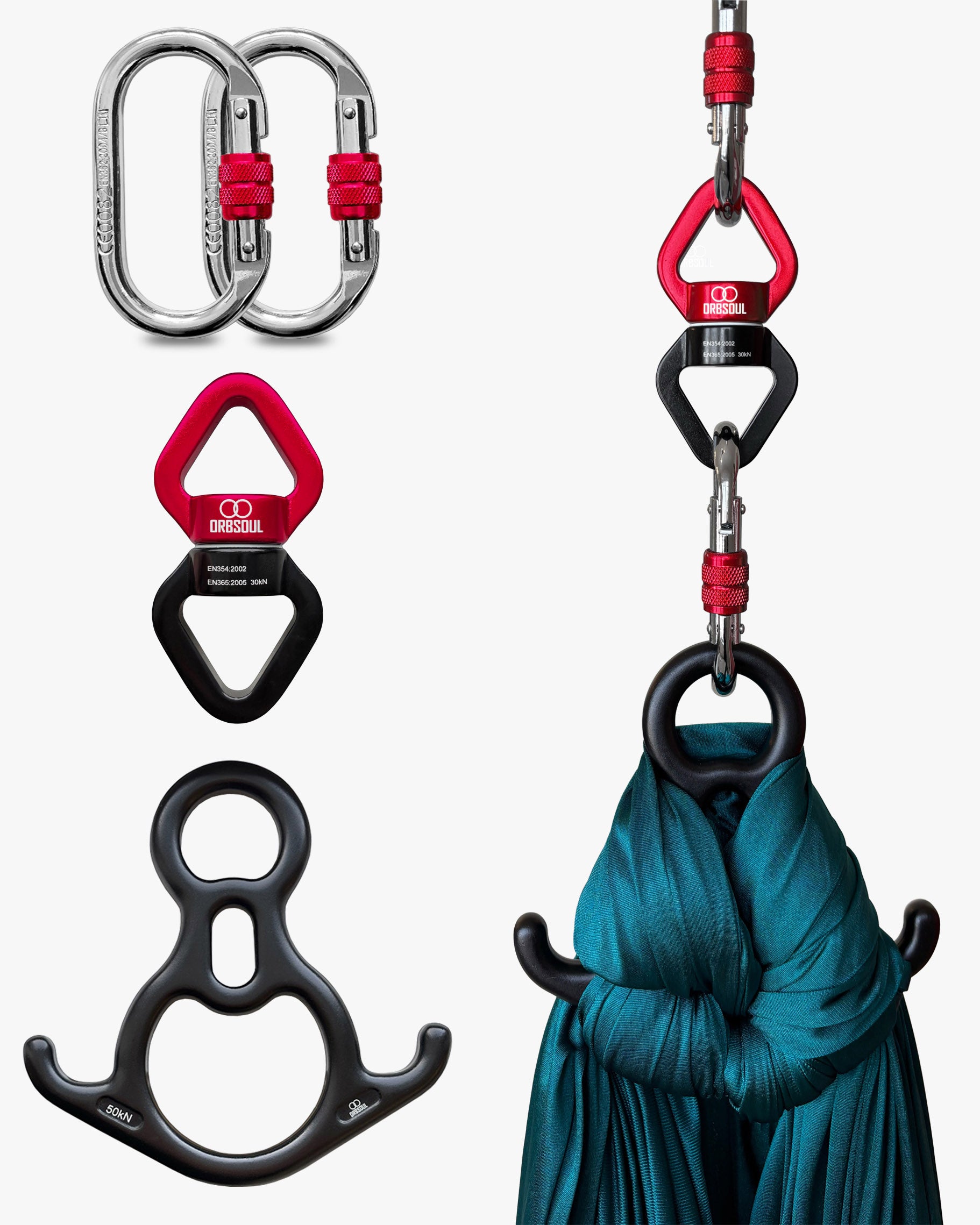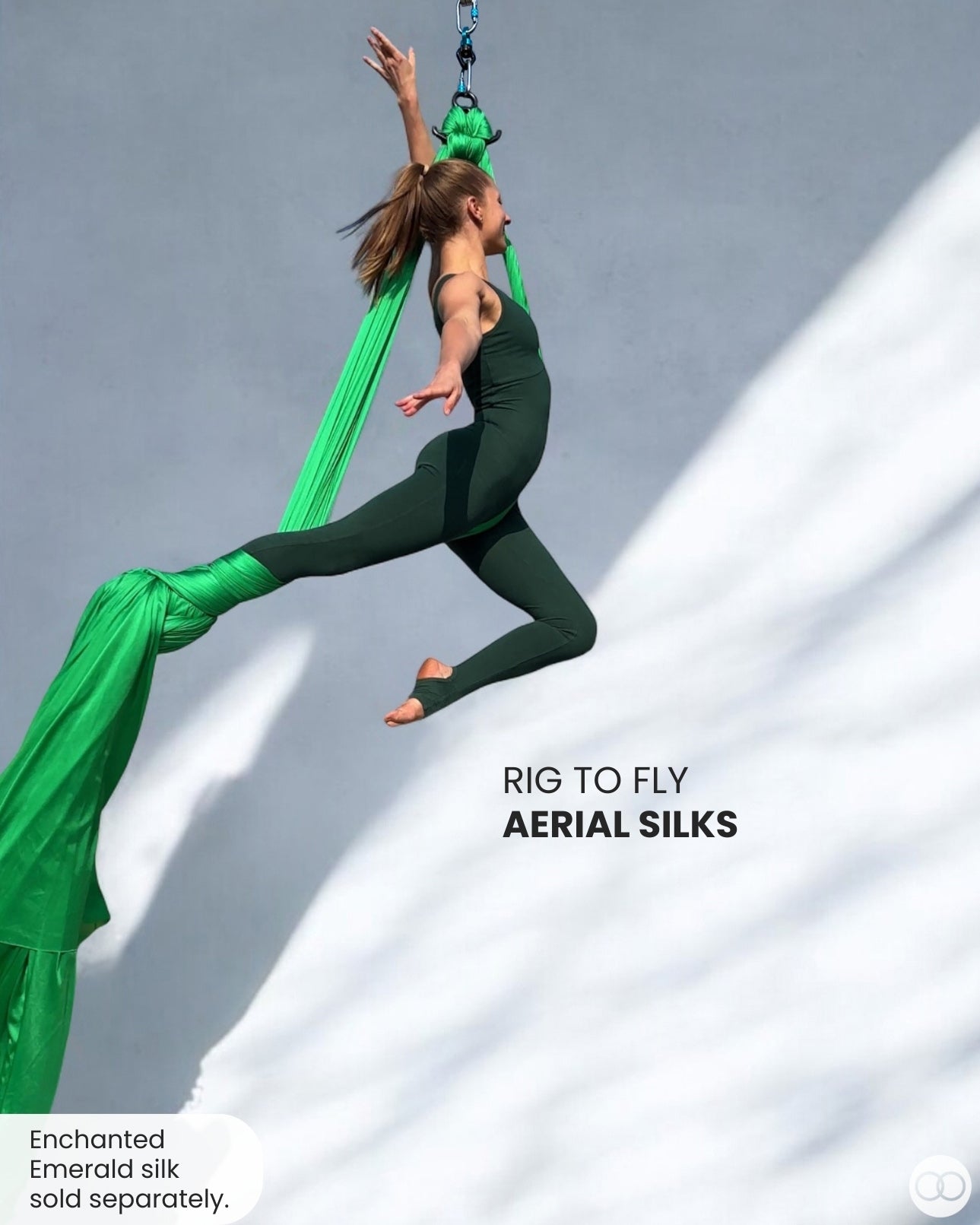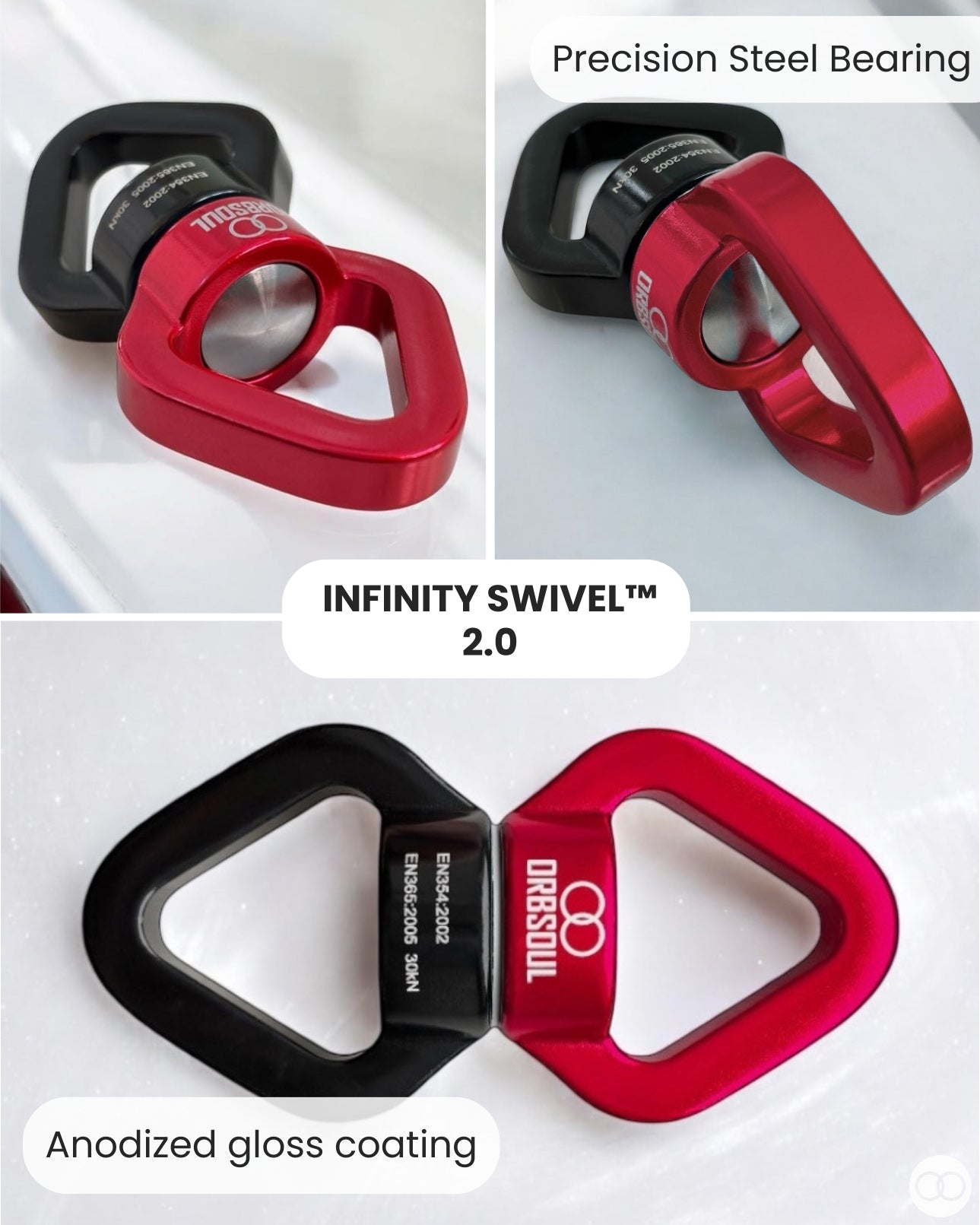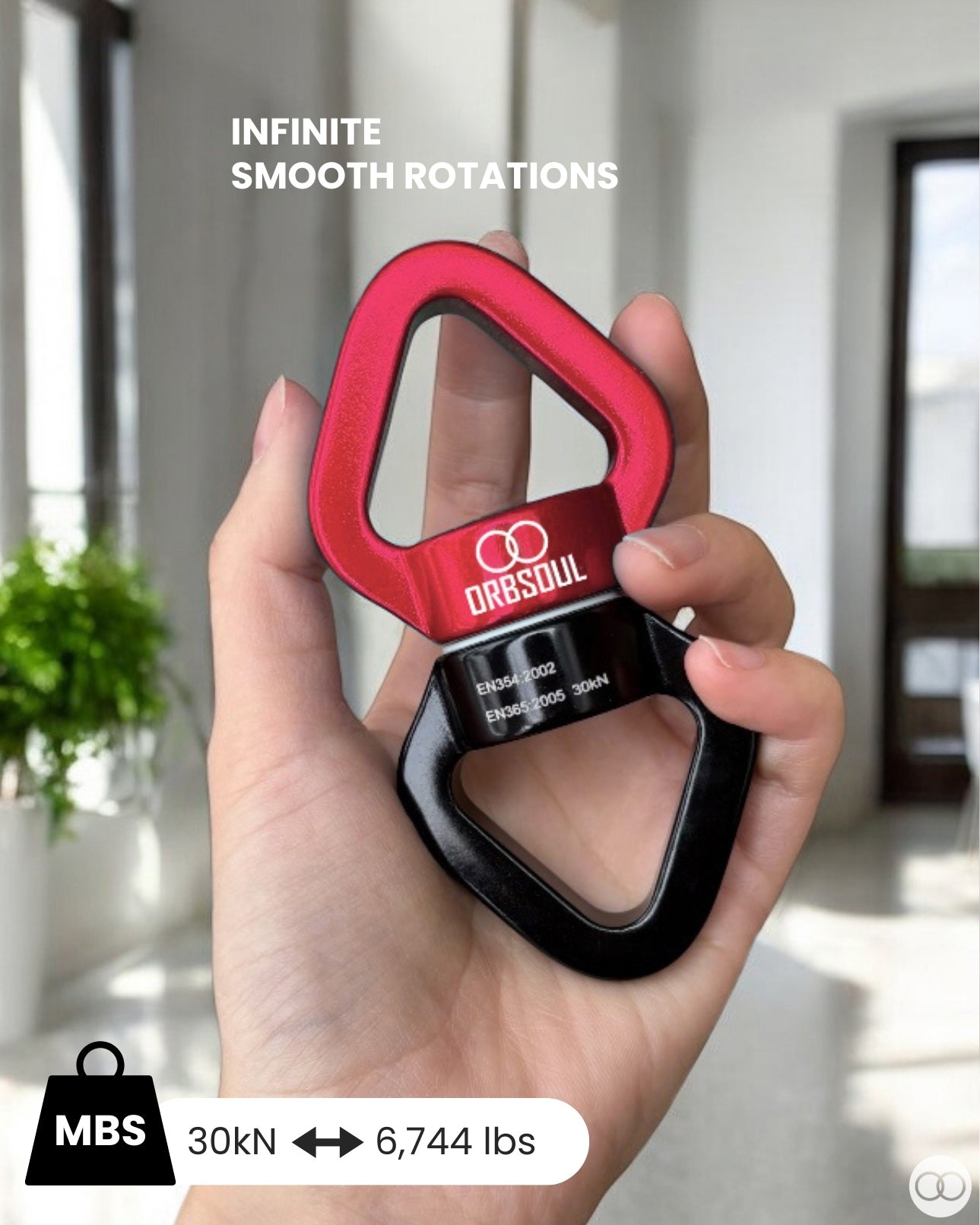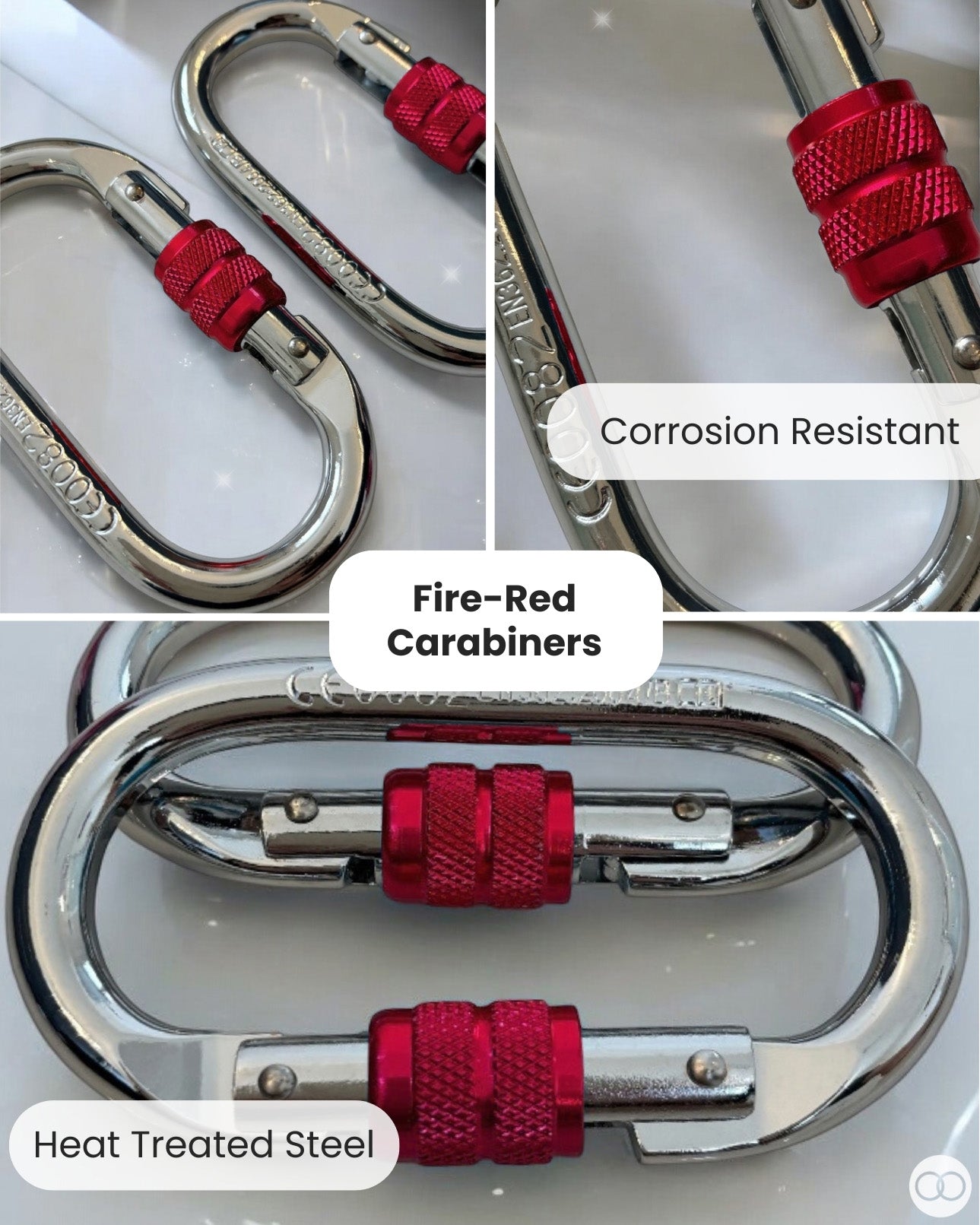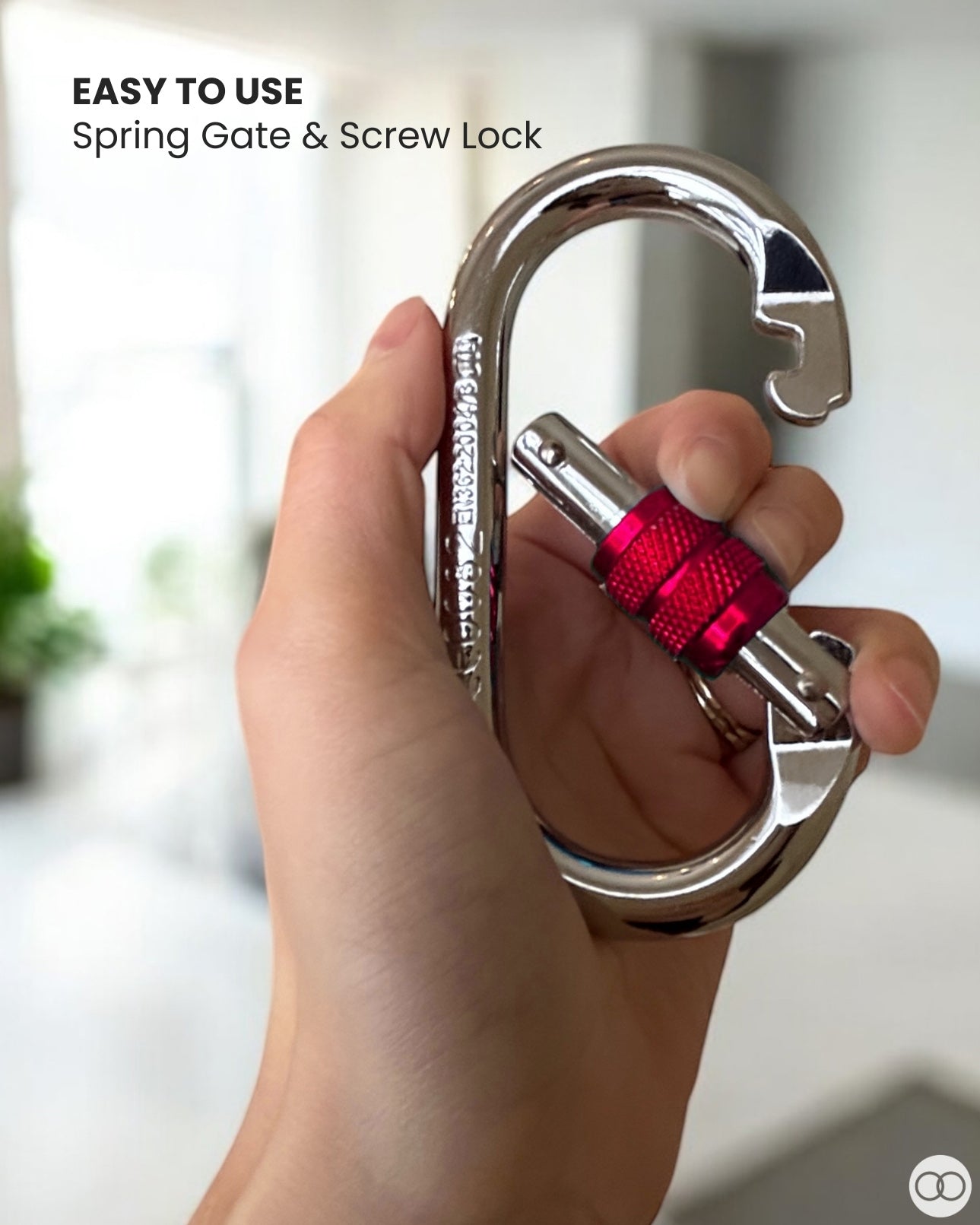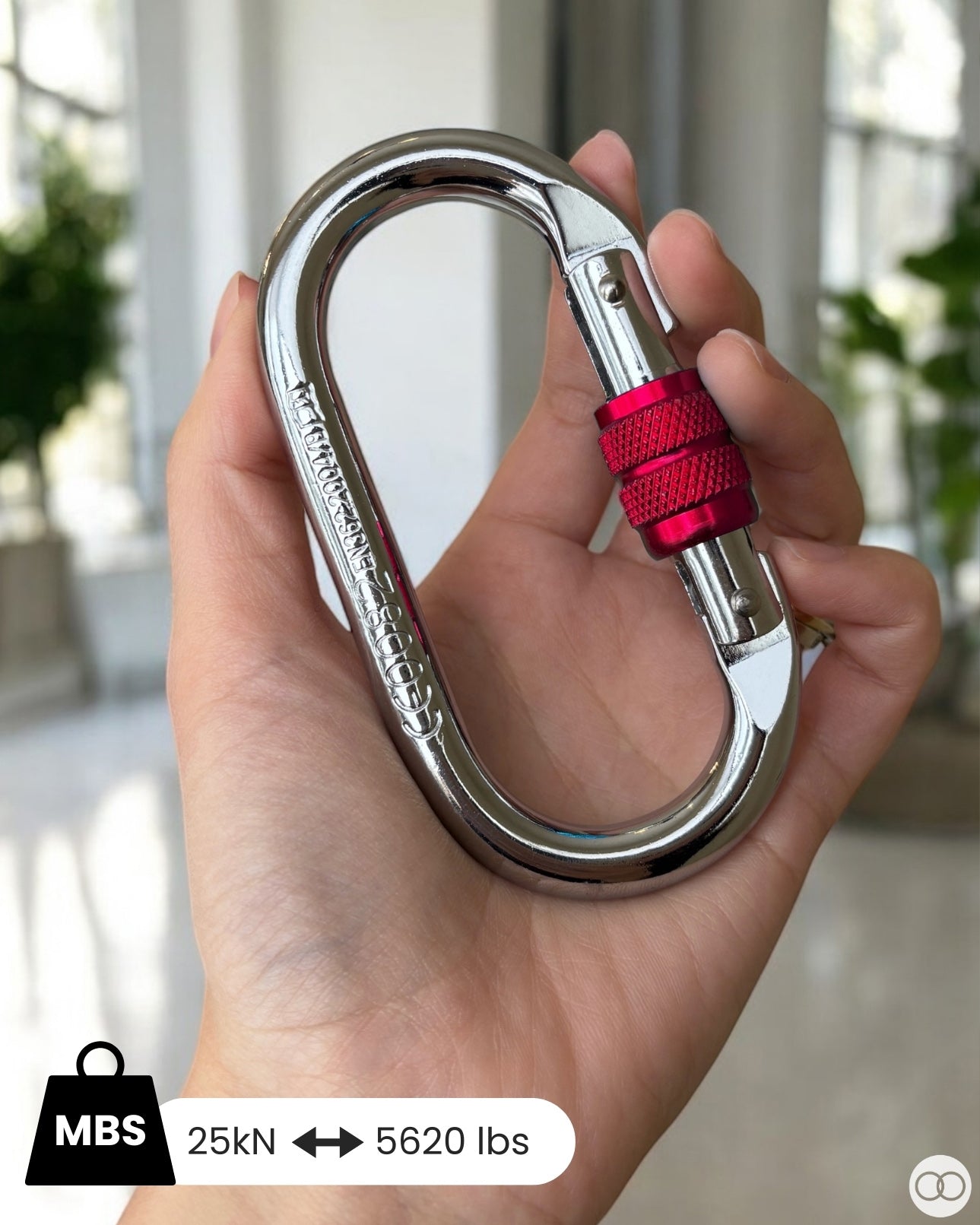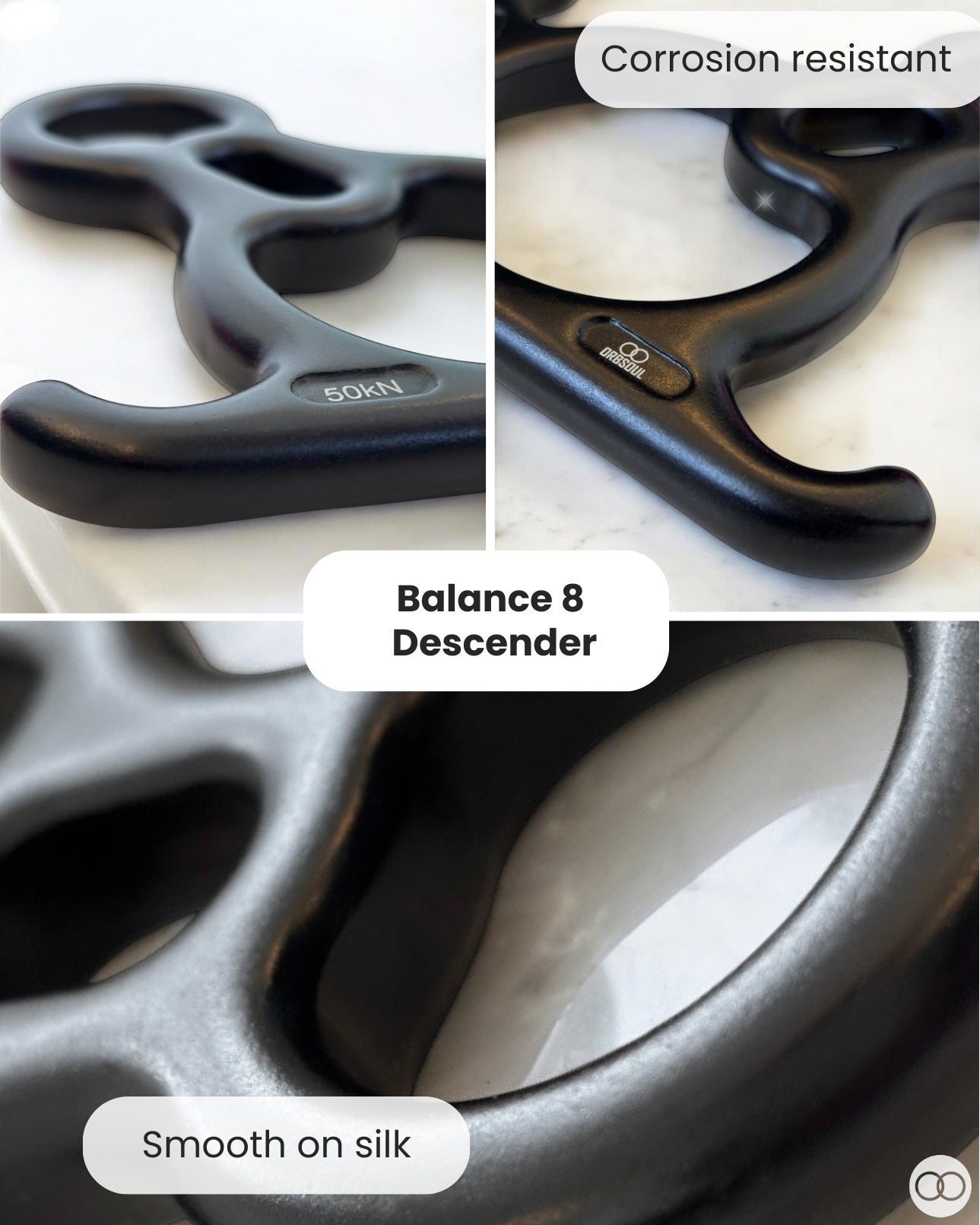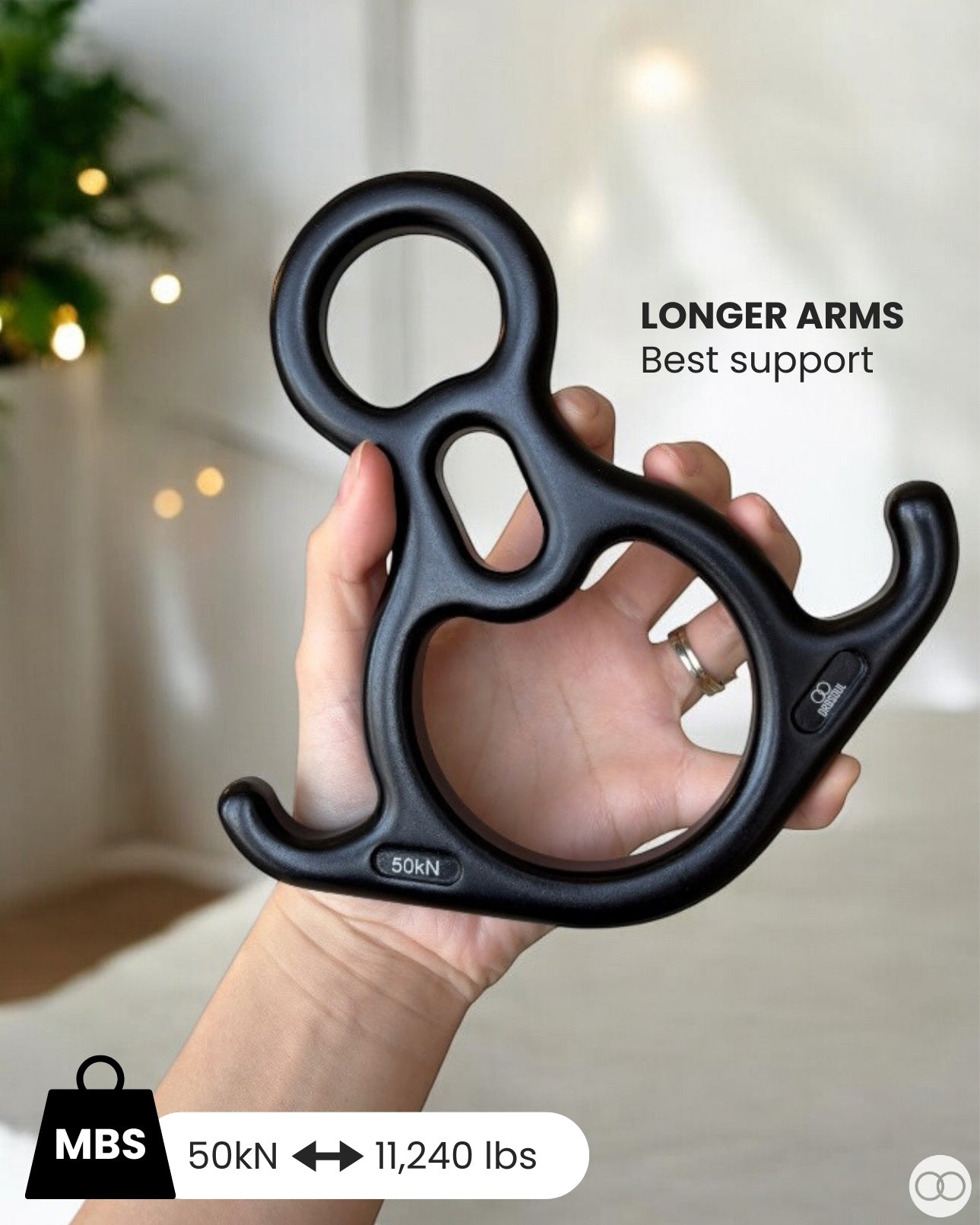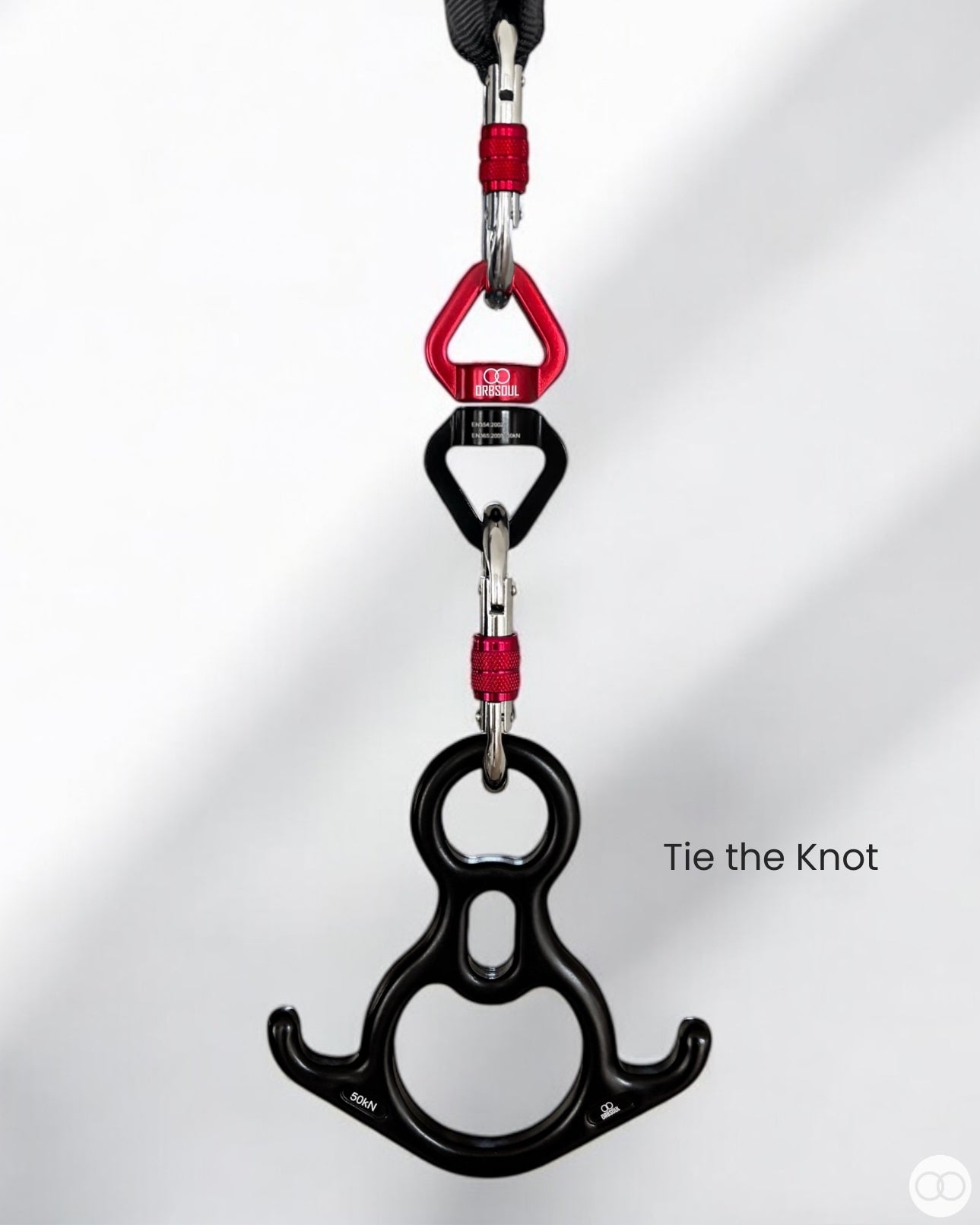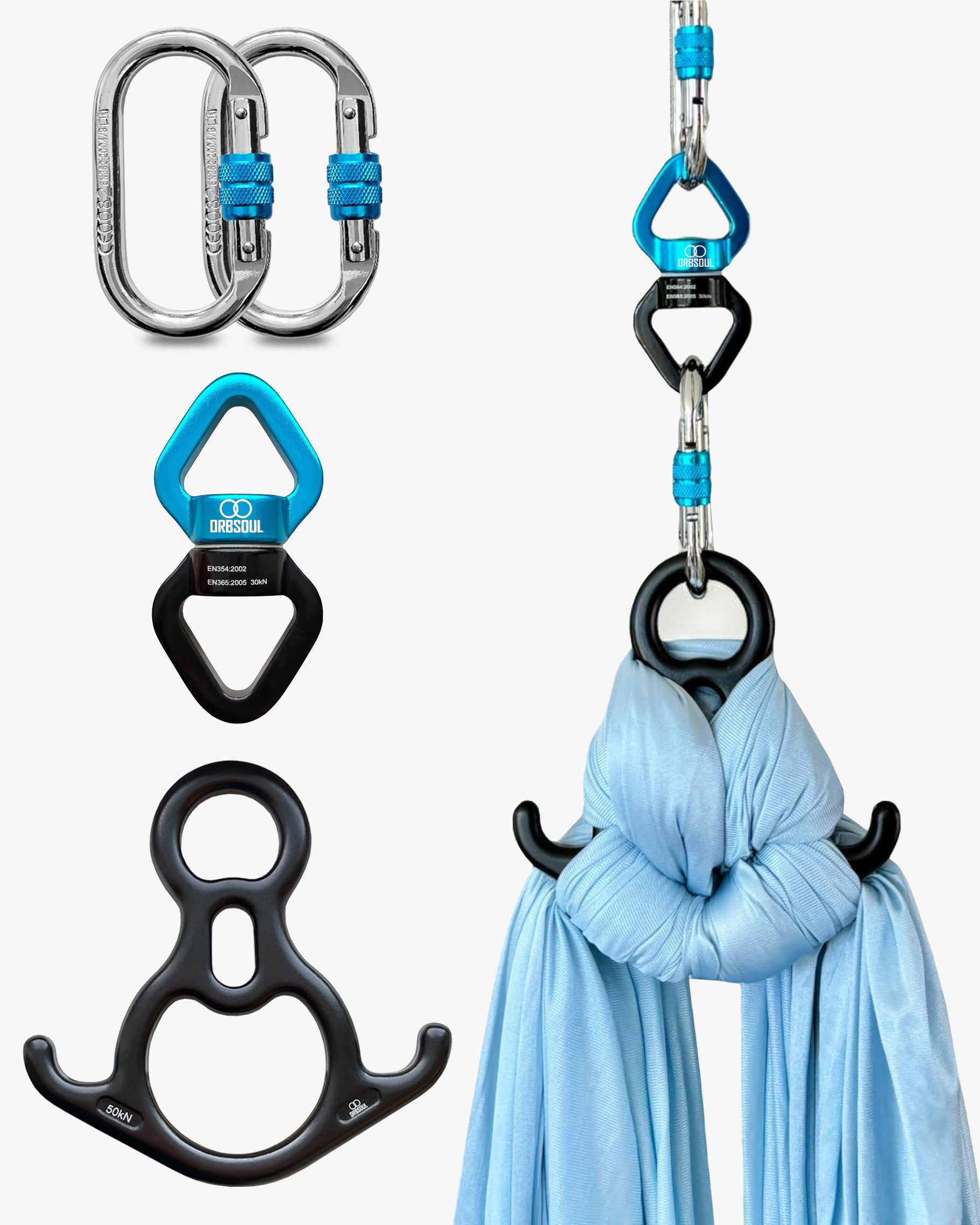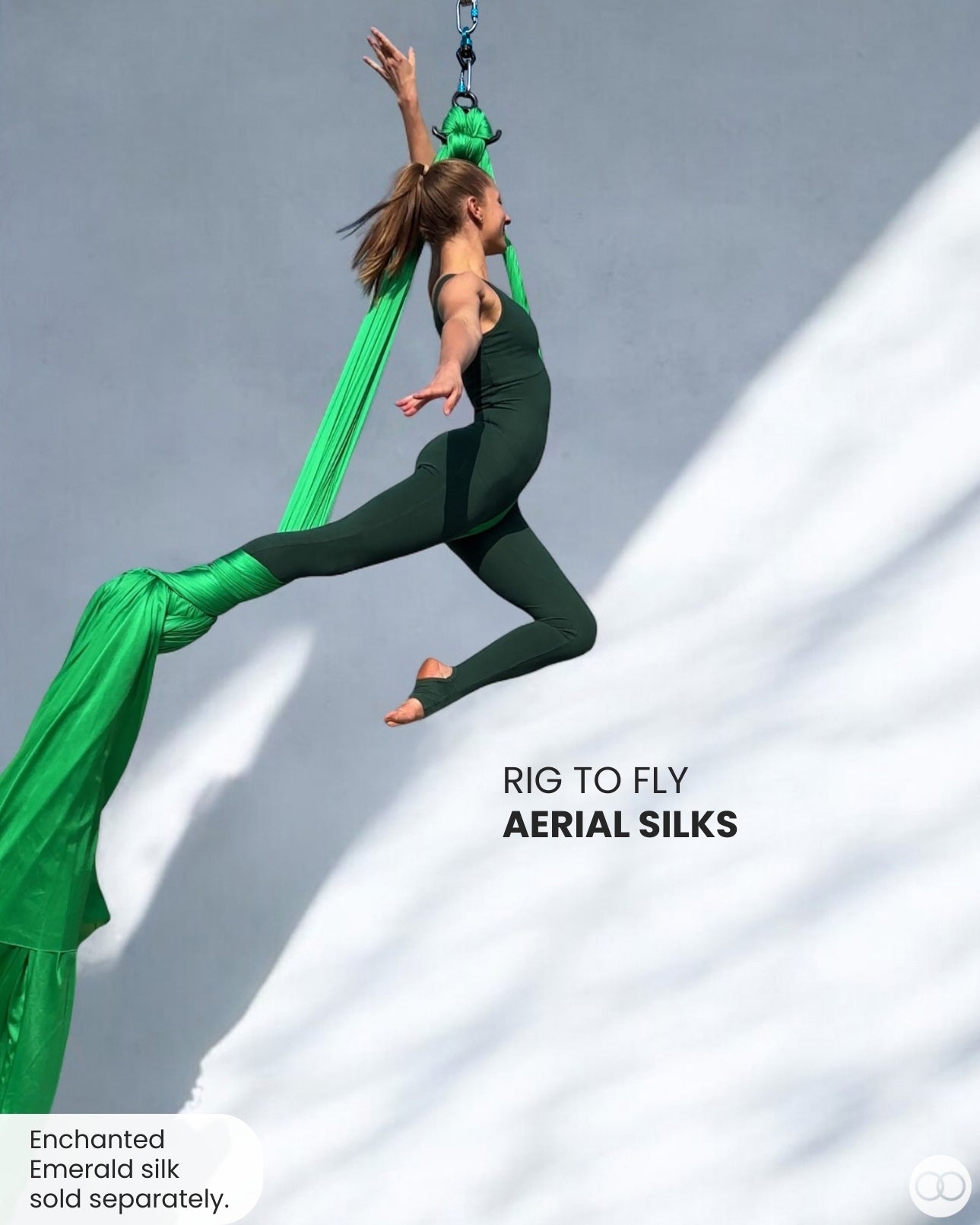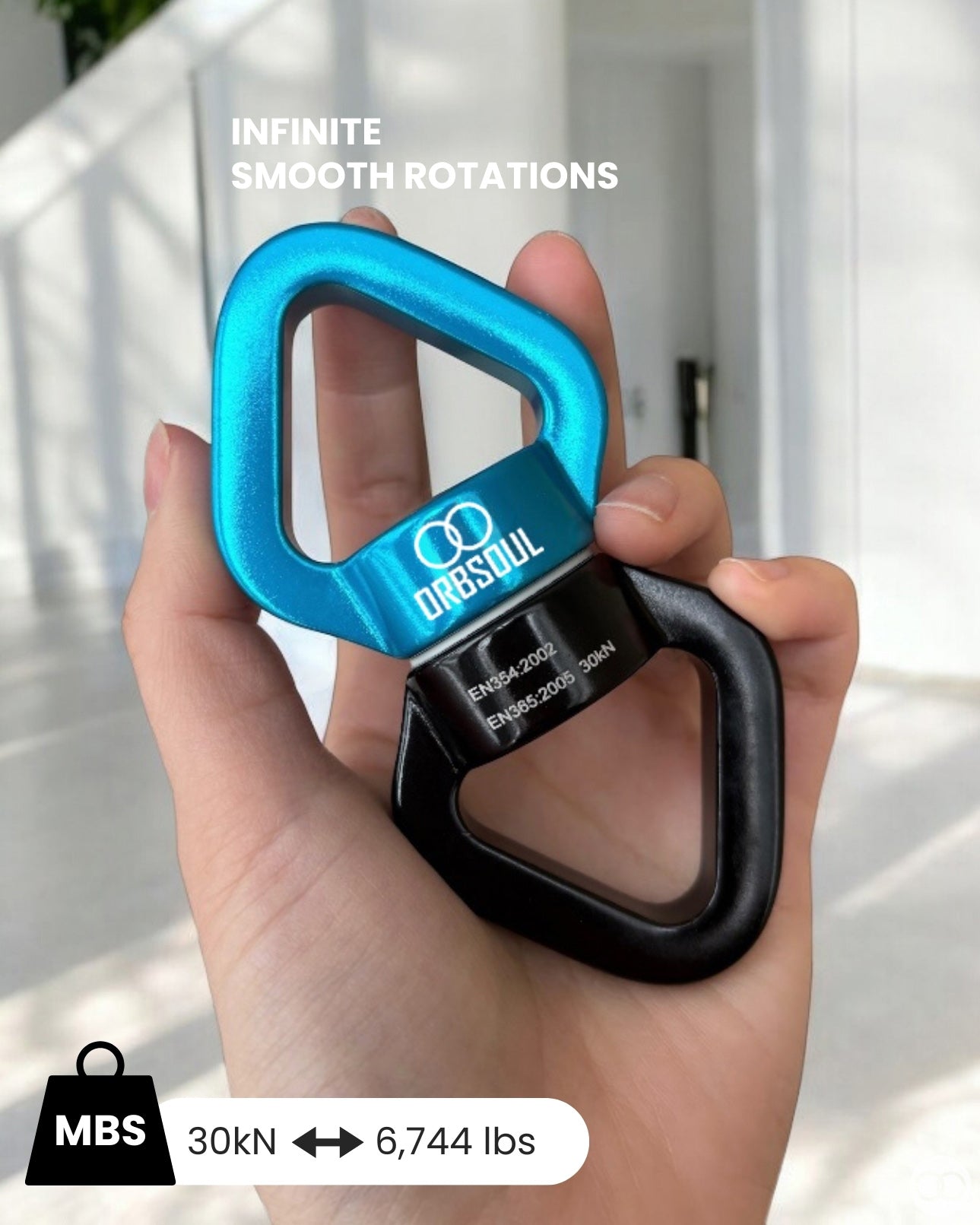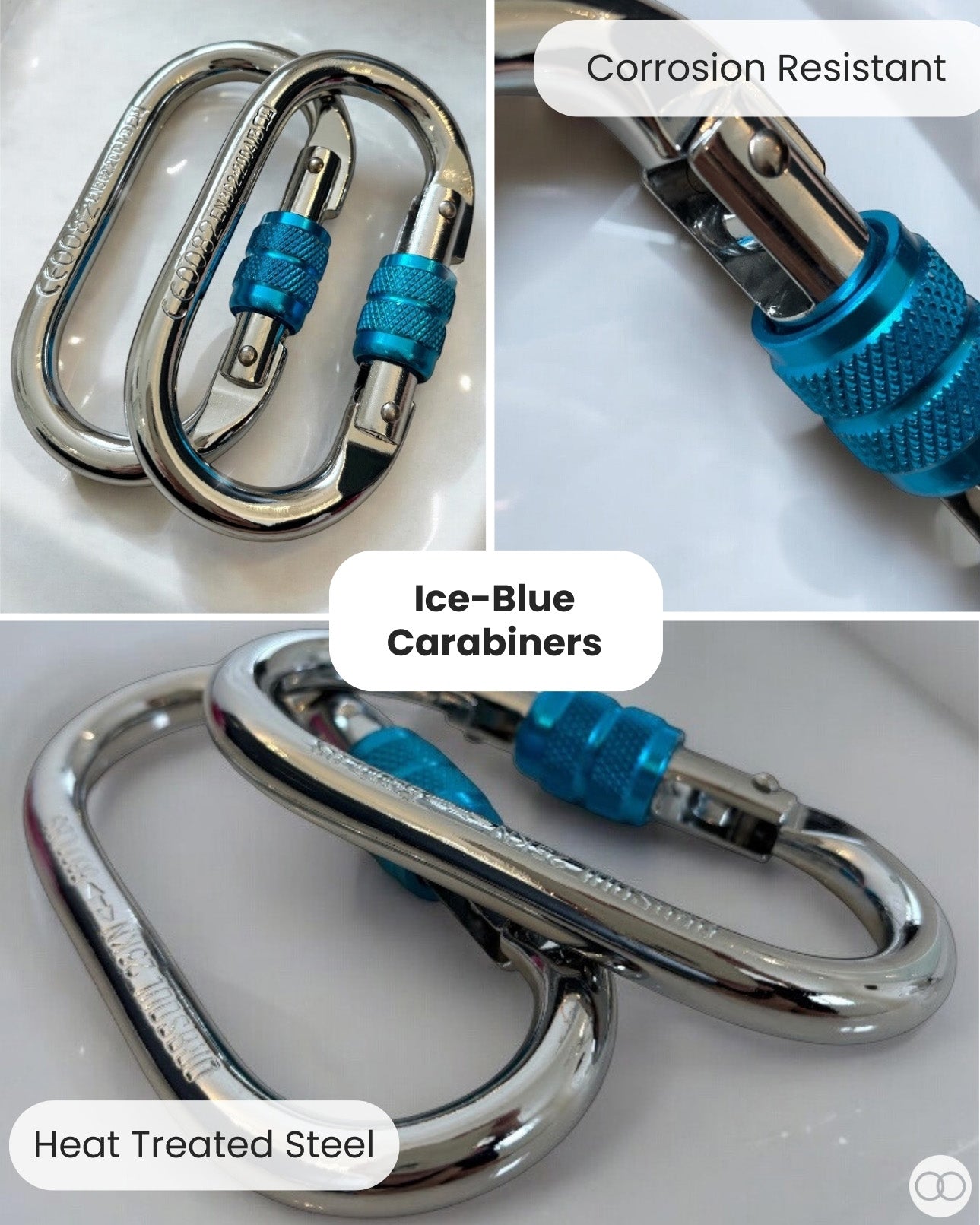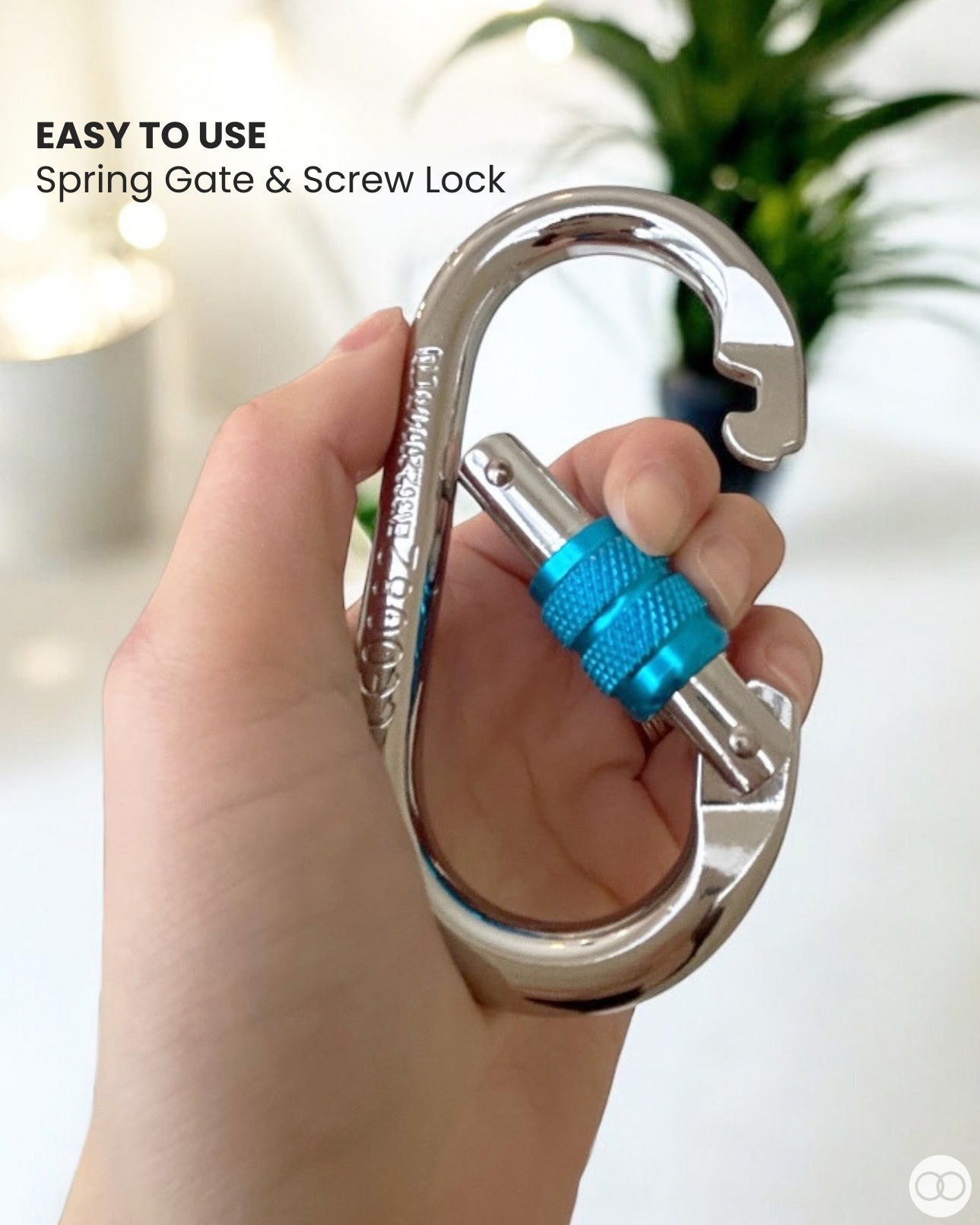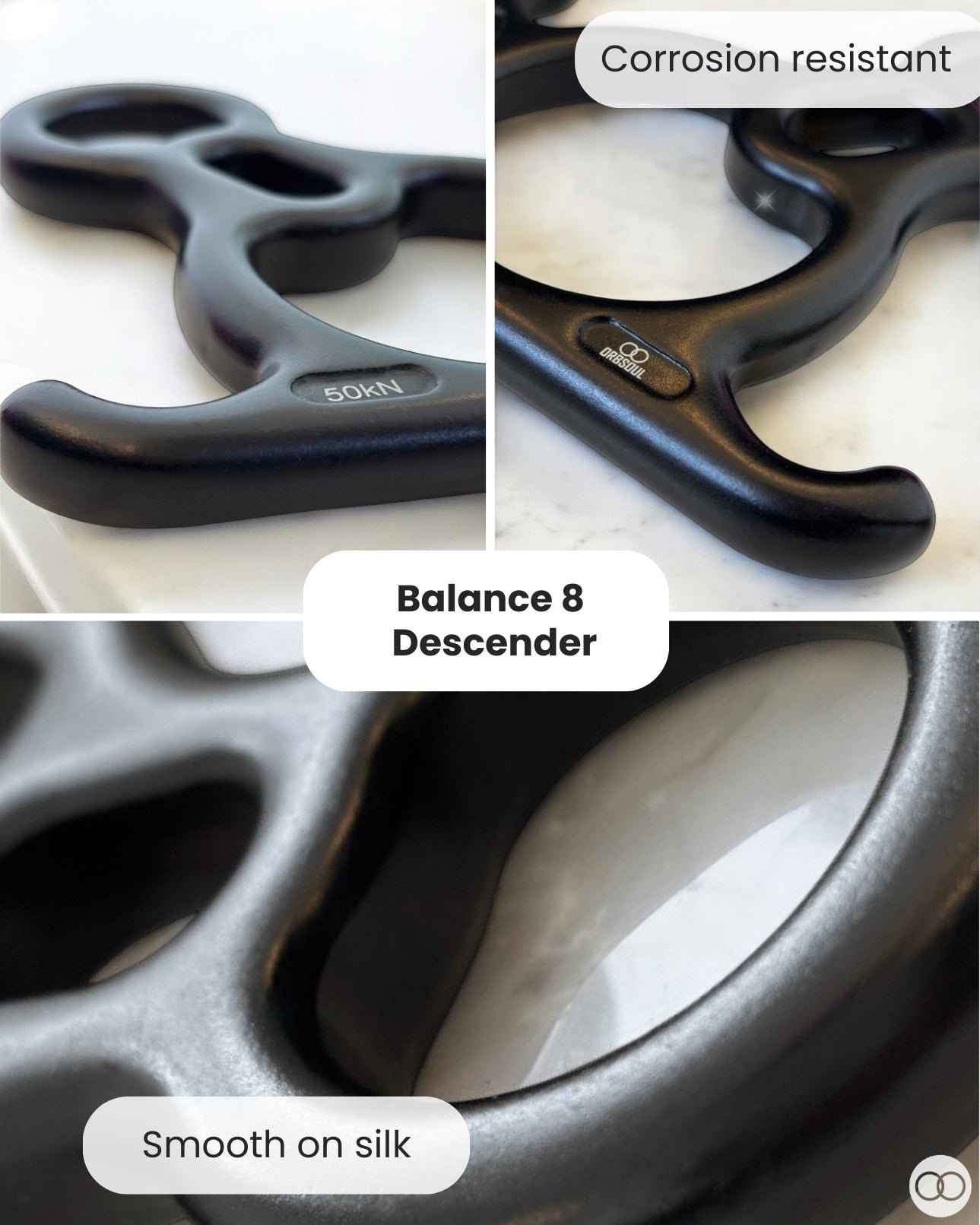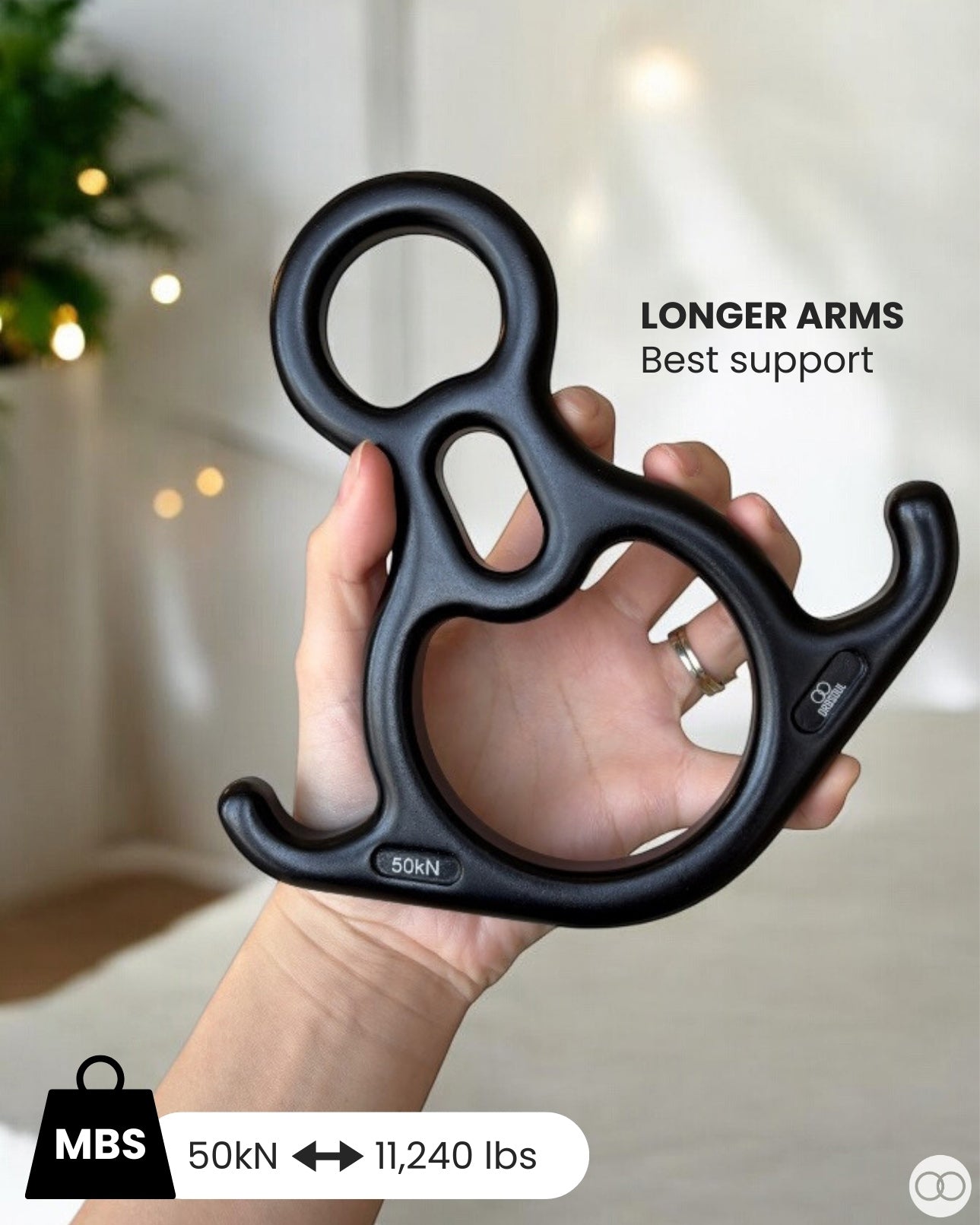Aerial Arts Safety at Home and in Studio
Your journey in aerial silks, aerial yoga, and aerial hoop is incredible! Whether you are practicing in your studio or at home, your safety and well-being is always the top priority.
Warning: Aerial arts are inherently dangerous and can result in injury or death.

1. Choose safety-tested Aerial Gear that meets industry standards
Aerial rigging is classified as Personal Protective Equipment (PPE).
There is a wide range of rigging gear out there but very rarely are they safe for aerial arts use. Aerial rigging needs to meet strict industry safety standards and regularly undergo extensive batch break-testing. This is required to ensure that your aerial rigging is strong enough to safely handle dynamic aerial loads.
2. Read the Technical Documents and Instructions For Use for your gear
Read the Instructions for Use to fully understand how to operate your equipment and stay within its safe working limits.
Safety standard aerial rigging is required to have a technical notice and instructions for use. If rigging equipment does not have documents readily available, it indicates a lack of safety standards and is not safe for aerial arts use.
Click here to access documents for your Orbsoul gear. Remember to visit regularly for the most up-to-date info on your equipment.
3. Ensure your rigging point is secure
Before installing or training on an aerial rig point (eg. airloop, aerial yoga anchor), your structure needs to be inspected by a professional to determine what loads it can handle and if it is safe for aerial rigging. If your structure is rig-ready, use strength tested anchors and straps designed for the type of aerial forces you generate.
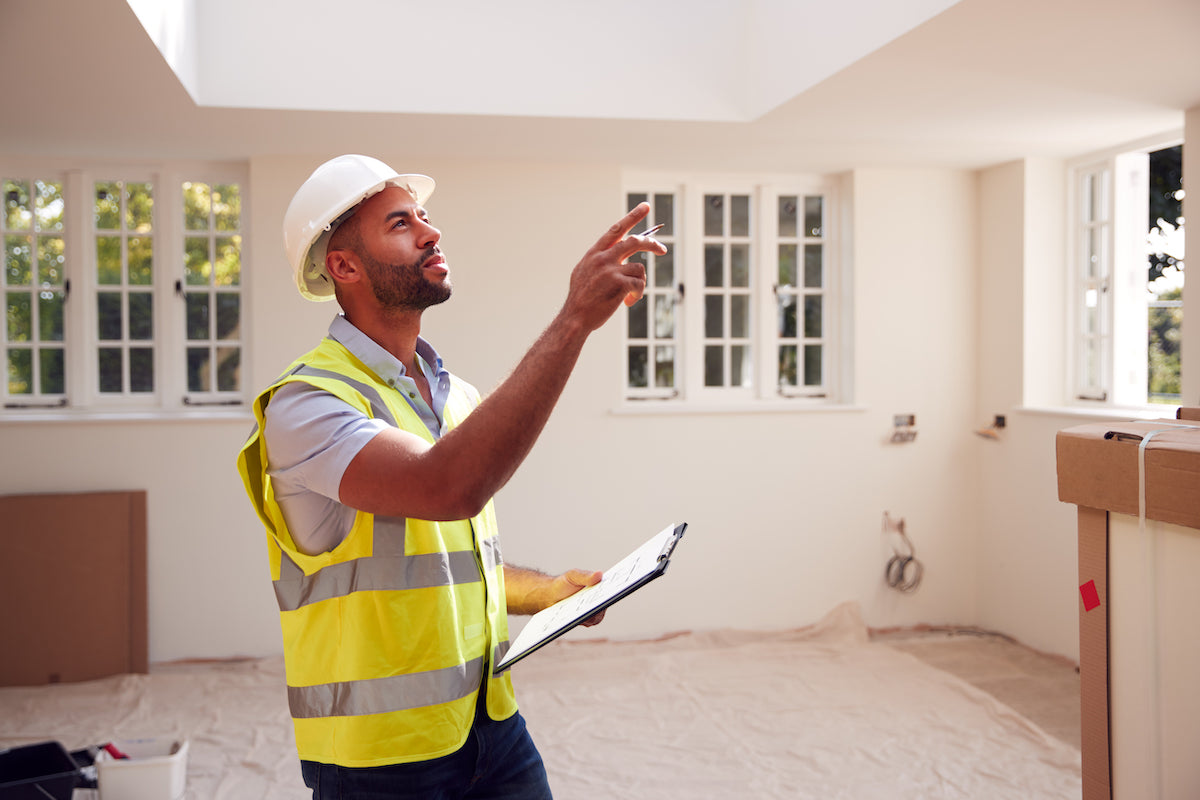
Free Standing Rigs: The drill-free, easy set-up aerial solution
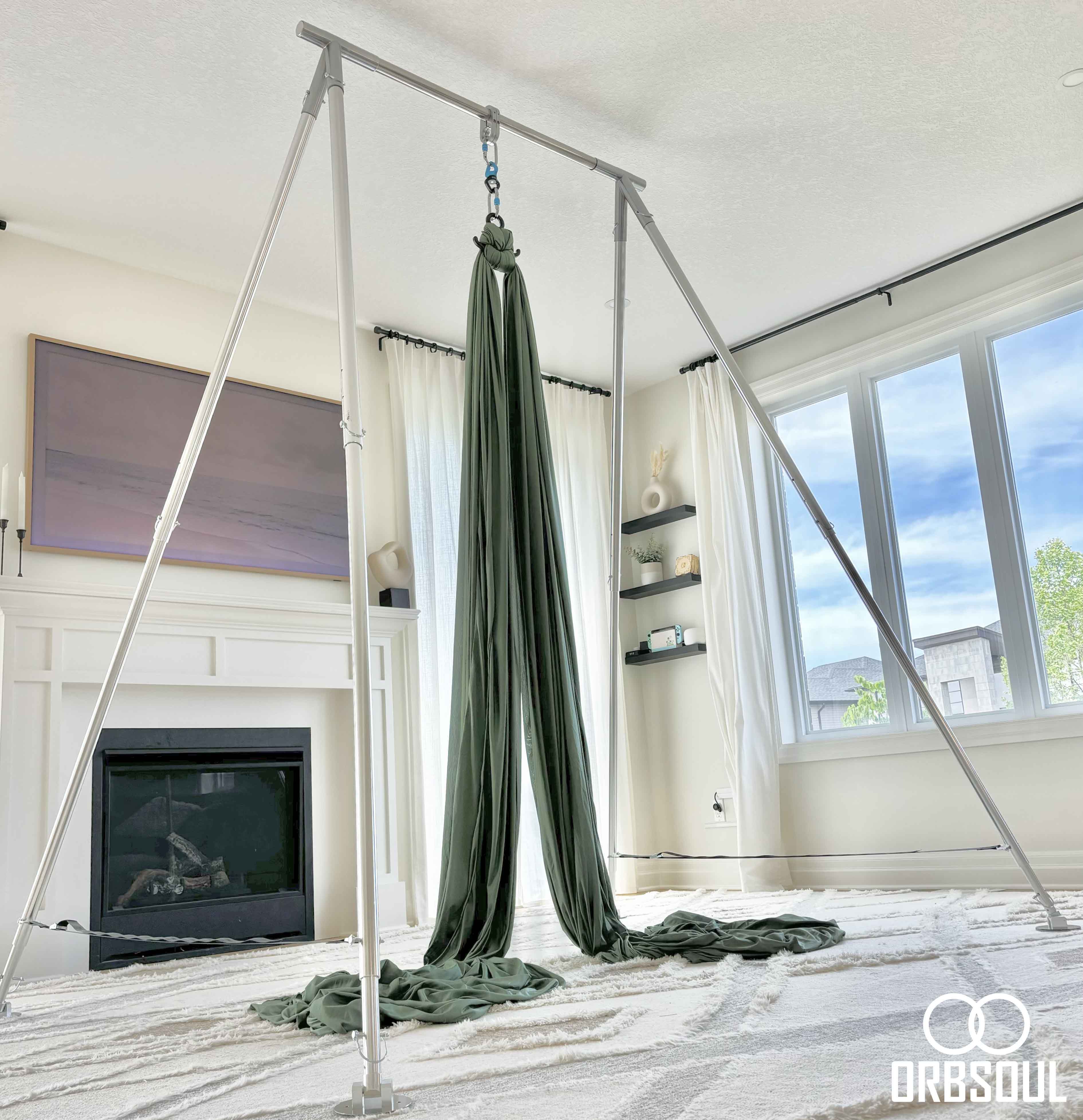
Adjustable rigs such as the Orbsoul Pegasus are often preferred for an aerial rigging point since they do not require ceiling inspection or structural installation.
Orbsoul Pegasus is custom height adjustable to best fit your space, indoors and out. It comes with storage bags to conveniently store away when not in use and is travel friendly to take with you anywhere you want to fly.
Please note:
- Stay within the safe operational limits of your rig listed in the Instructions for Use
- Injury can occur due to tipping and instability when setting up your rig outdoors. Always use the Stakes provided to properly anchor your rig on grass and other soft ground. Proper staking eliminates tipping injury risks and vastly improves stability during your outdoor aerial practice.
4. Inspect your equipment before every flight
Click here for full inspection procedures for your Orbsoul gear.
As with all PPE, it is required that you know the full history of your gear and retire immediately if you have any doubts on its performance or safety. Do not use any equipment that you suspect could be damaged in any way. Reach out to your gear provider if you have any doubts on its function and do not attempt to modify your equipment yourself. If your gear is known to have been overloaded or has been dropped from height, it is no longer safe to use and needs to be retired.
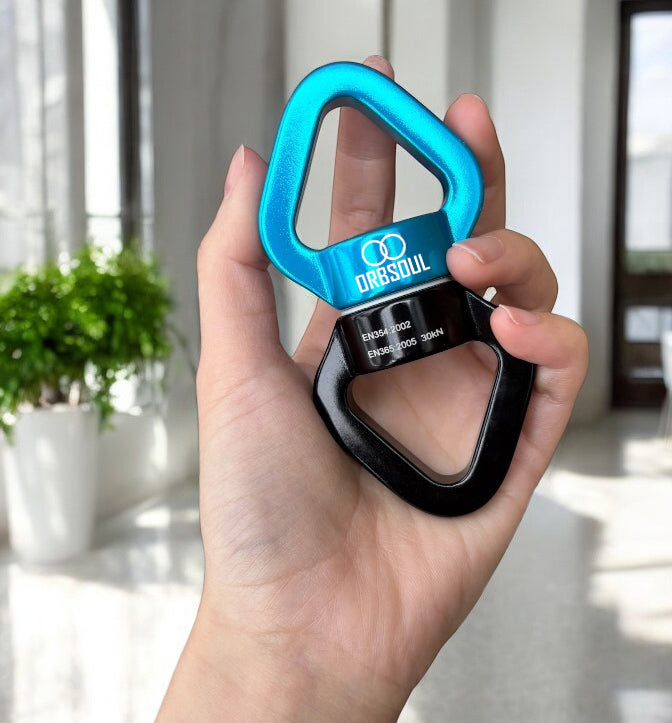
5. Use a proper crash mat suitable for aeral arts
A crash mat is a must for aerial training. It ensures a safer and more supportive training environment for aerial artists of all levels. With at least 6 inches of cushion, it softens falls to reduce injury risk so you can attempt new moves, train with confidence, and fully explore your aerial artistry.
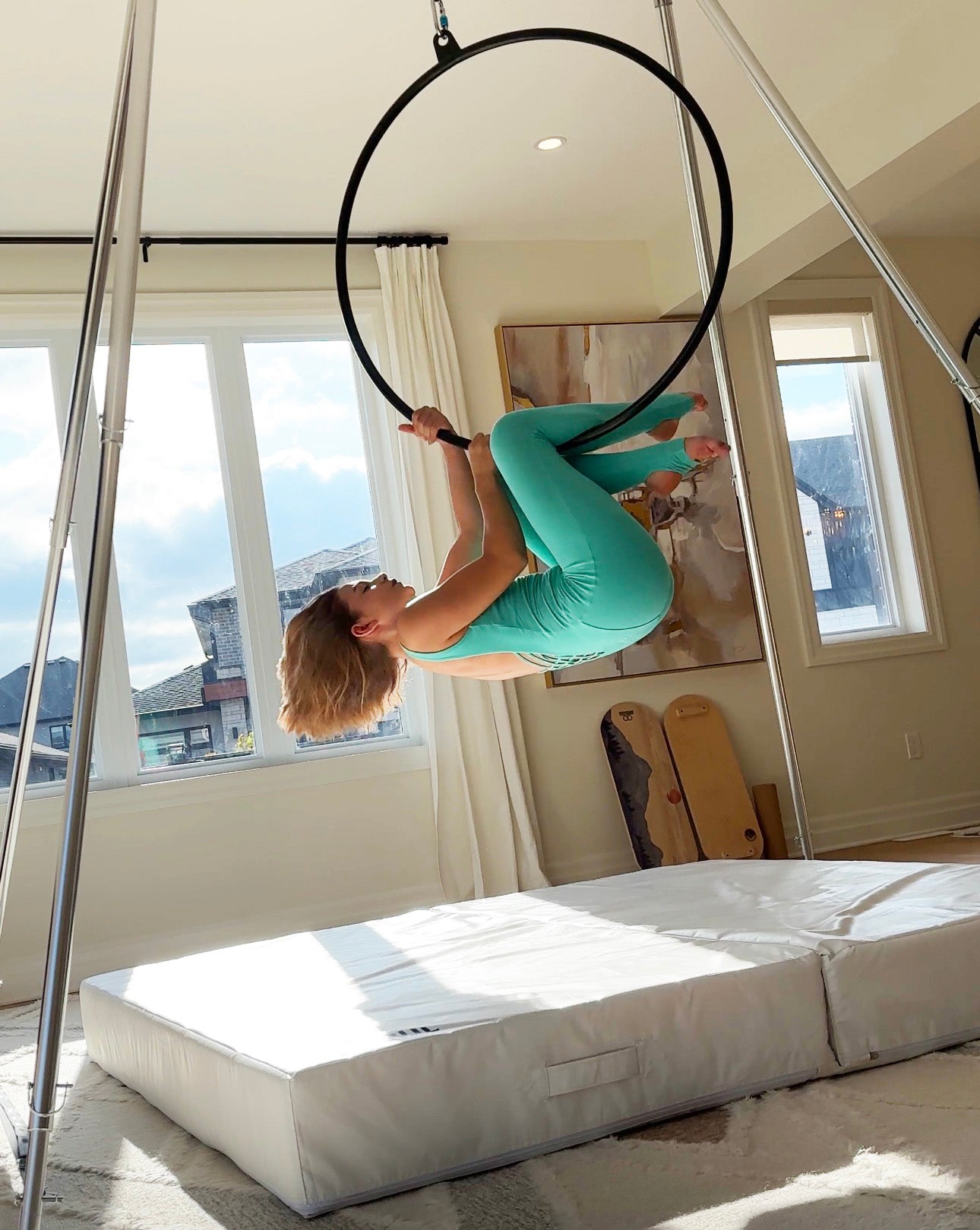
6. Never practice alone
Have somebody in the room with you in case you get stuck in a move. They need to know how to help you get down from your aerial apparatus and are able to call for more help if needed.
Warning: aerial silks have an added risk of asphyxiation due to tangles so it is crucial that you have someone close by.
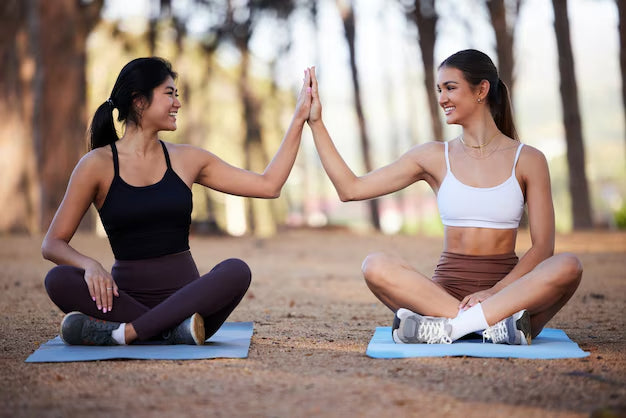
7. Wear smooth, comfortable clothing and remove jewelry before flying
Choose comfortable clothing that forms well to your body and remove any snagging jewelry so you can flow freely and safely.

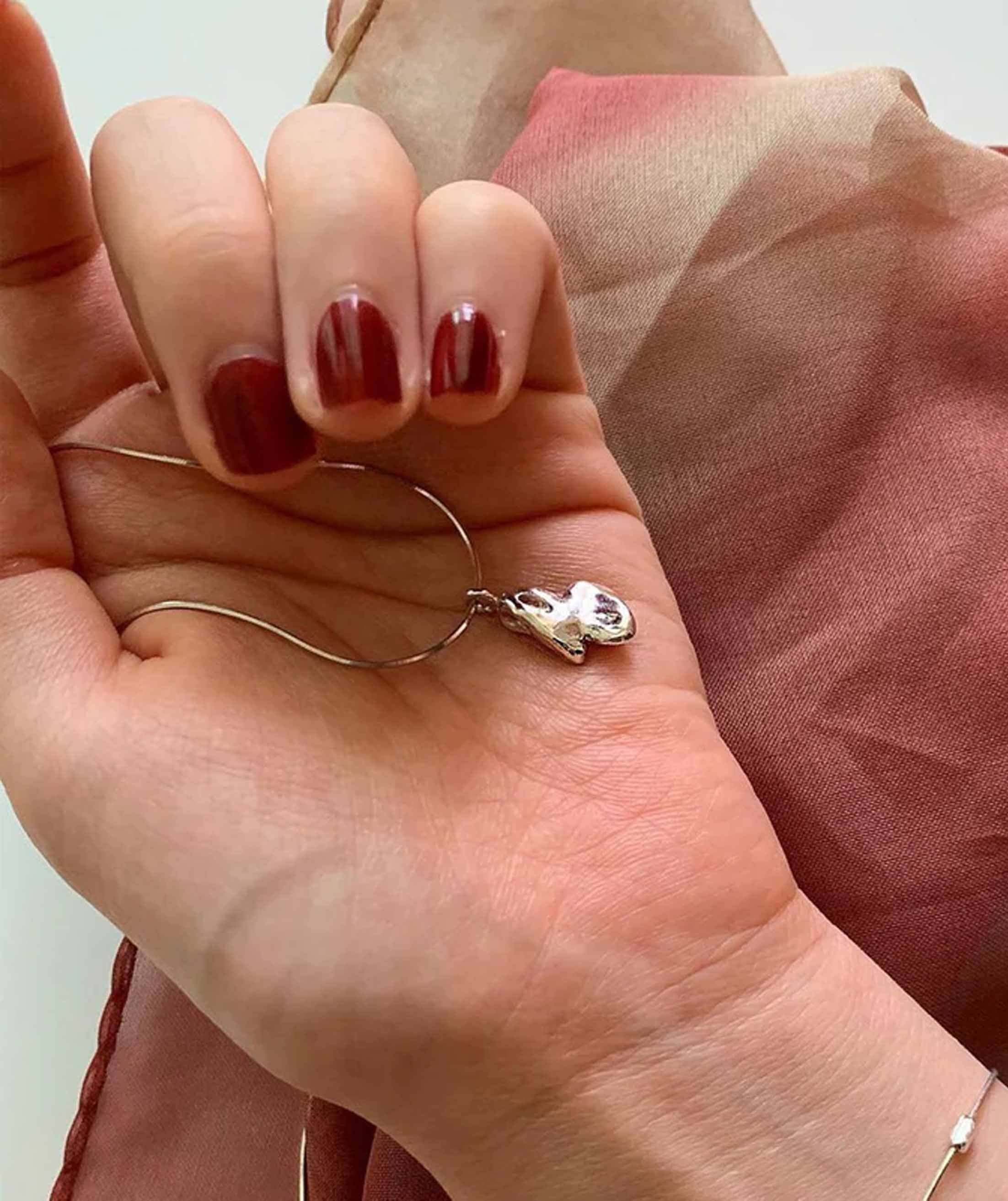
8. Learn aerial arts with professional instructors
Studio training with your favorite instructor is the ultimate way to grow. You can also deepen your aerial practice through training safely at home. With the right home aerial setup, you gain more time in the air to build strength, aerial condition, and refine your aerial skills. Consistent aerial training results in a rock-solid foundation and you will show up to your studio ready to unleash your full potential.
Keep showing up, keep soaring.
Other important things to consider:
- Move at your own pace. It's the perfect pace.
- Warming up first is the best way to get the most out of your time in the air and prevent injuries.
- Acknowledge and celebrate yourself and your accomplishments.
- Feed your body well, keep hydrated, rest often, and focus on your needs.
- Connect often with your aerial community.
- Express your ideas, experiences, and milestones. Your voice is valued.

